Skip to content


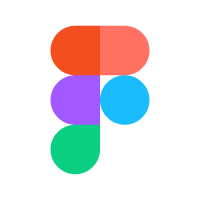









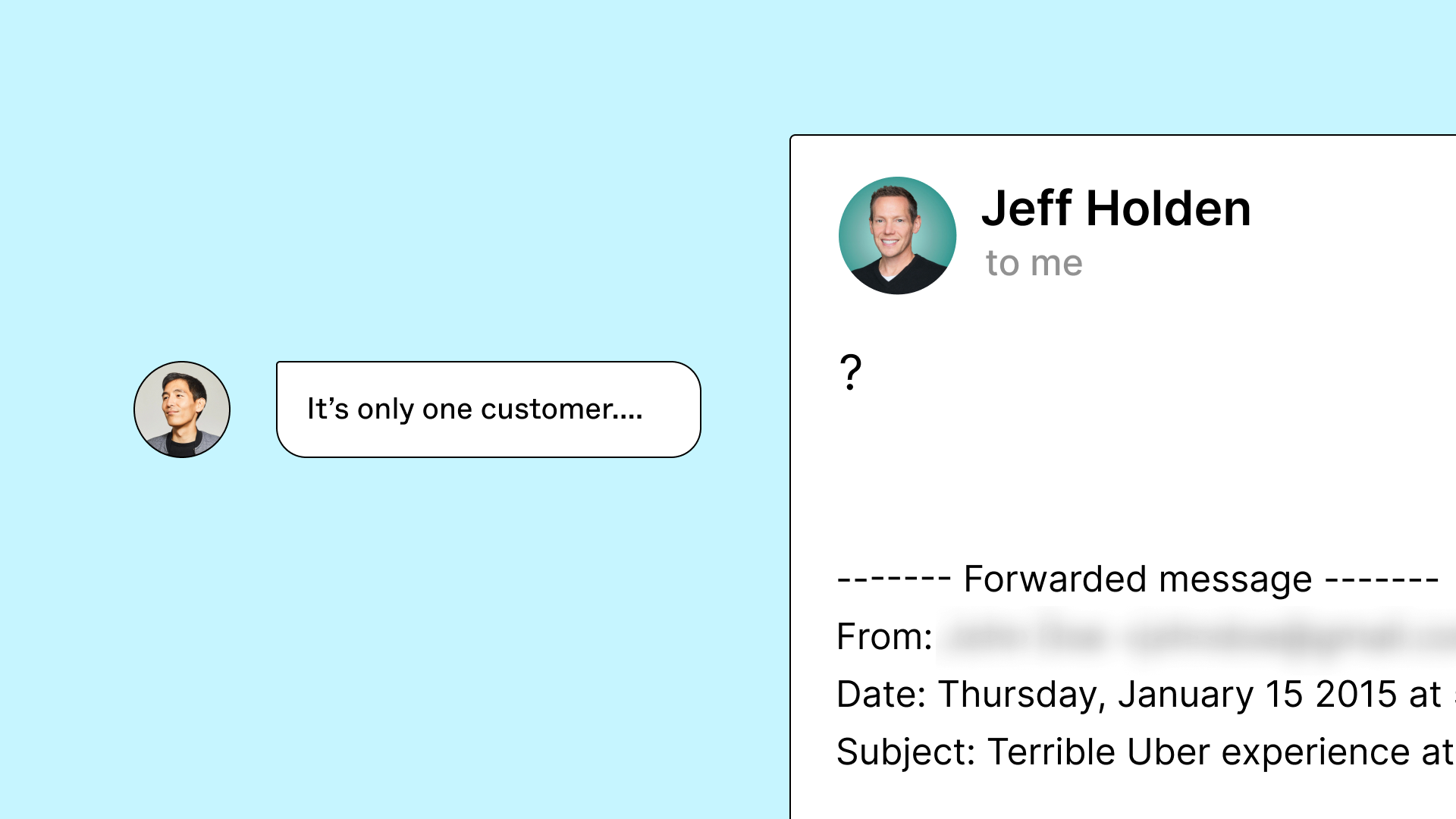


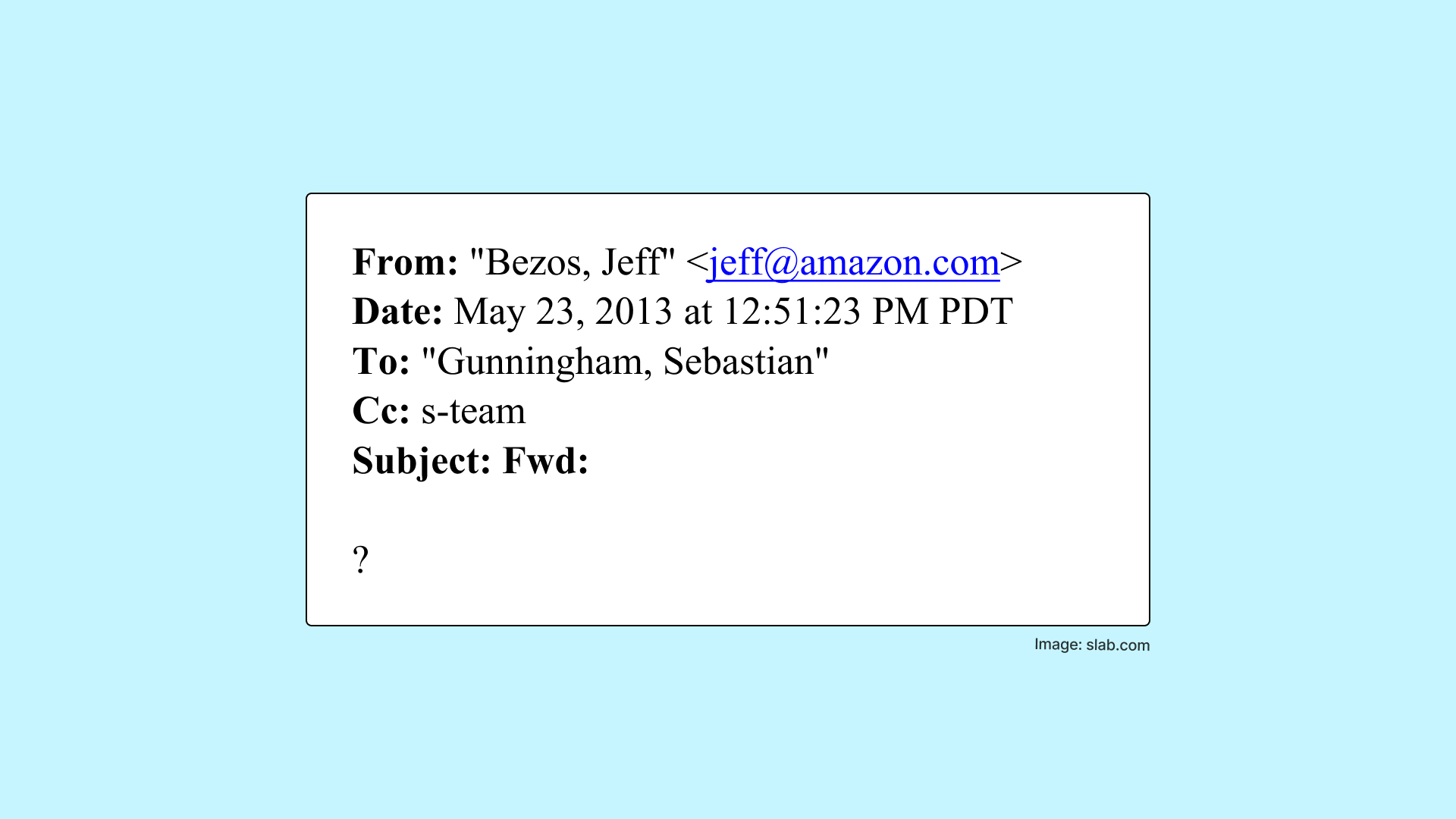


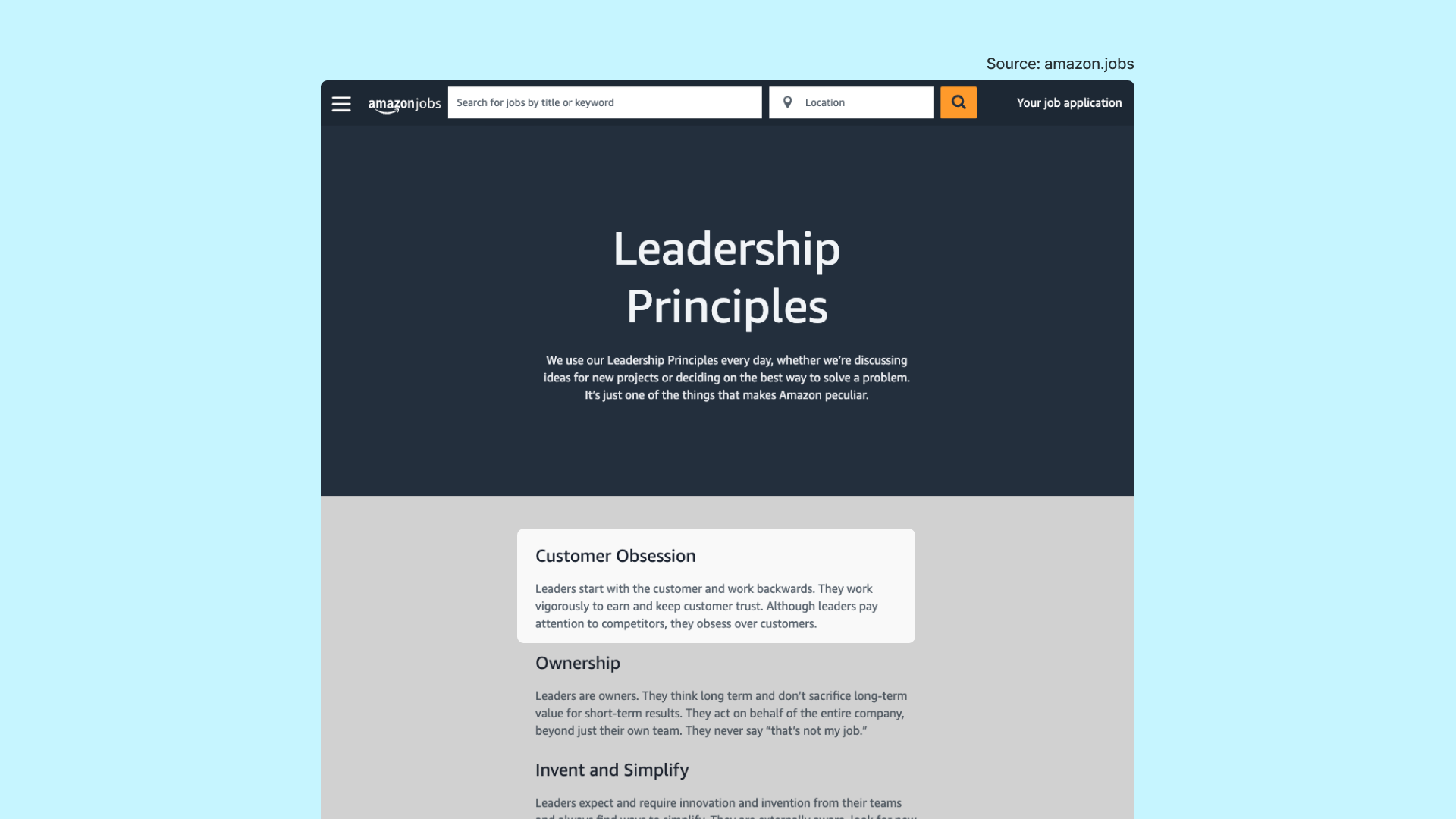


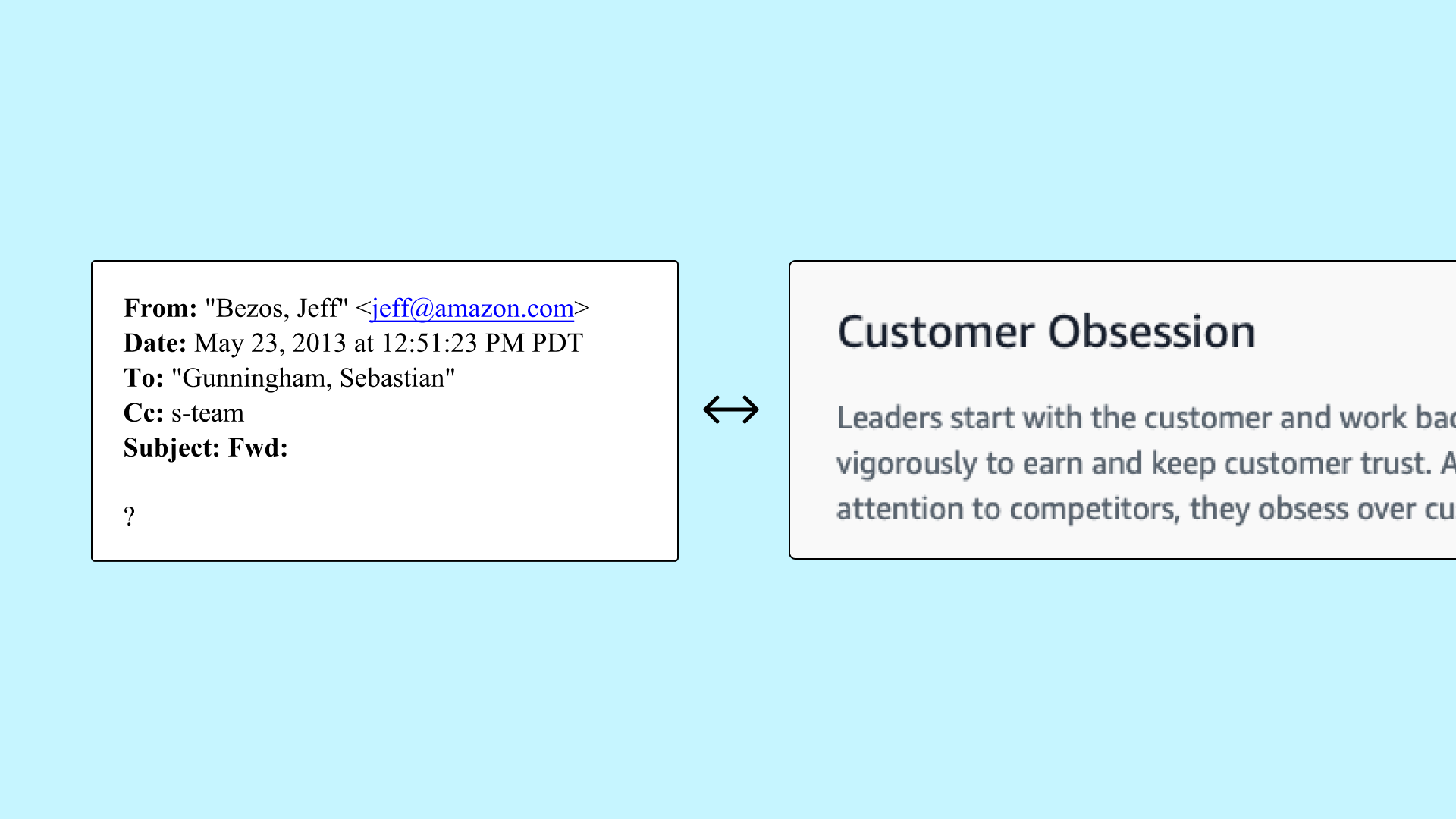


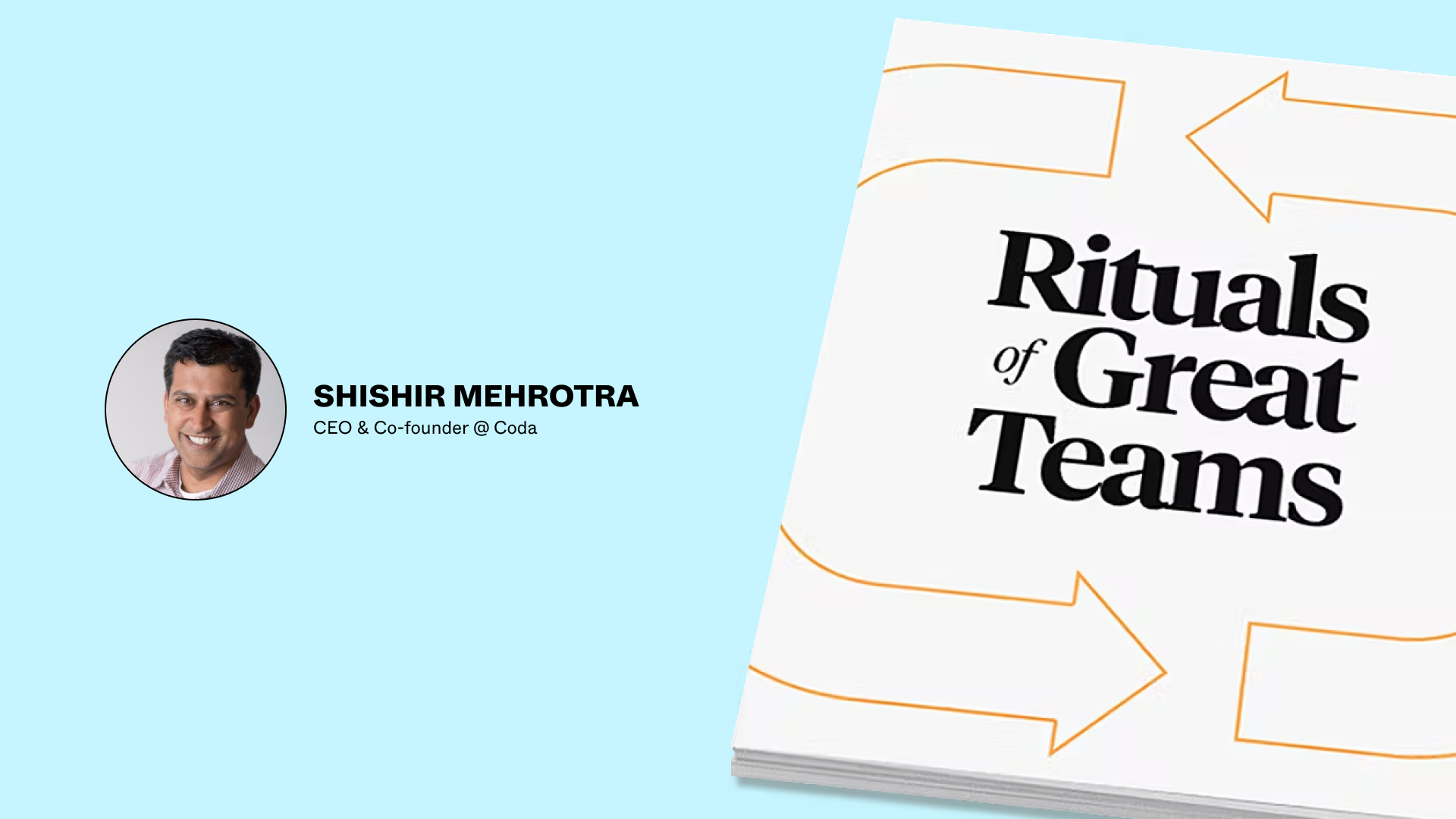








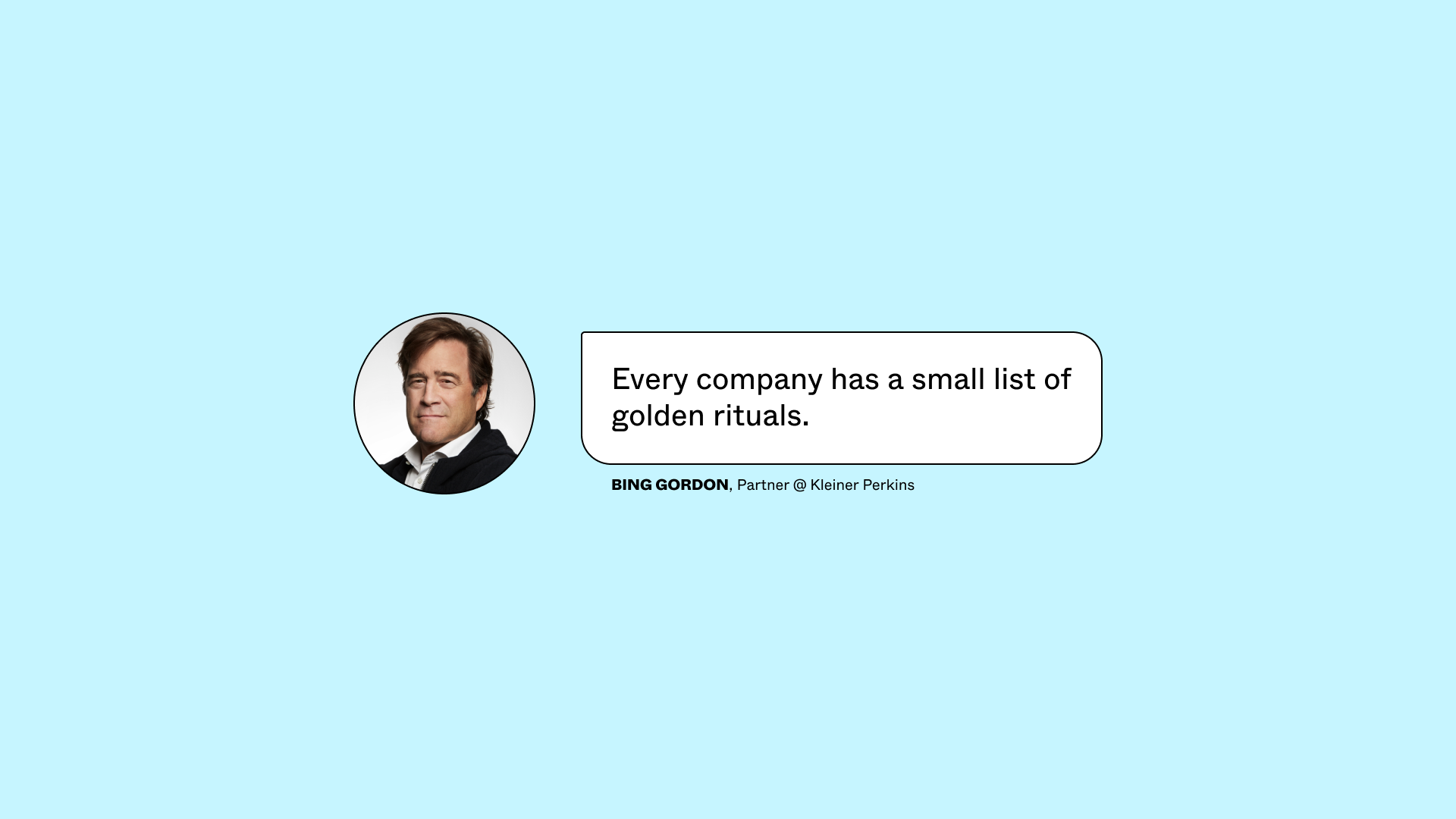
 They are namedEvery employee knows by first FridayThey are templated
They are namedEvery employee knows by first FridayThey are templated
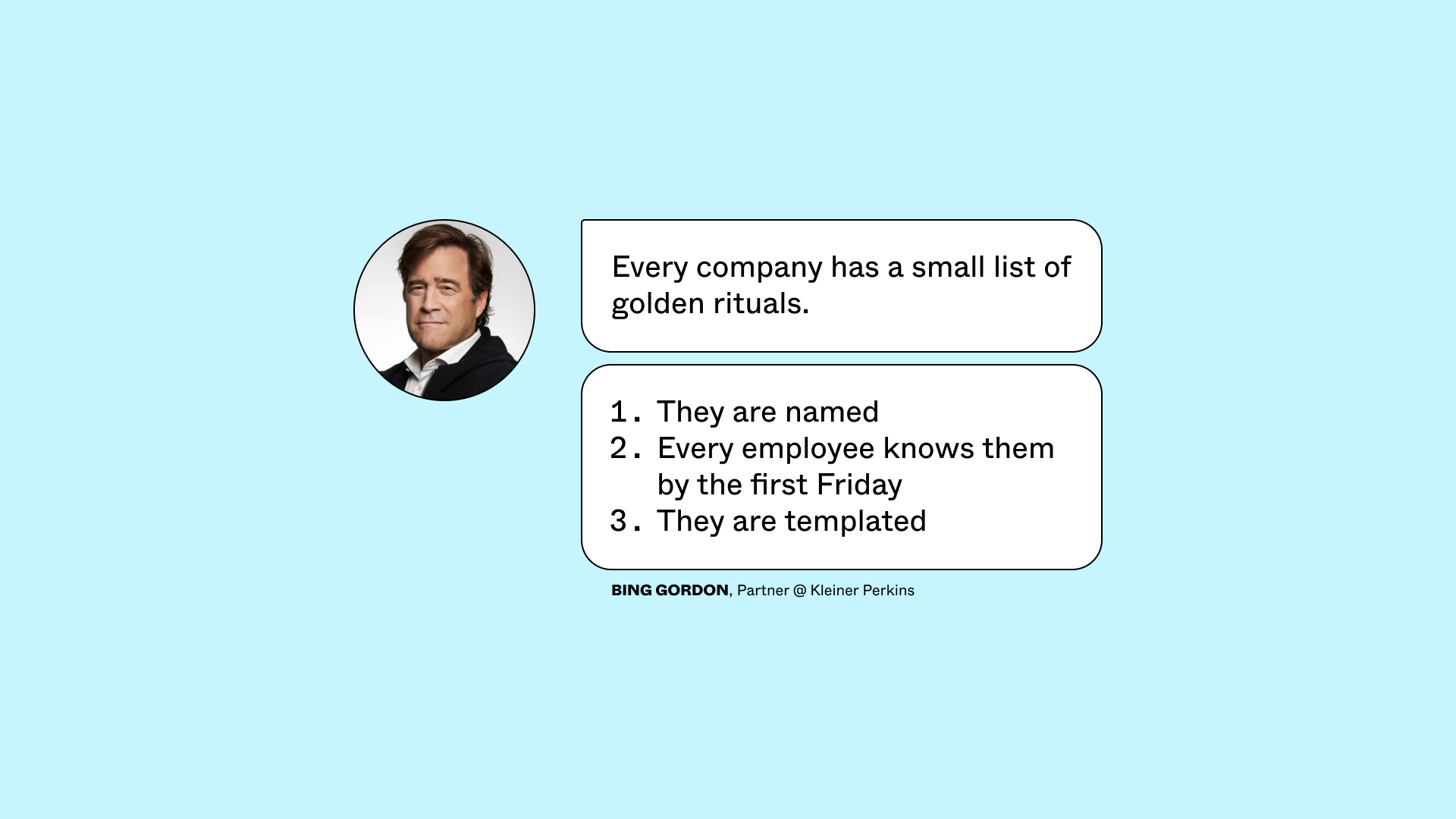





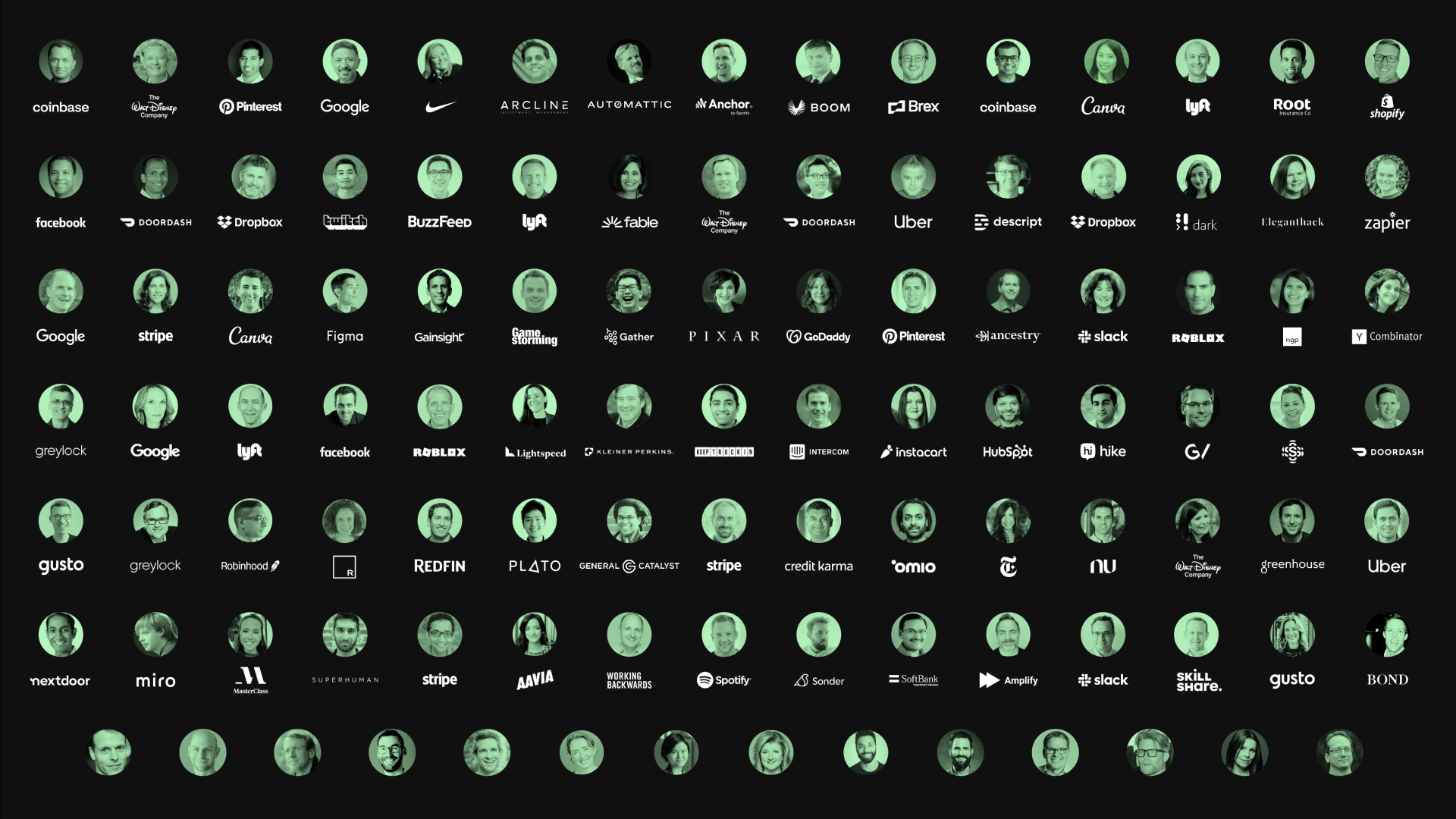











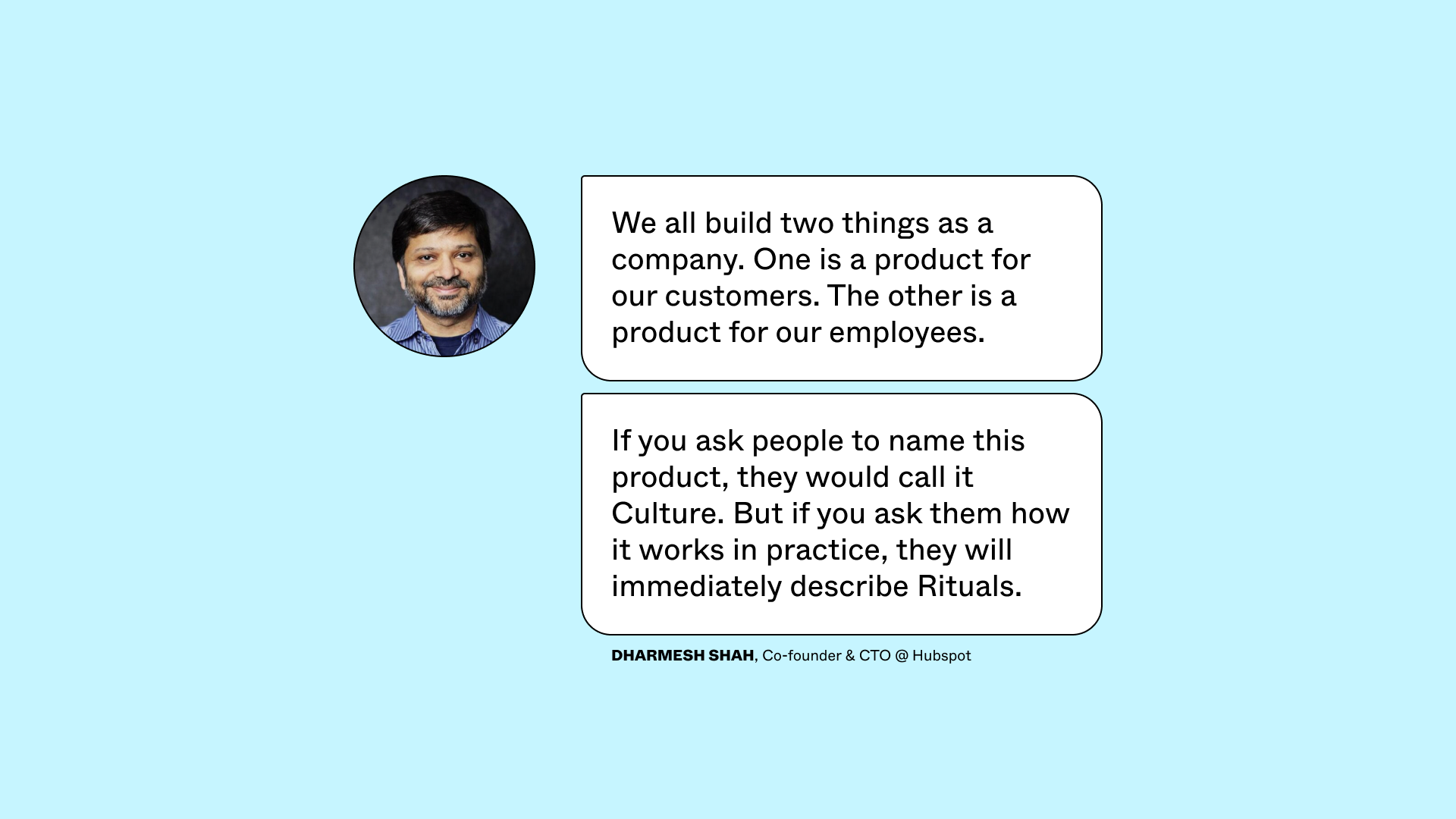


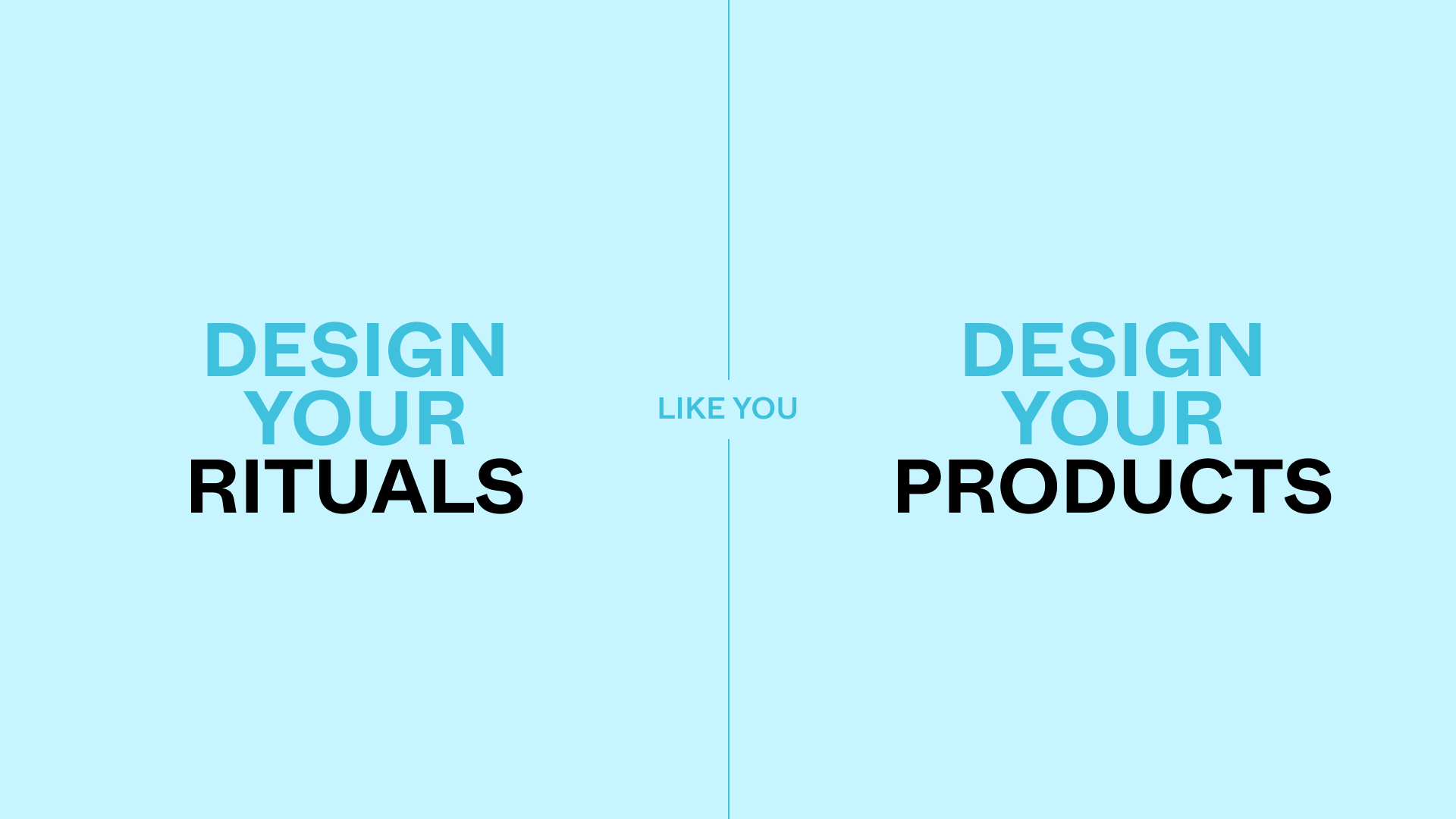





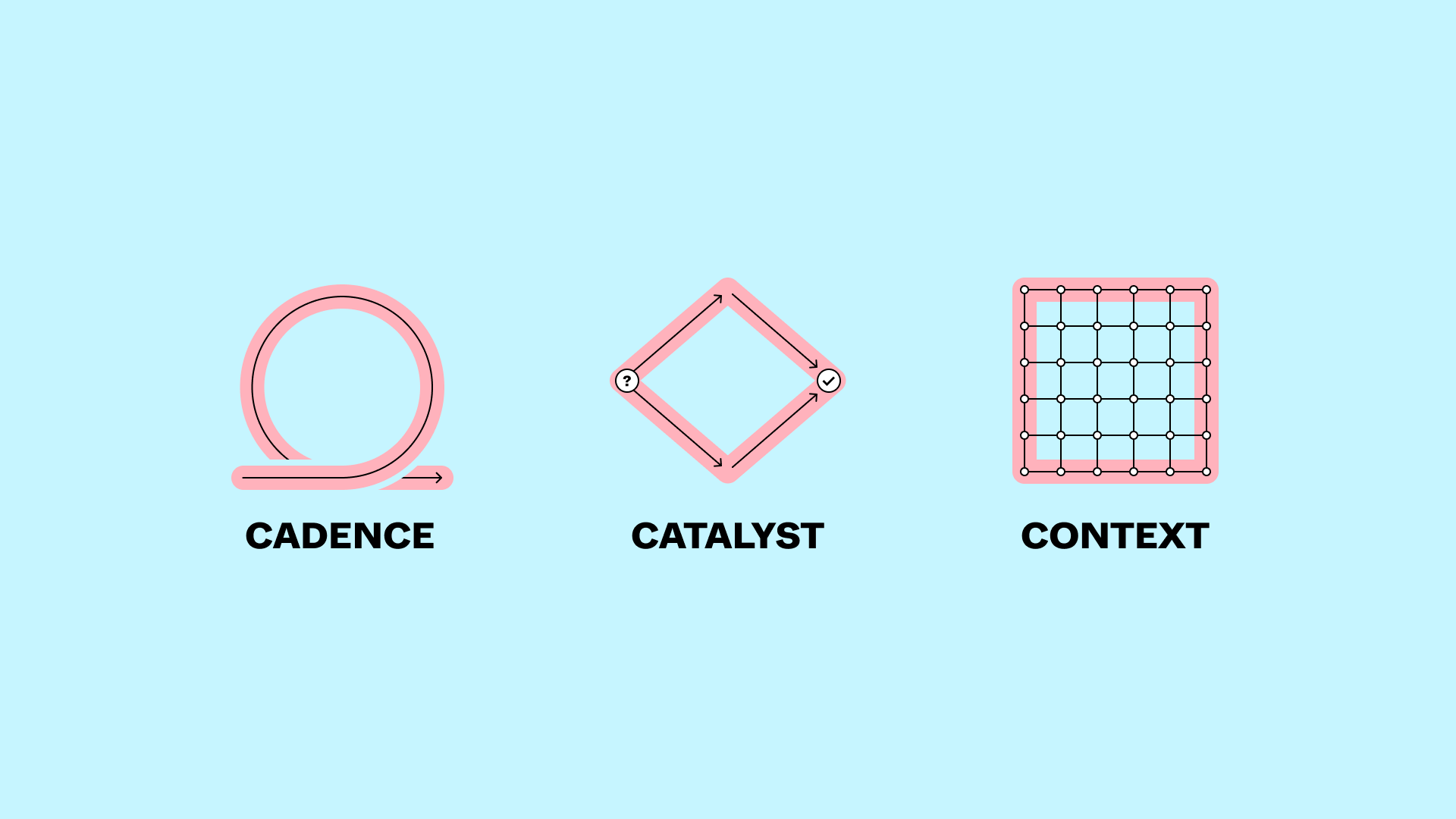


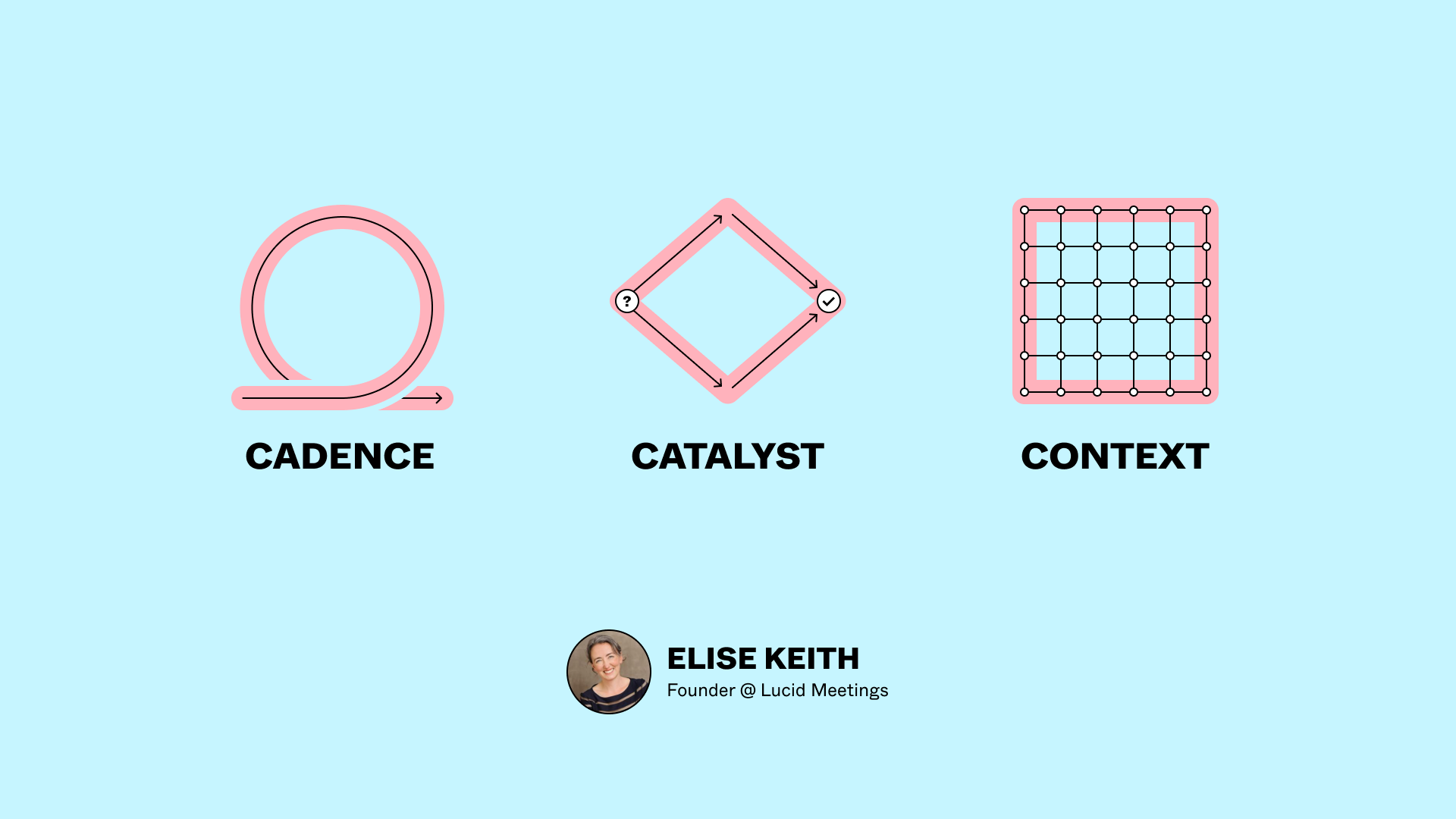





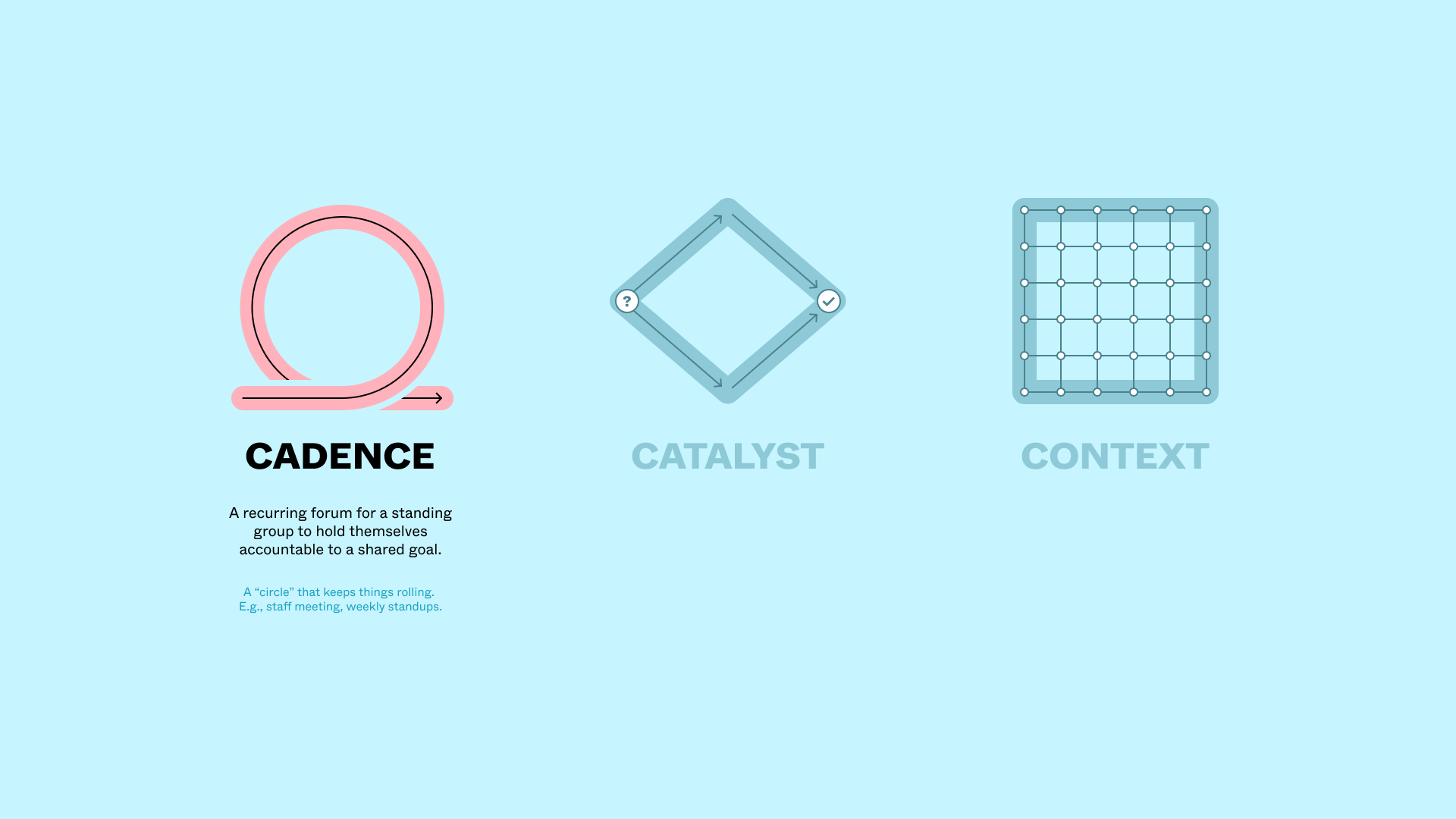





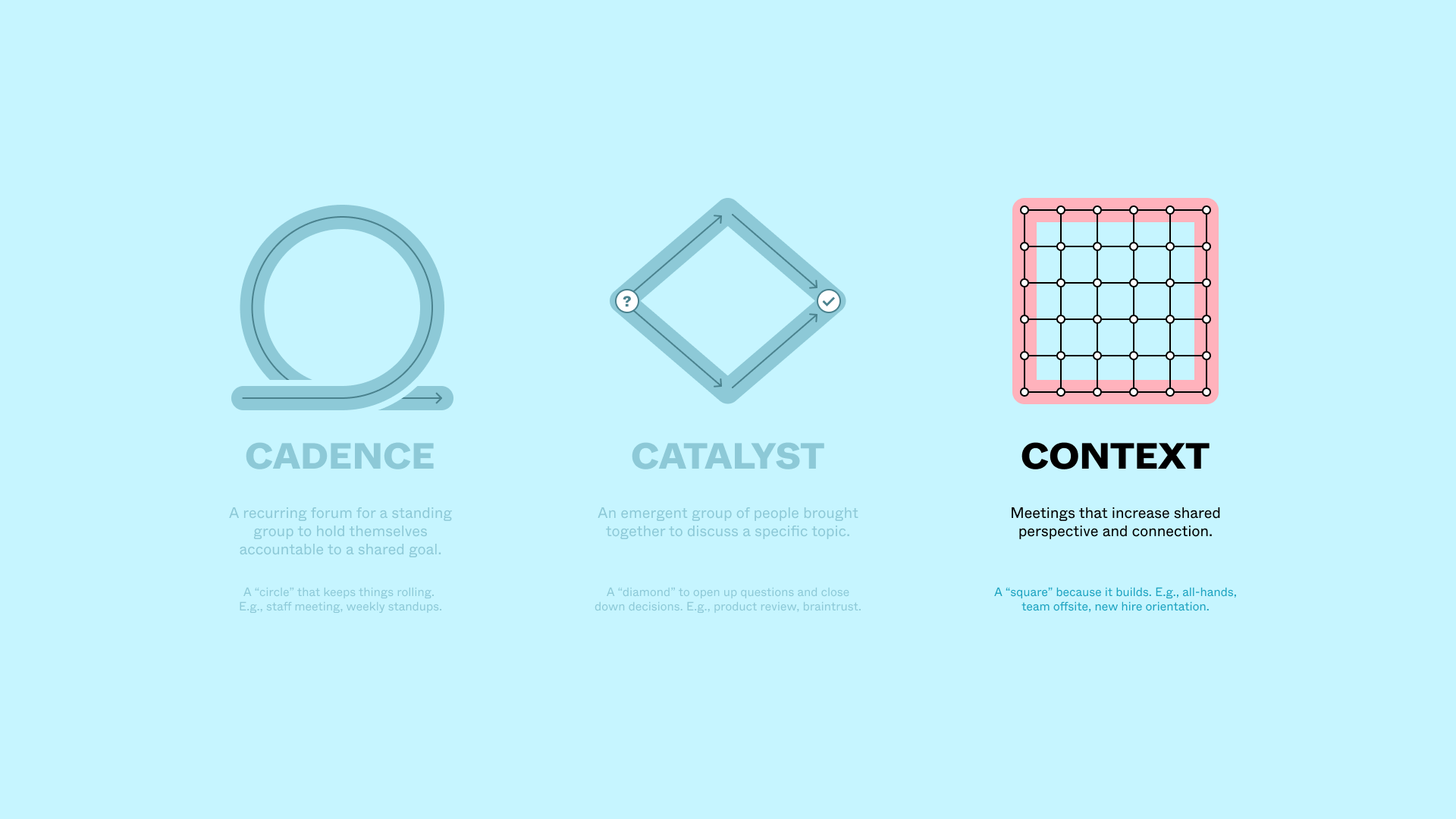


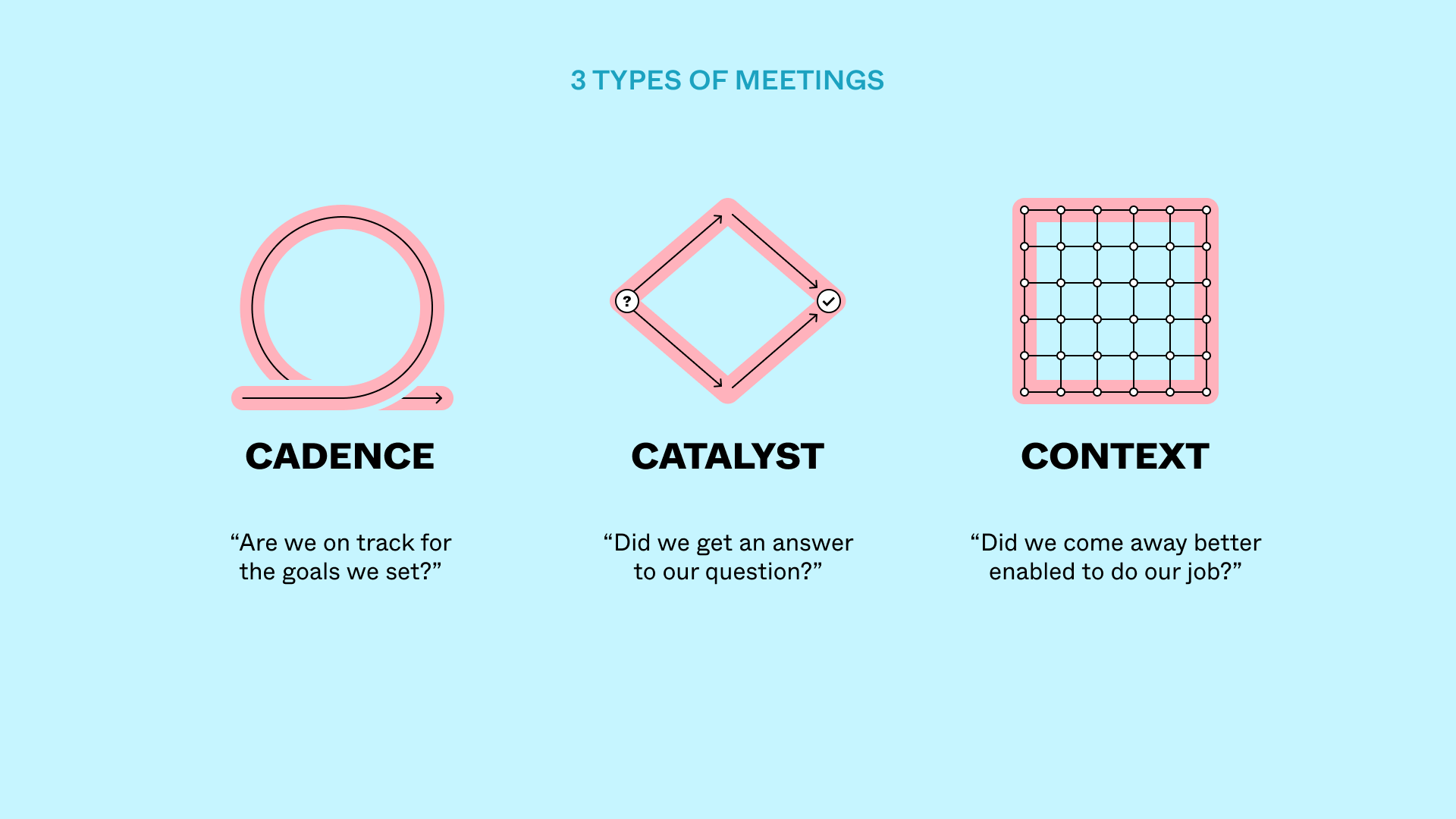


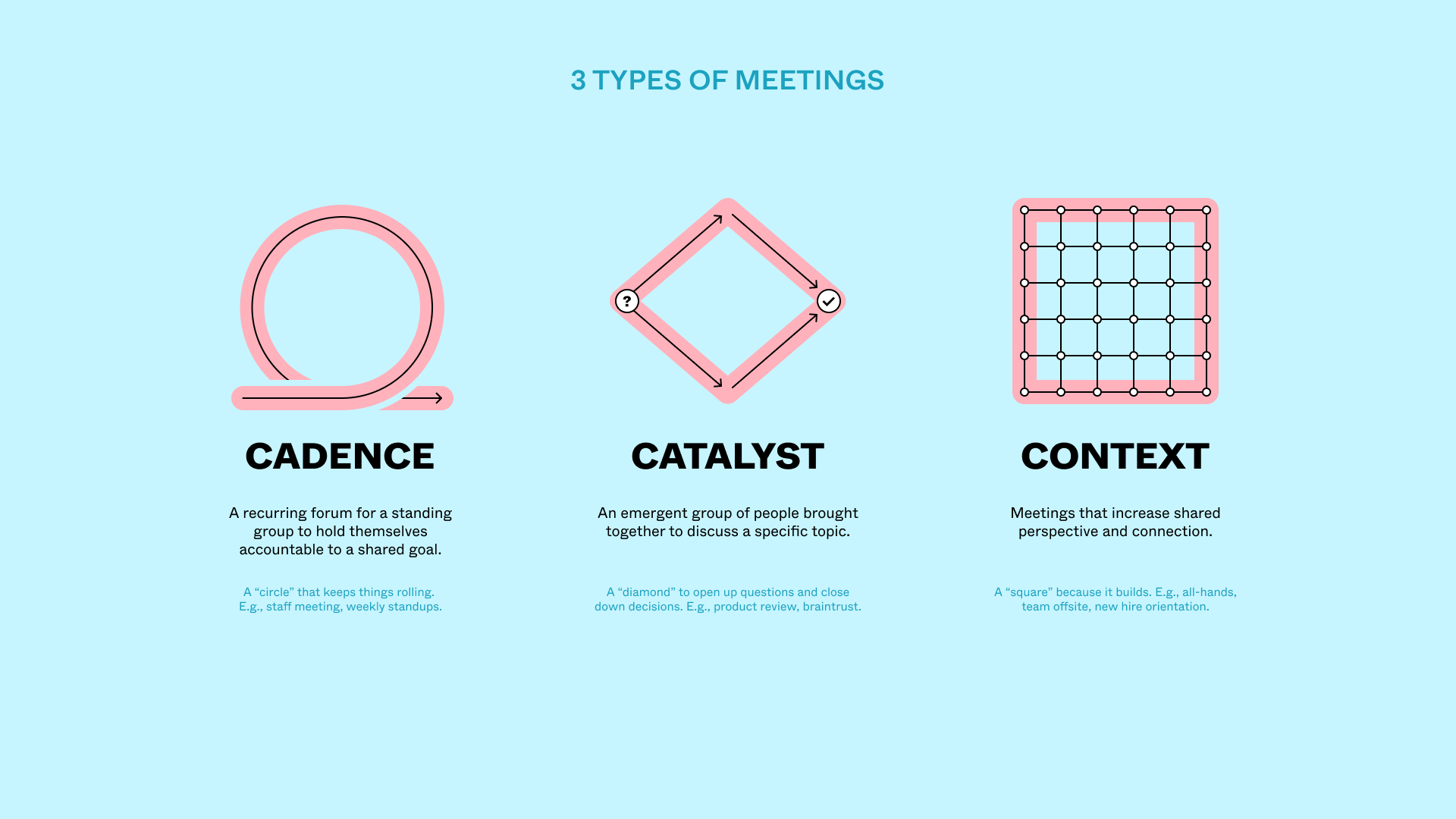


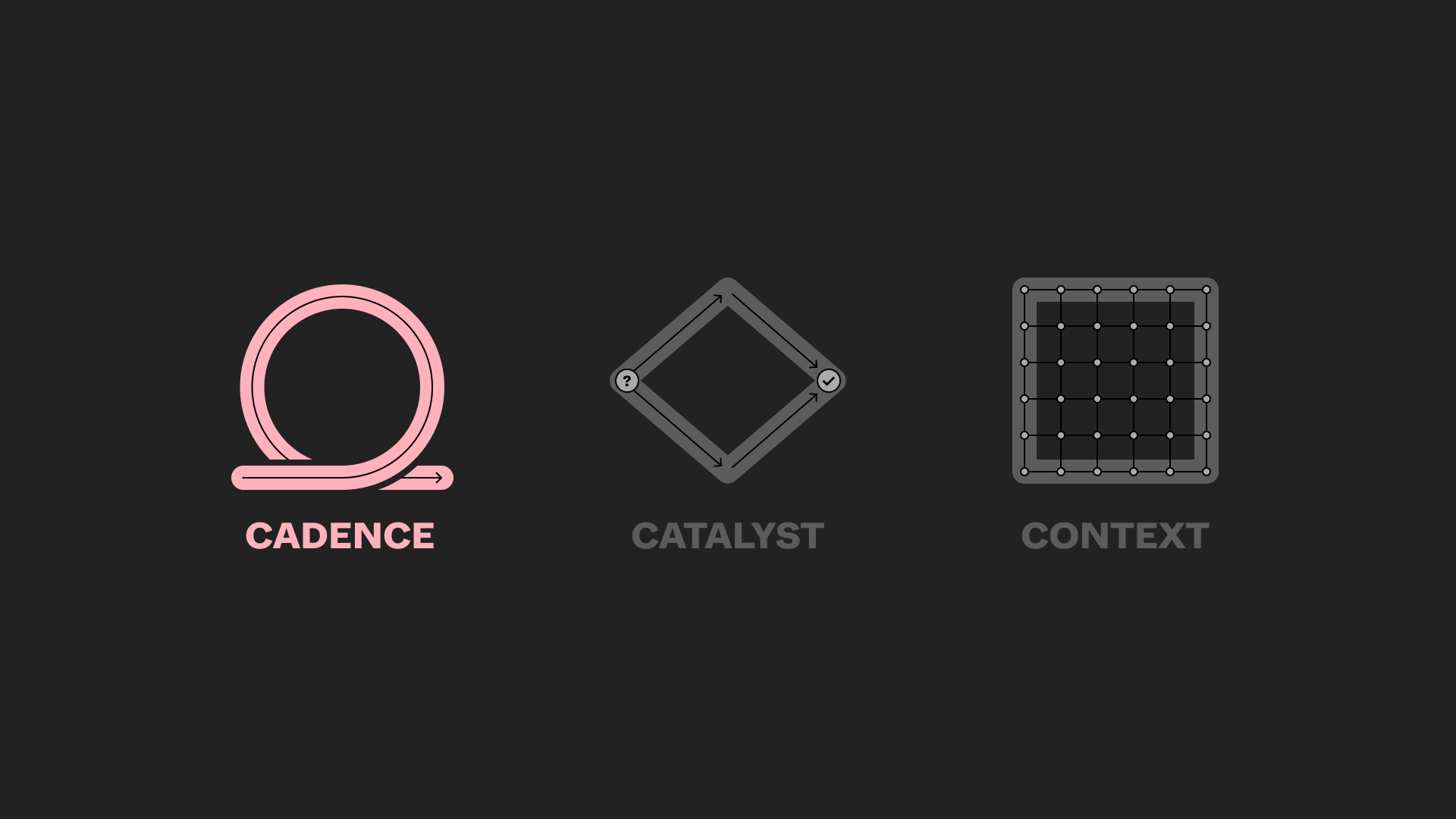


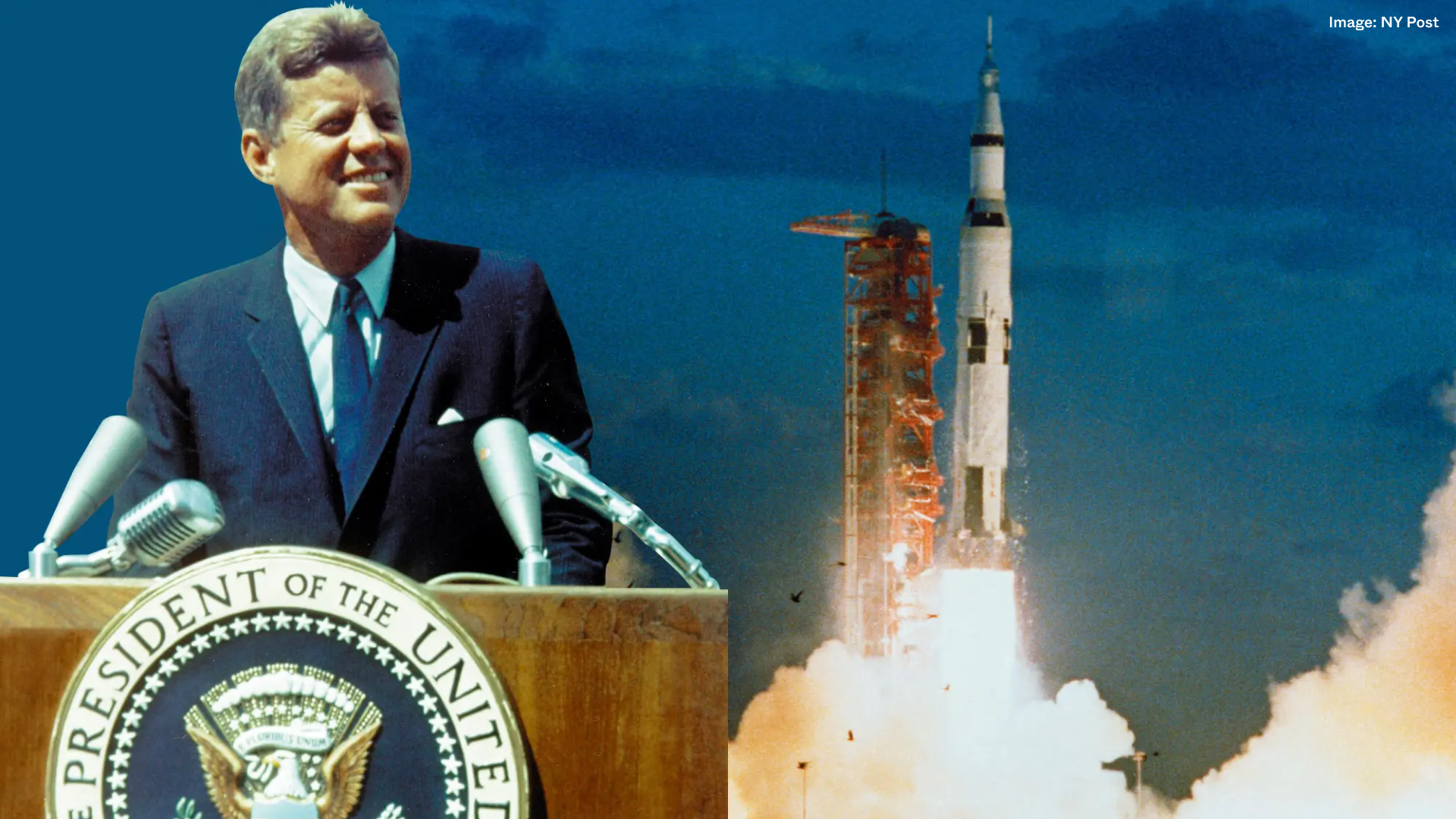


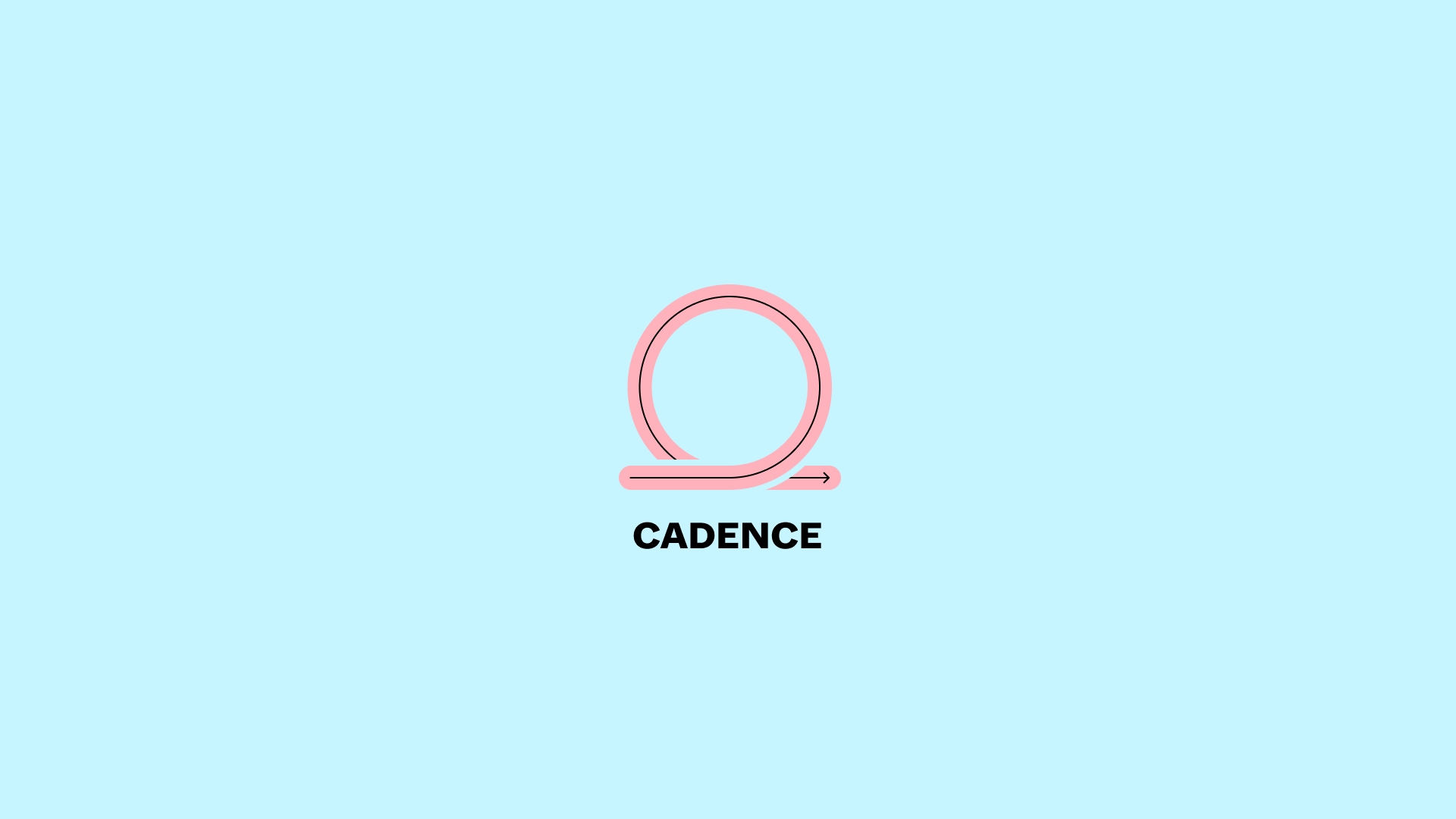


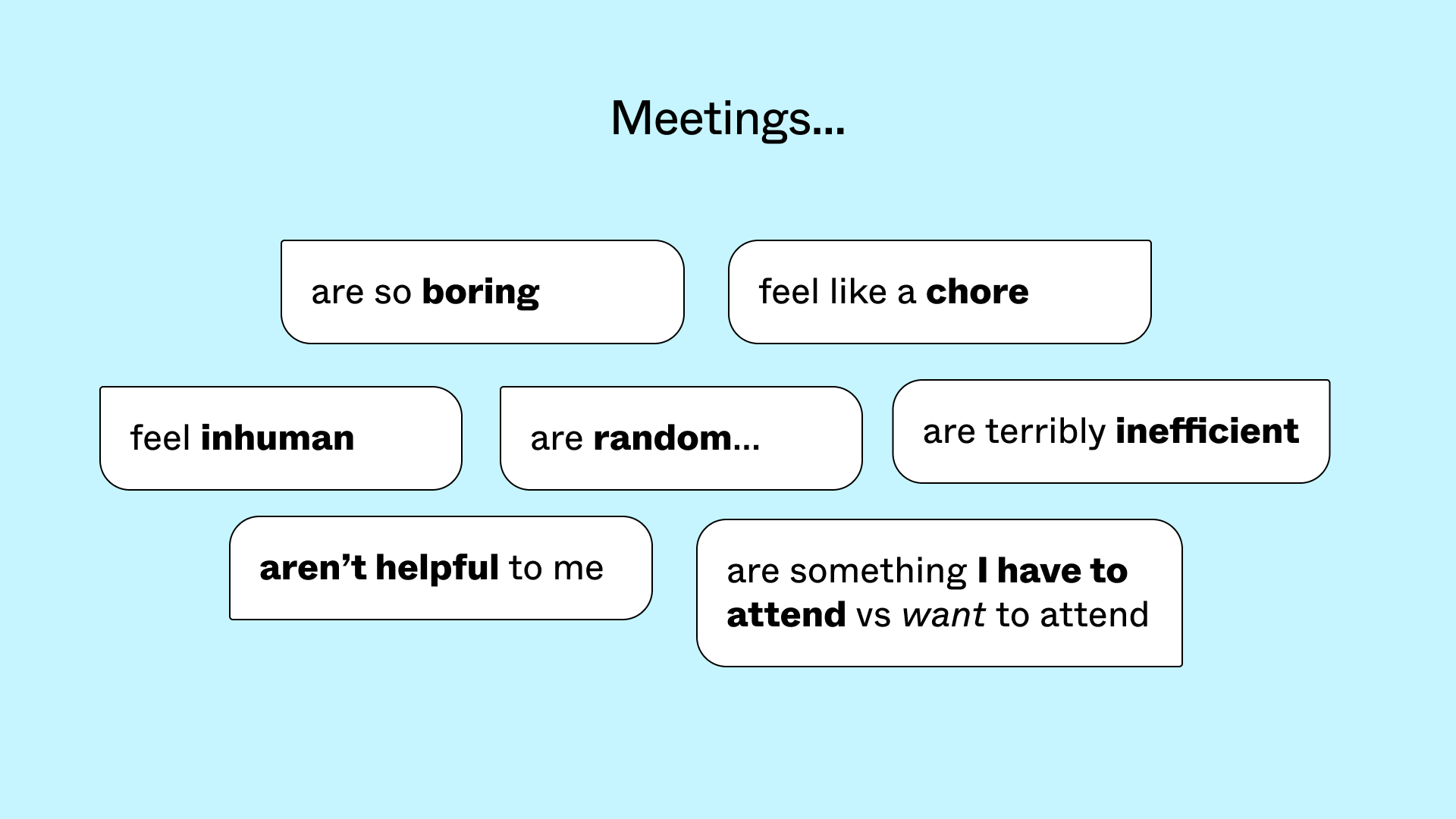


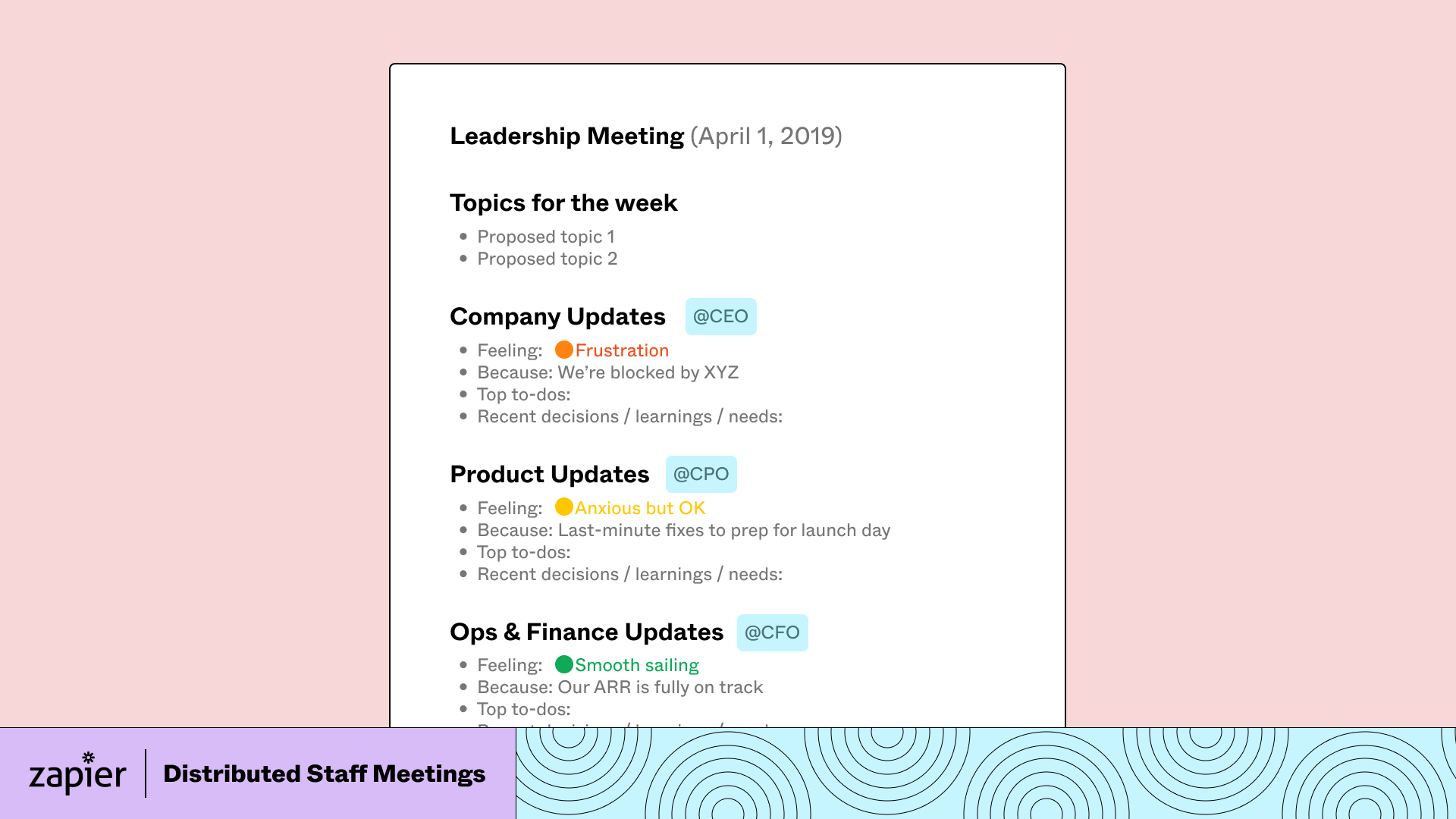





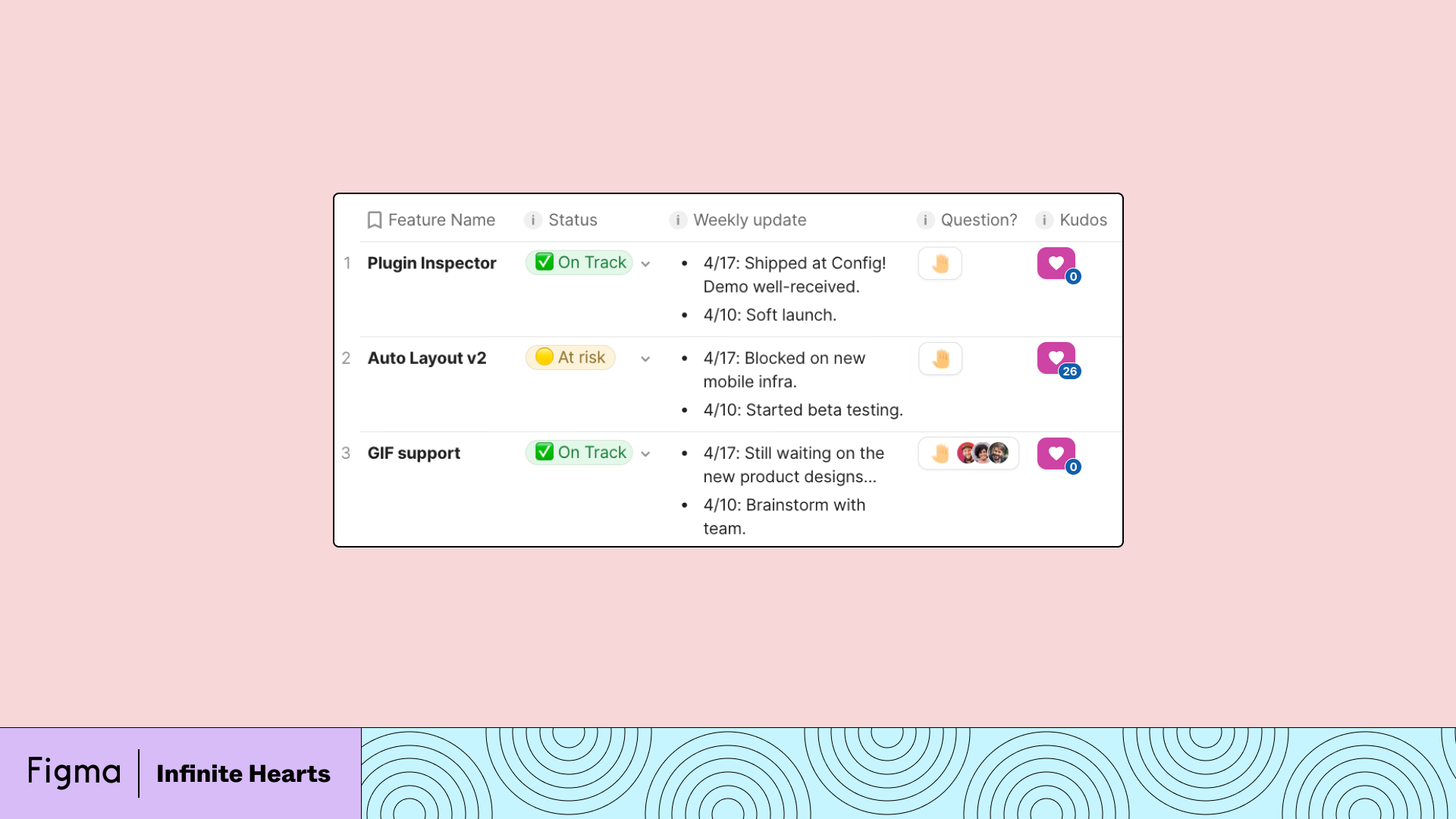


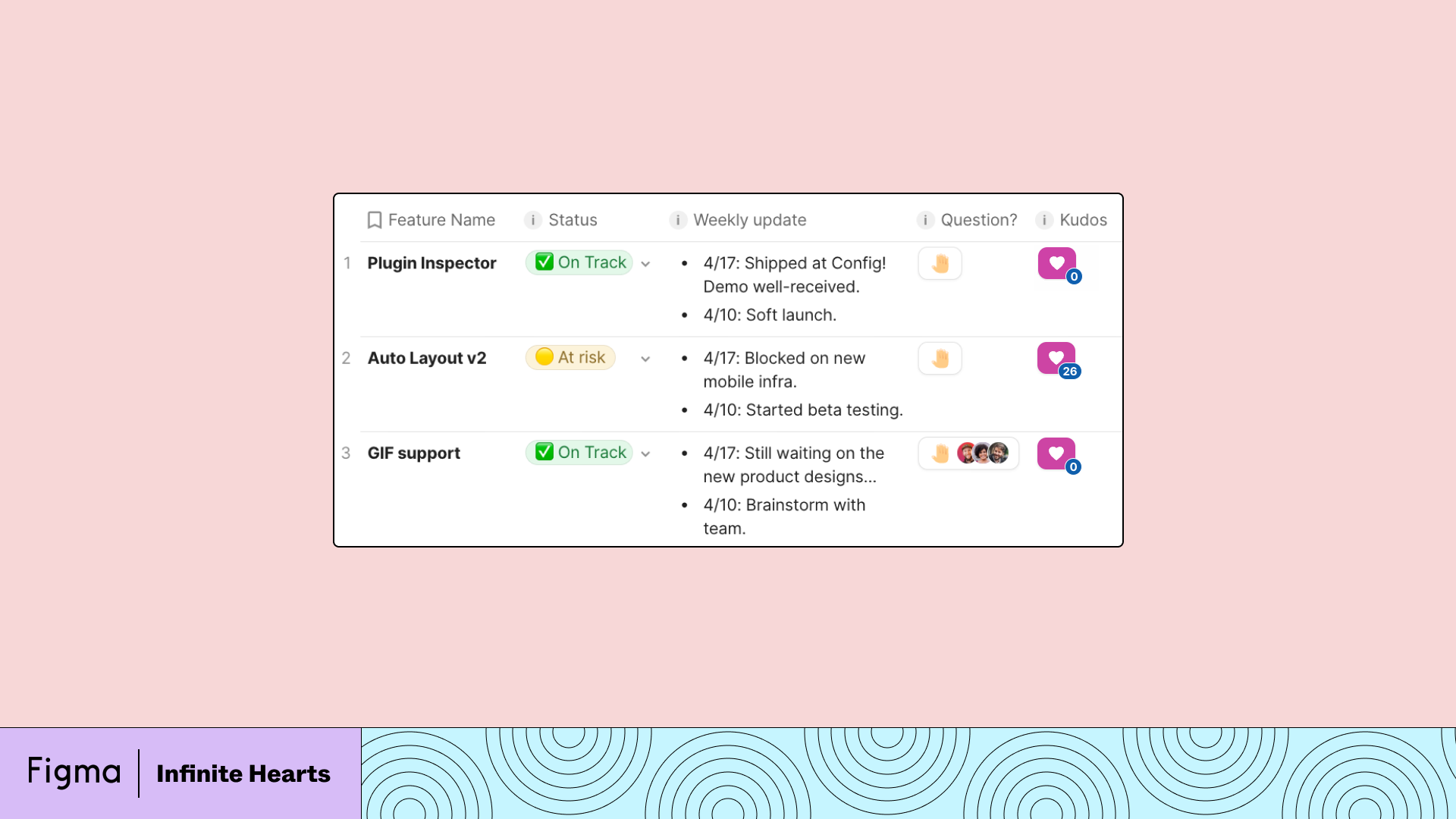








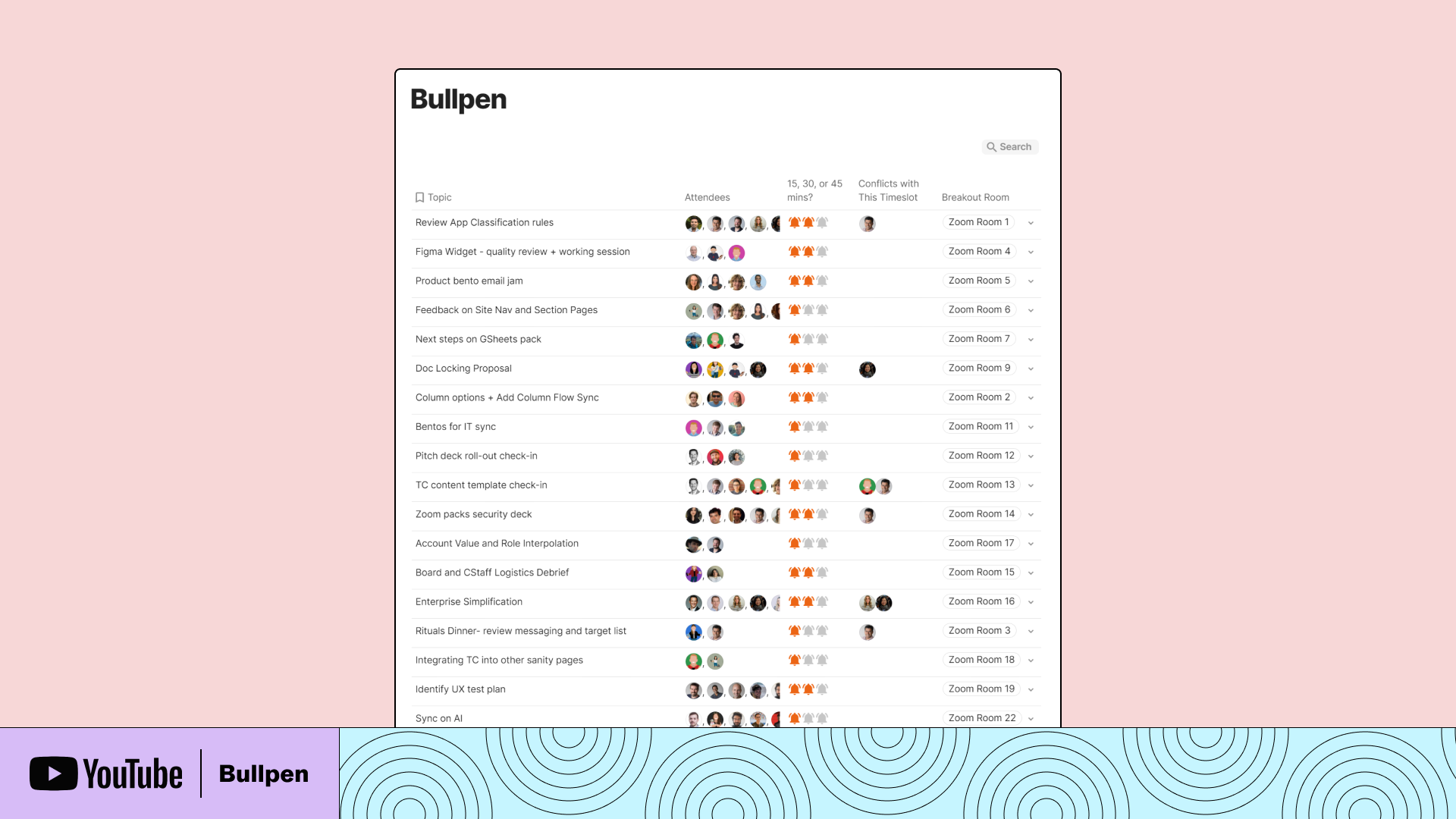
 From an efficiency perspective, it stays as a single threaded discussion, which is important for this case since they really want everyone’s attention. But because everyone has to be prepared whether or not they are called, it has a similar impact to a multi-threaded discussion - they have prepared thoughtful post-mortems on many more topics than they will go through. The second impact is an important cultural impact. It sends a clear signal that one of Stripe’s #1 customer expectations is an insanely high level of reliability. And if that’s your focus, you want a signal that it’s not just the biggest issues that matter, all the small ones add up too. So it’s a little bit like Amazon’s question marks which my boss brought to Uber — it’s a ritual that reinforces a key cultural touchpoint.
From an efficiency perspective, it stays as a single threaded discussion, which is important for this case since they really want everyone’s attention. But because everyone has to be prepared whether or not they are called, it has a similar impact to a multi-threaded discussion - they have prepared thoughtful post-mortems on many more topics than they will go through. The second impact is an important cultural impact. It sends a clear signal that one of Stripe’s #1 customer expectations is an insanely high level of reliability. And if that’s your focus, you want a signal that it’s not just the biggest issues that matter, all the small ones add up too. So it’s a little bit like Amazon’s question marks which my boss brought to Uber — it’s a ritual that reinforces a key cultural touchpoint. 
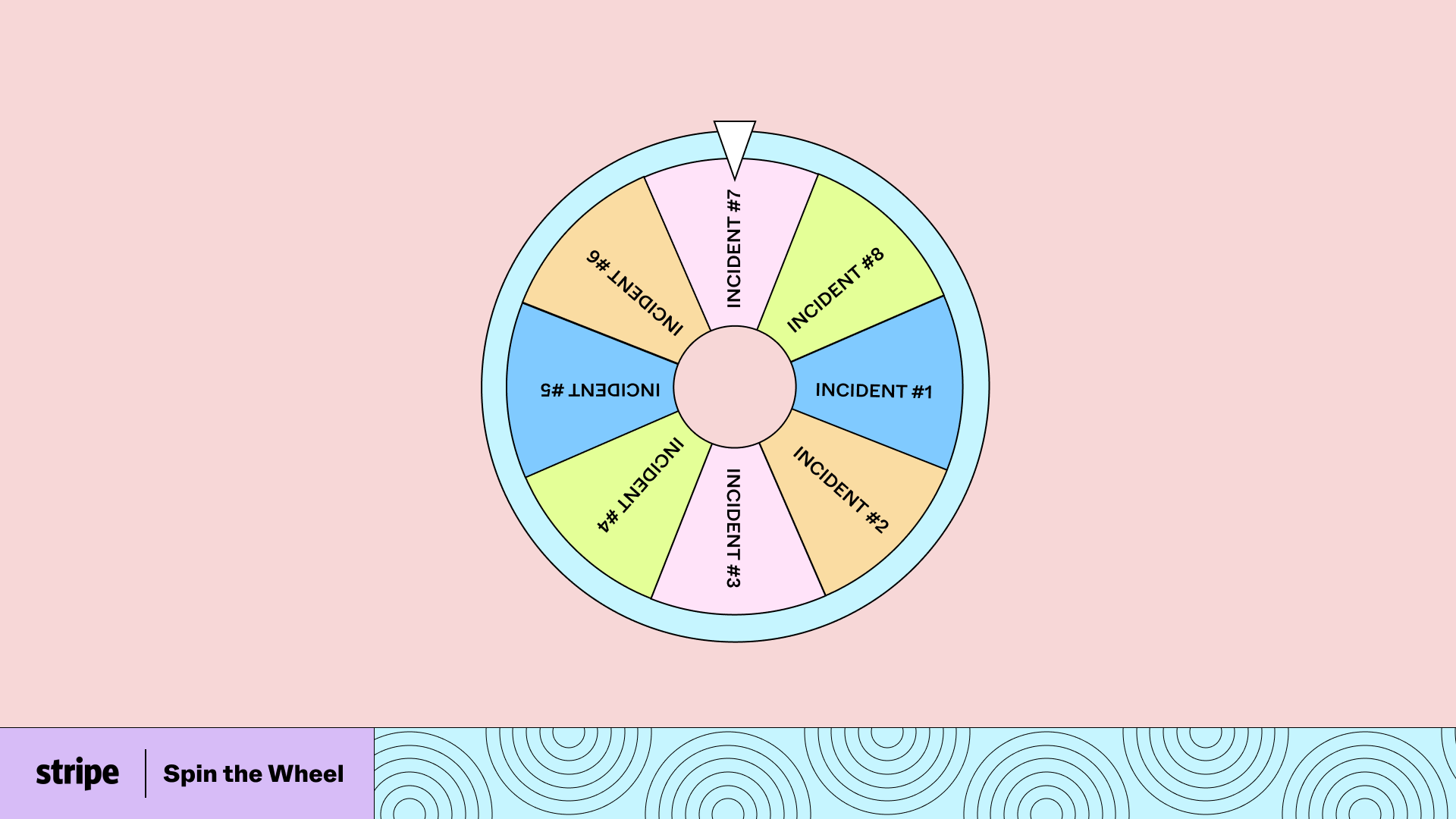



 First, it serves as a team meditation exercise at the start of a meeting. Get everyone in the right mindset, which is a key cultural value for Arianna’s team and their customers. Second, we all learn a bit about each other and form some human connection. Just like the Figma hearts ritual brought some humanity to the cadence meeting, watching something special from one of your teammates develops deep connection.
First, it serves as a team meditation exercise at the start of a meeting. Get everyone in the right mindset, which is a key cultural value for Arianna’s team and their customers. Second, we all learn a bit about each other and form some human connection. Just like the Figma hearts ritual brought some humanity to the cadence meeting, watching something special from one of your teammates develops deep connection.
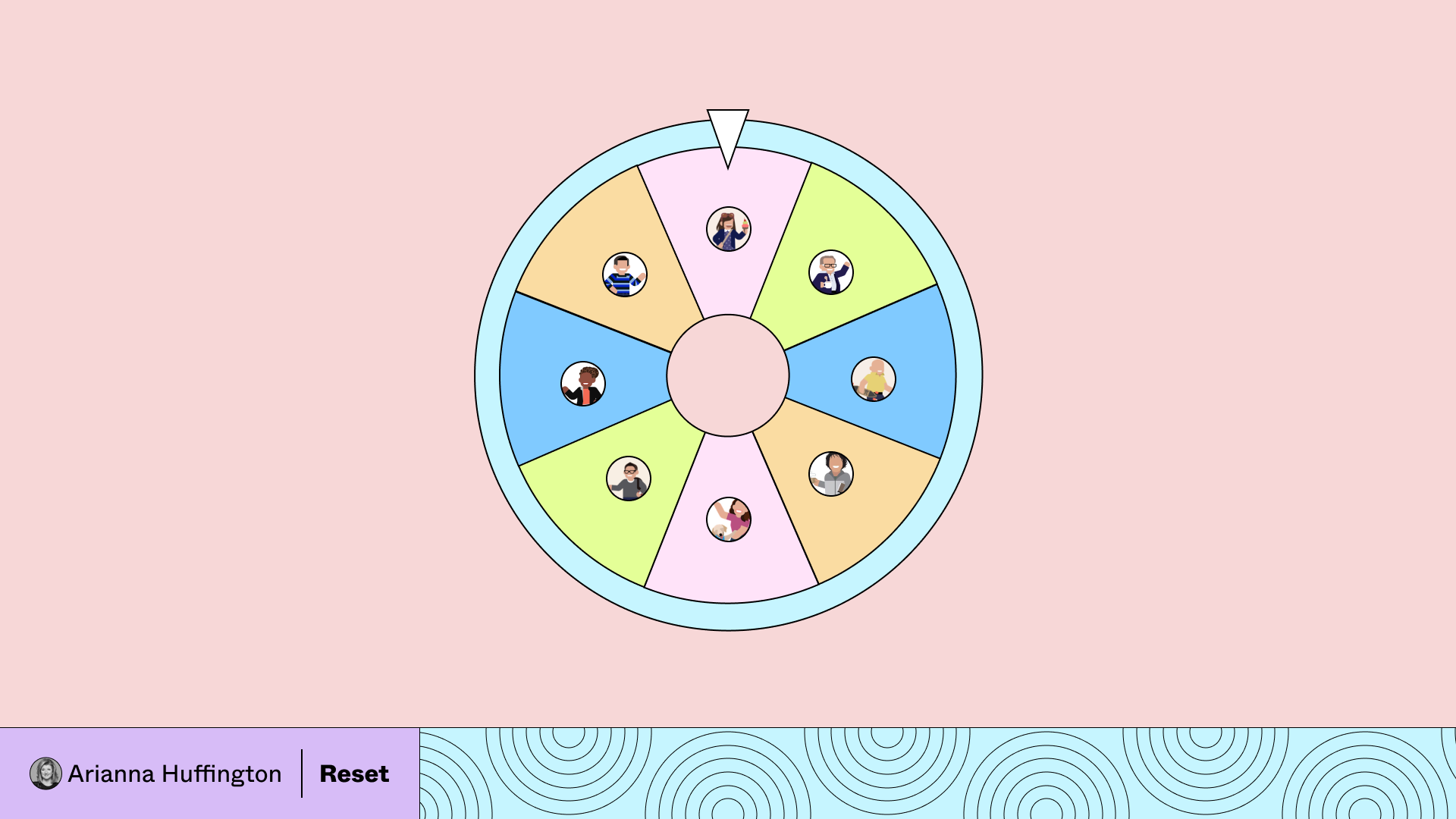


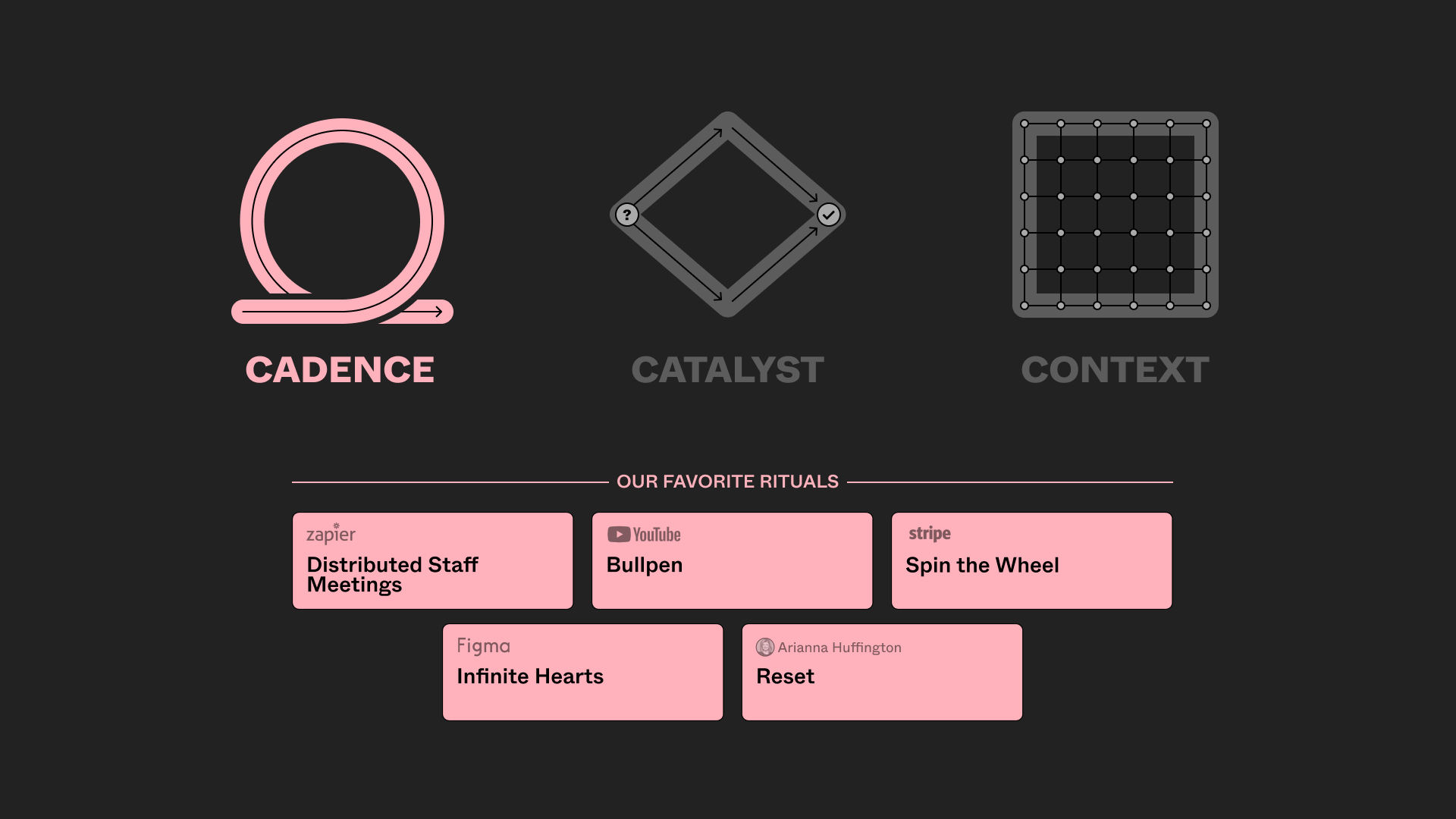


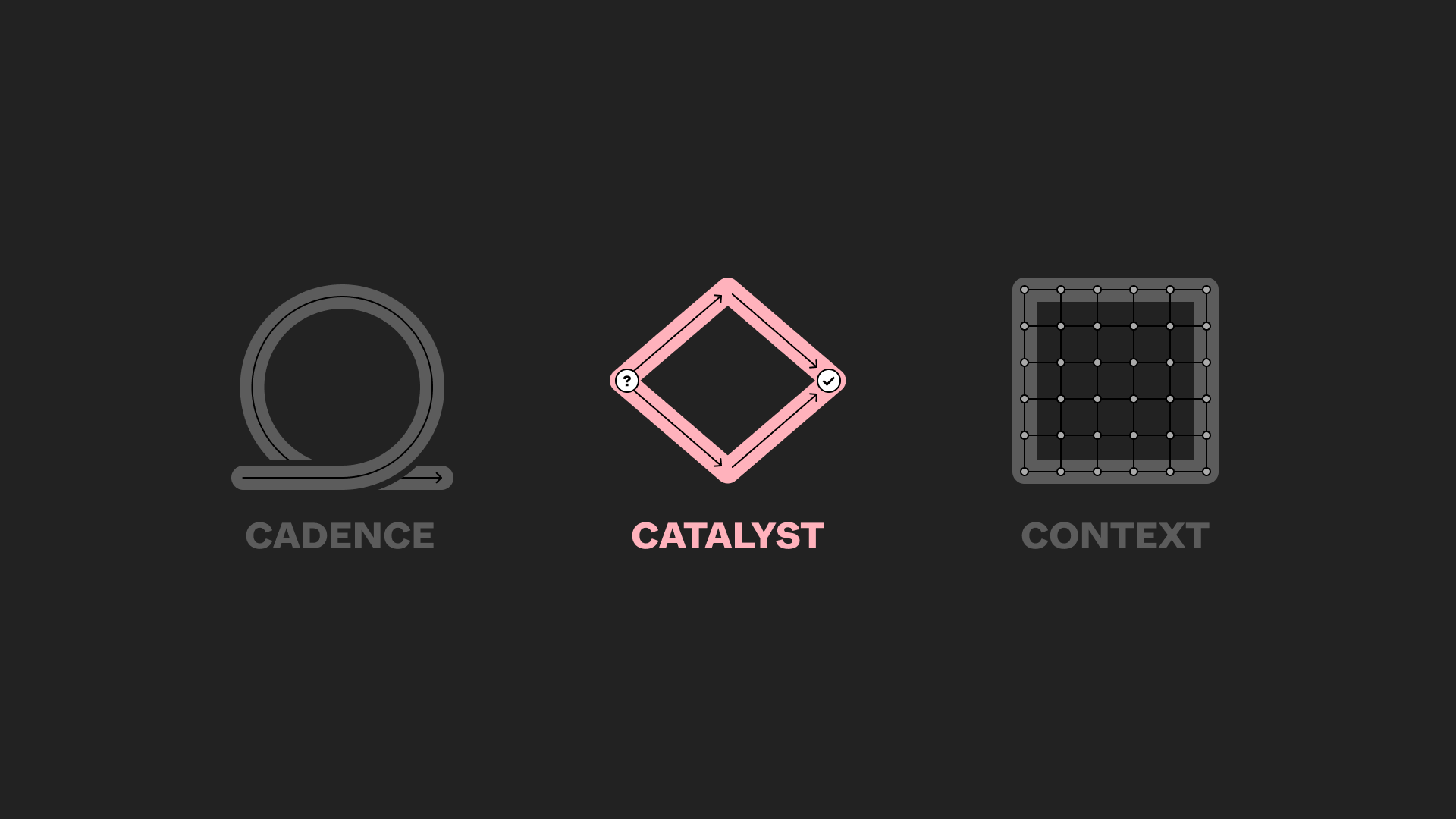


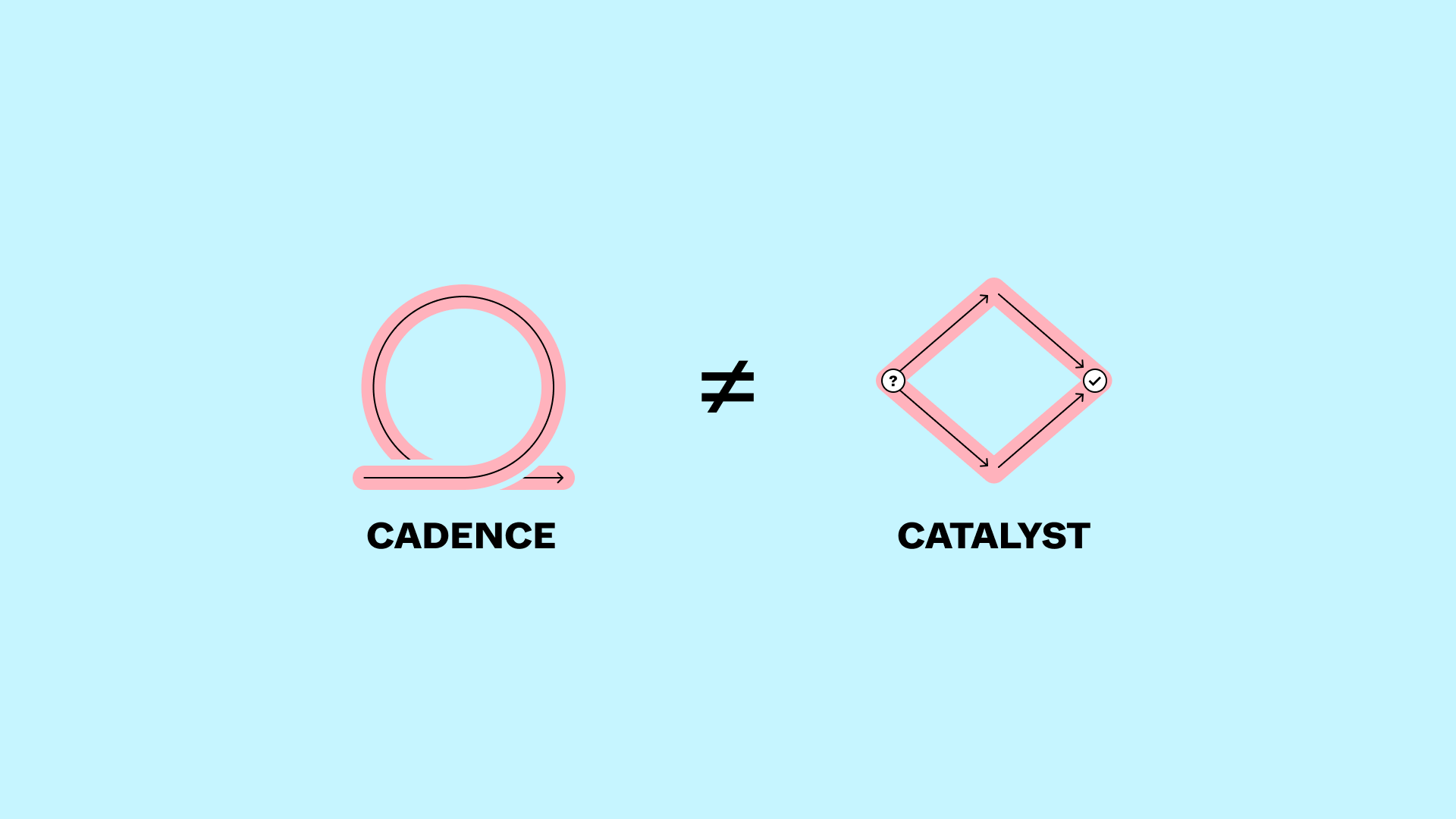


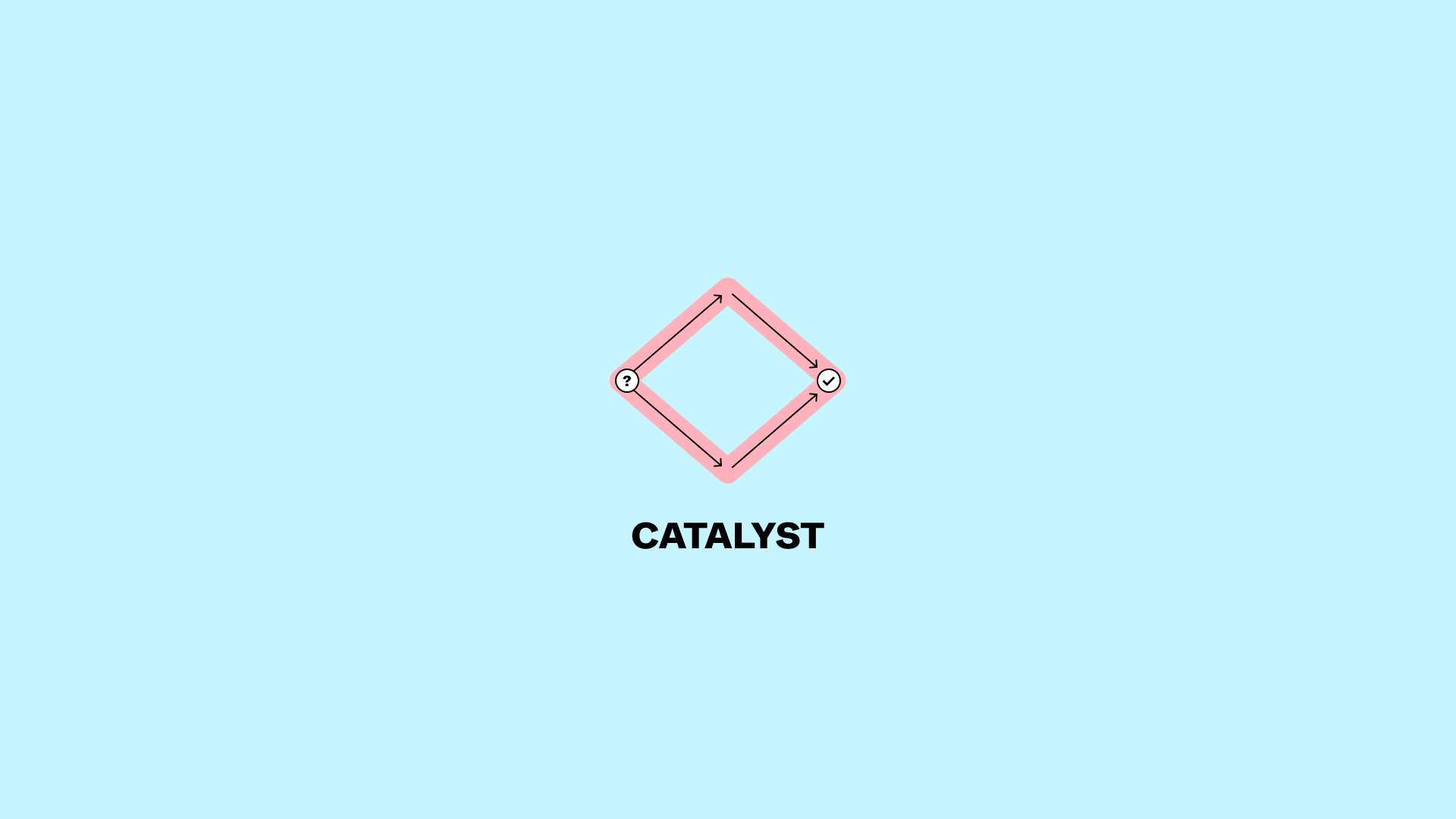


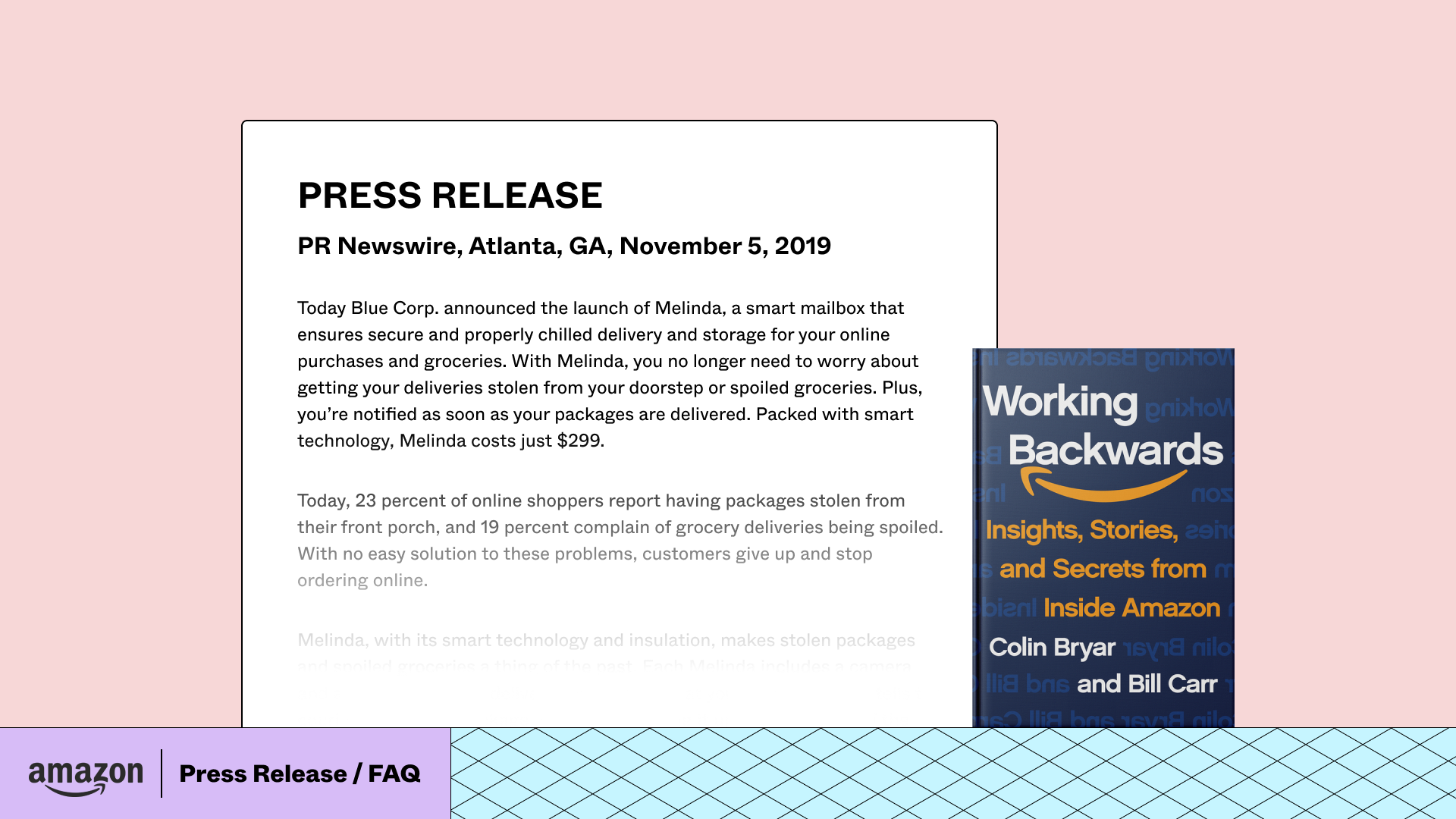


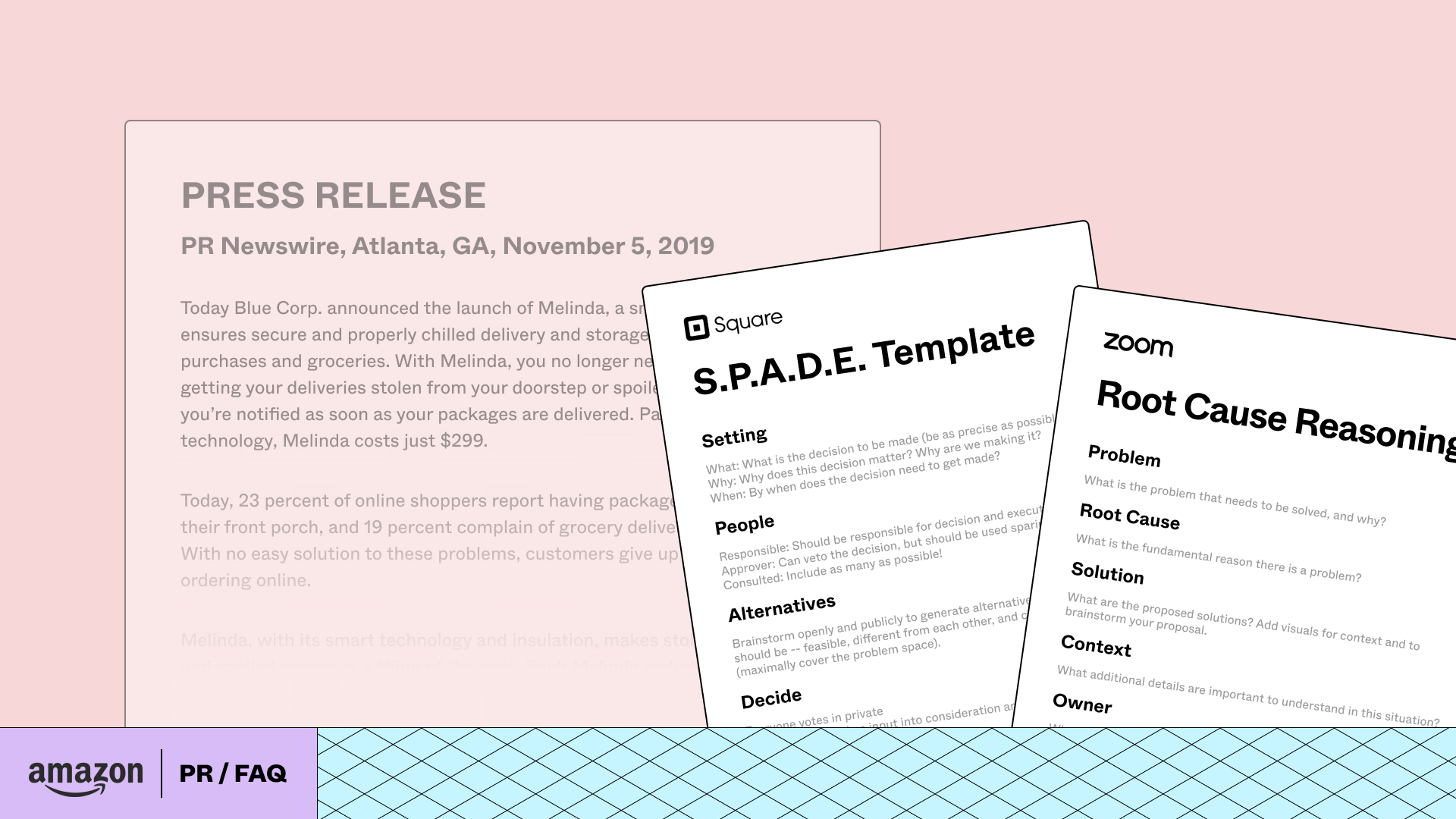


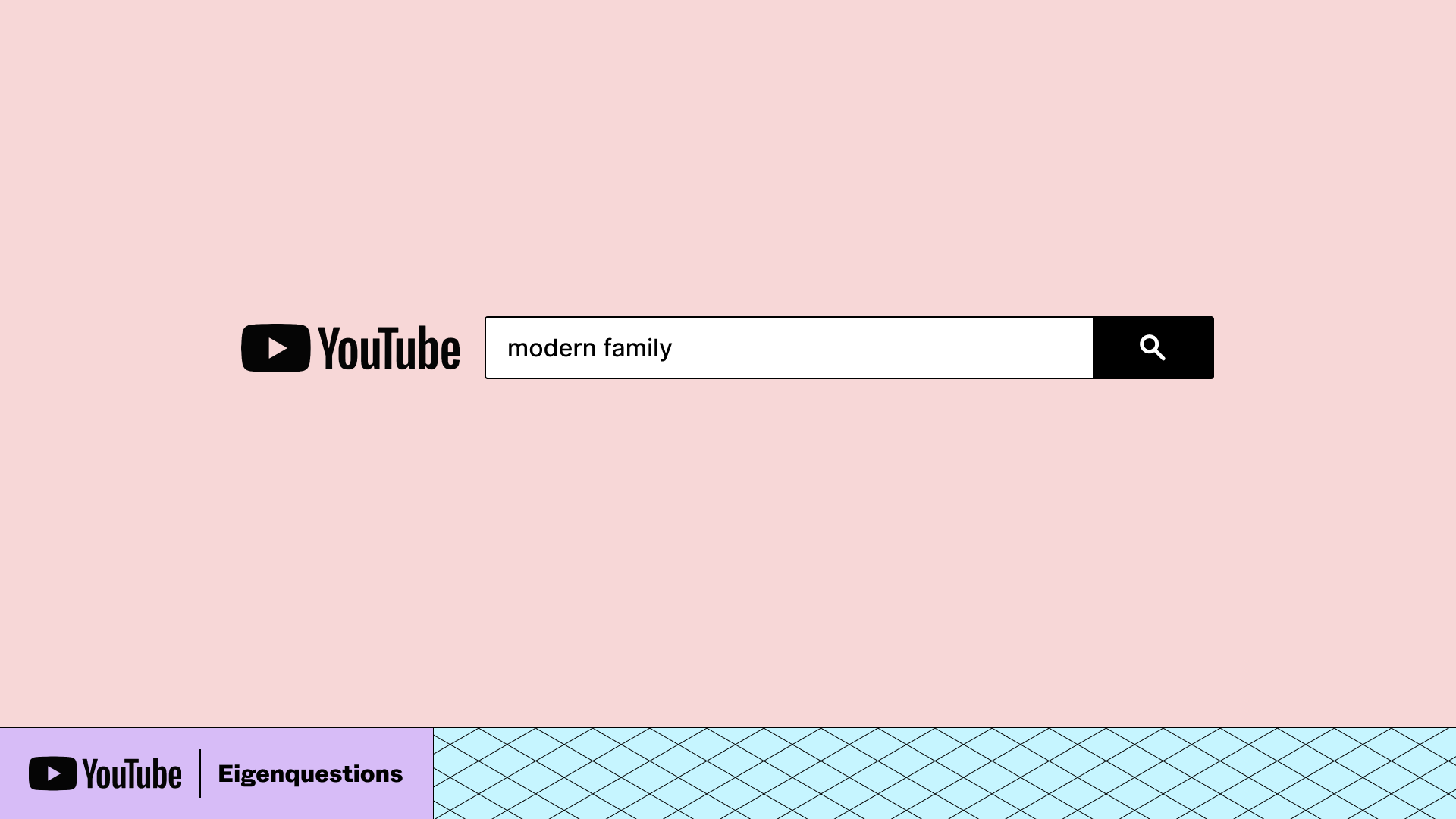





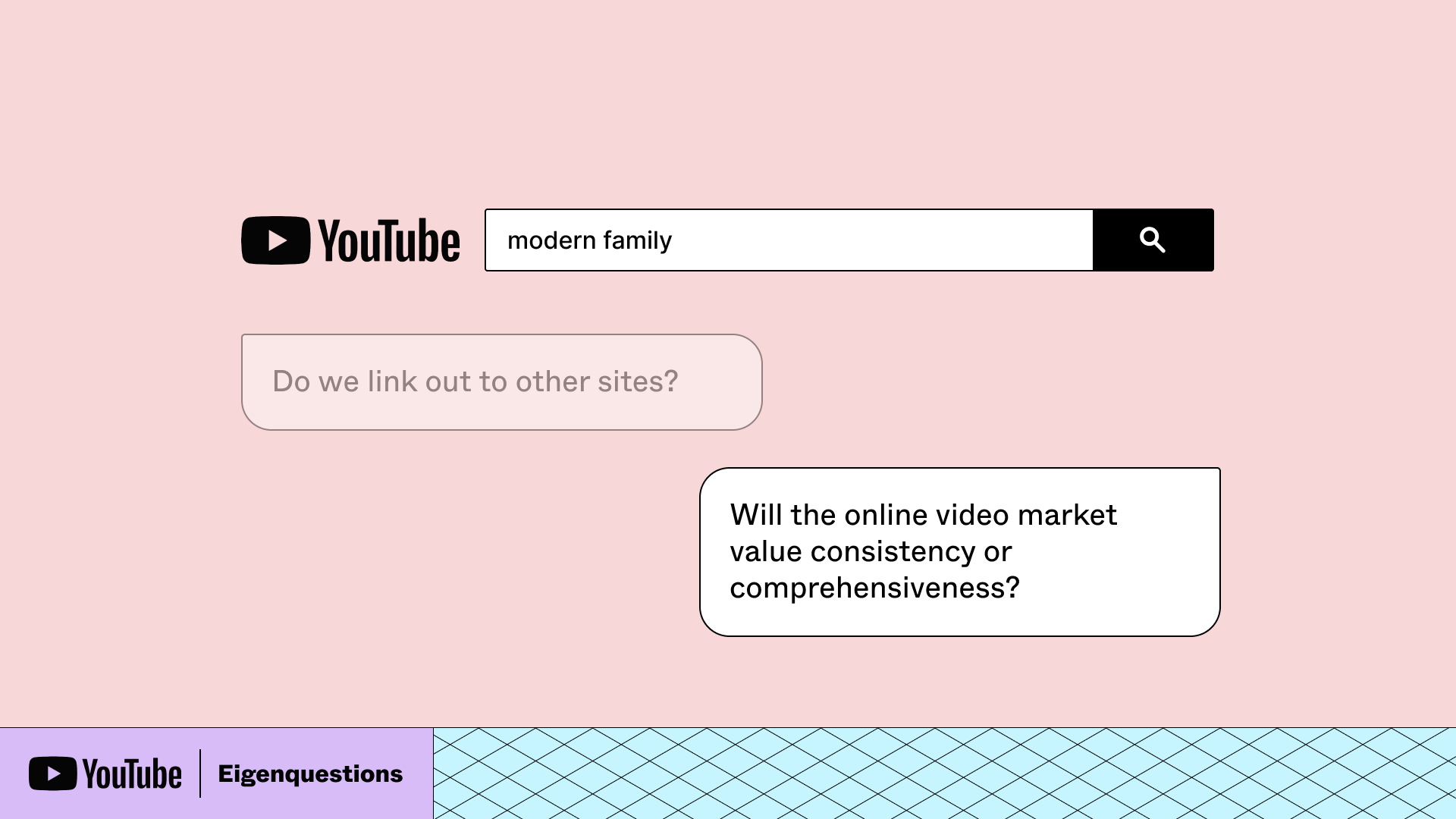


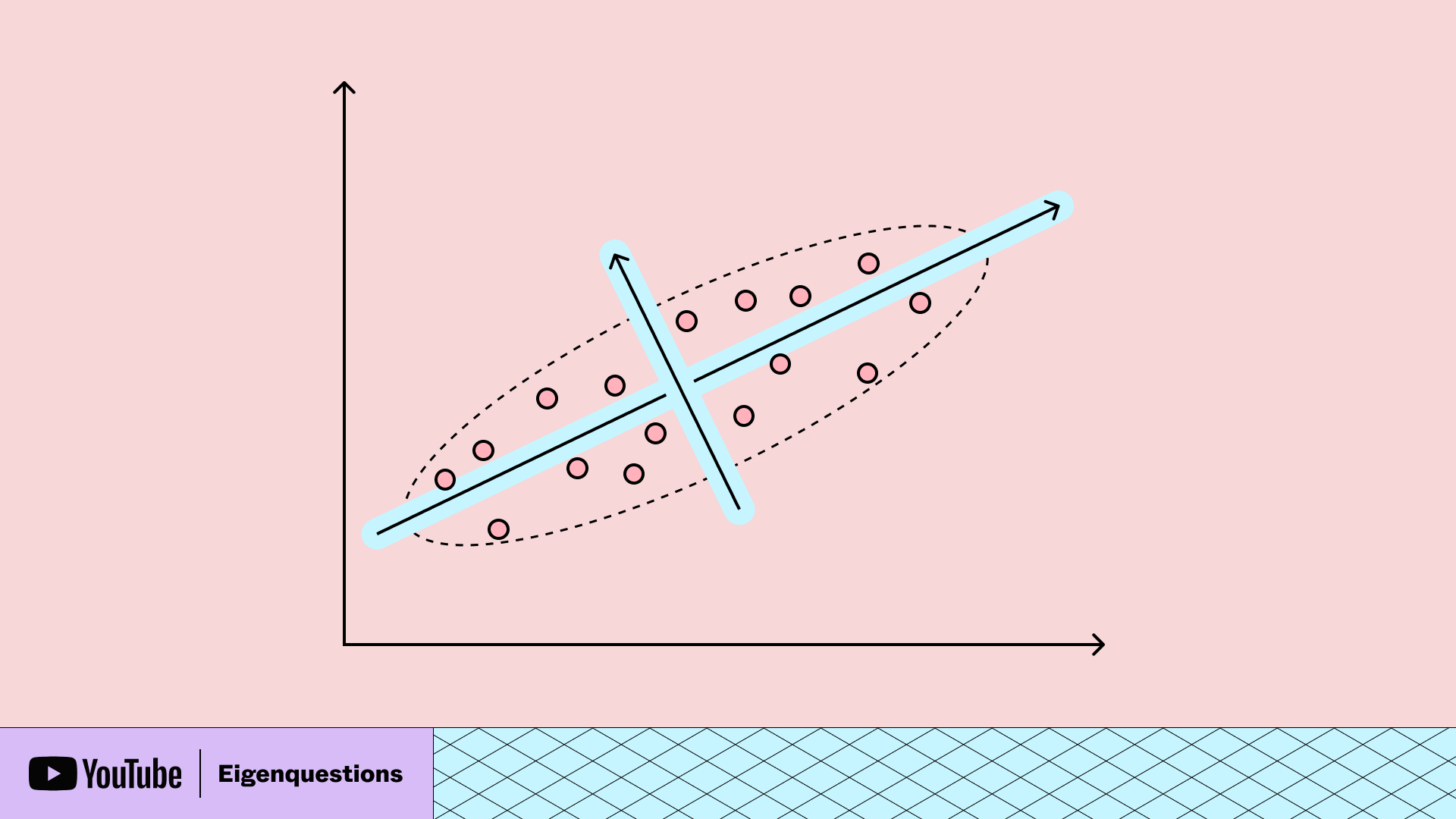












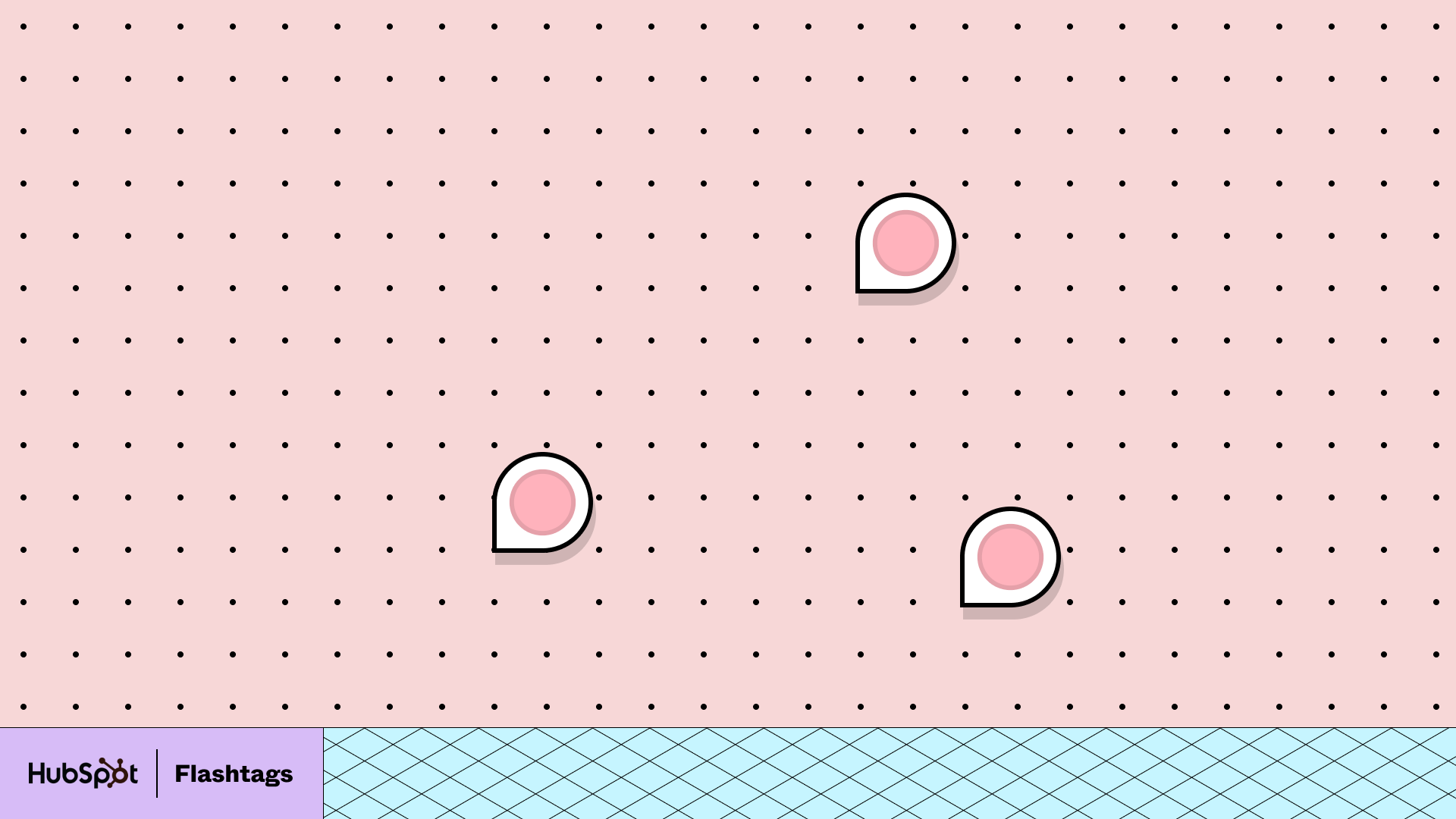


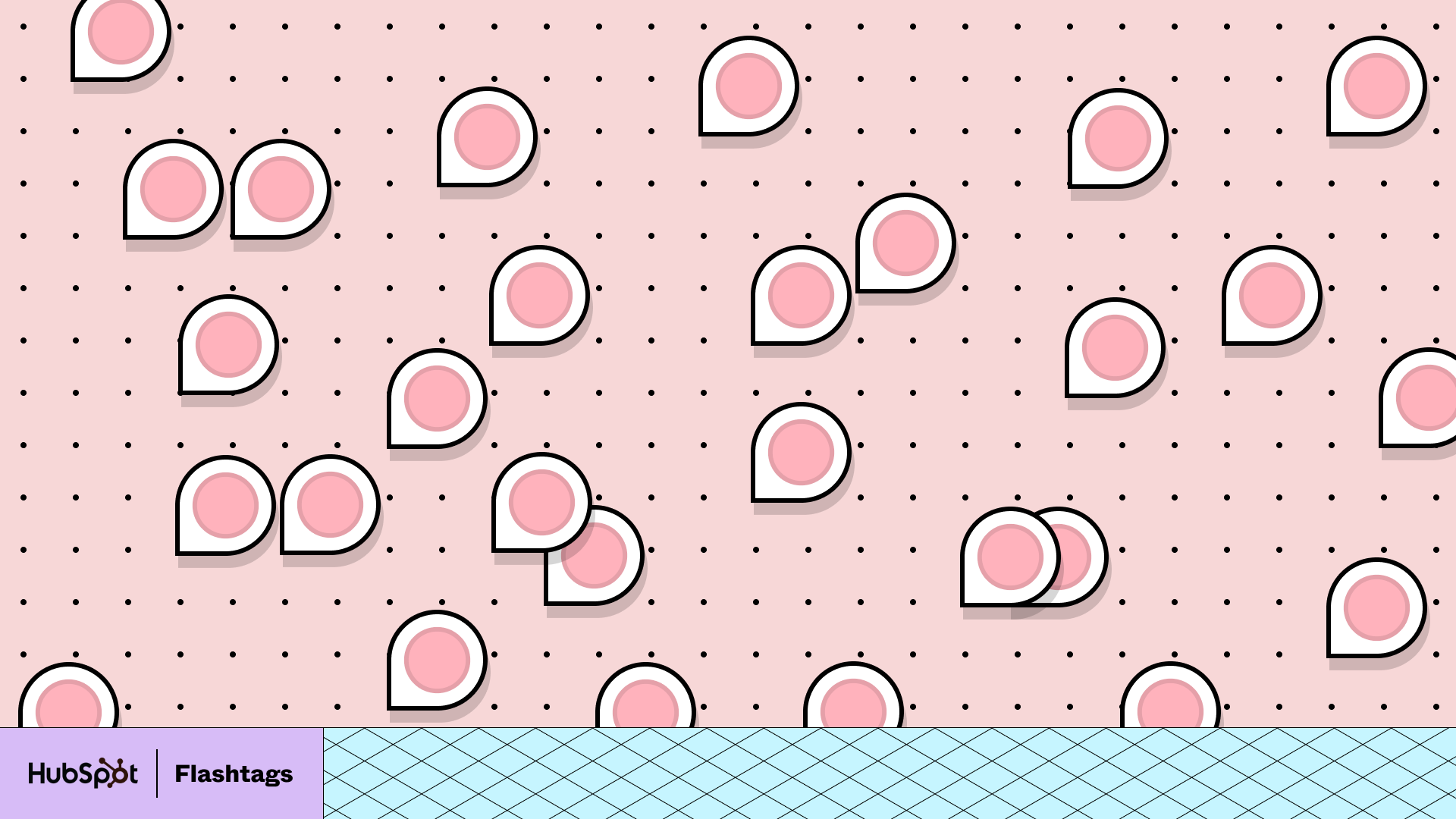


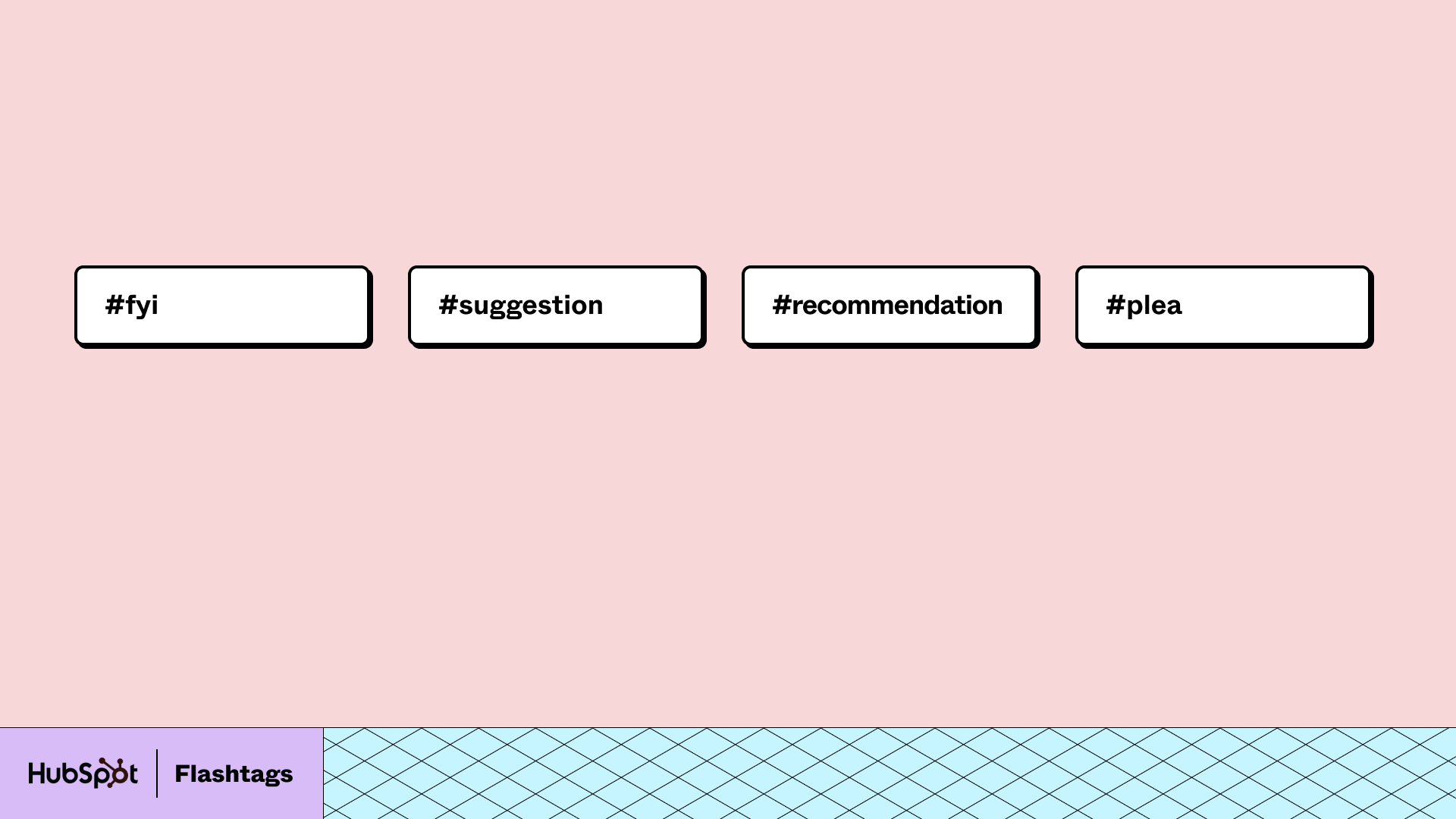



 means they’ve seen the hill but don’t feel strongly enough to commit the calories to climb it. So… take it or leave it.And finally, means that they do, in fact want to die on the hill. So if you see this flashtag… you better be ready to have a pretty big debate.
means they’ve seen the hill but don’t feel strongly enough to commit the calories to climb it. So… take it or leave it.And finally, means that they do, in fact want to die on the hill. So if you see this flashtag… you better be ready to have a pretty big debate.
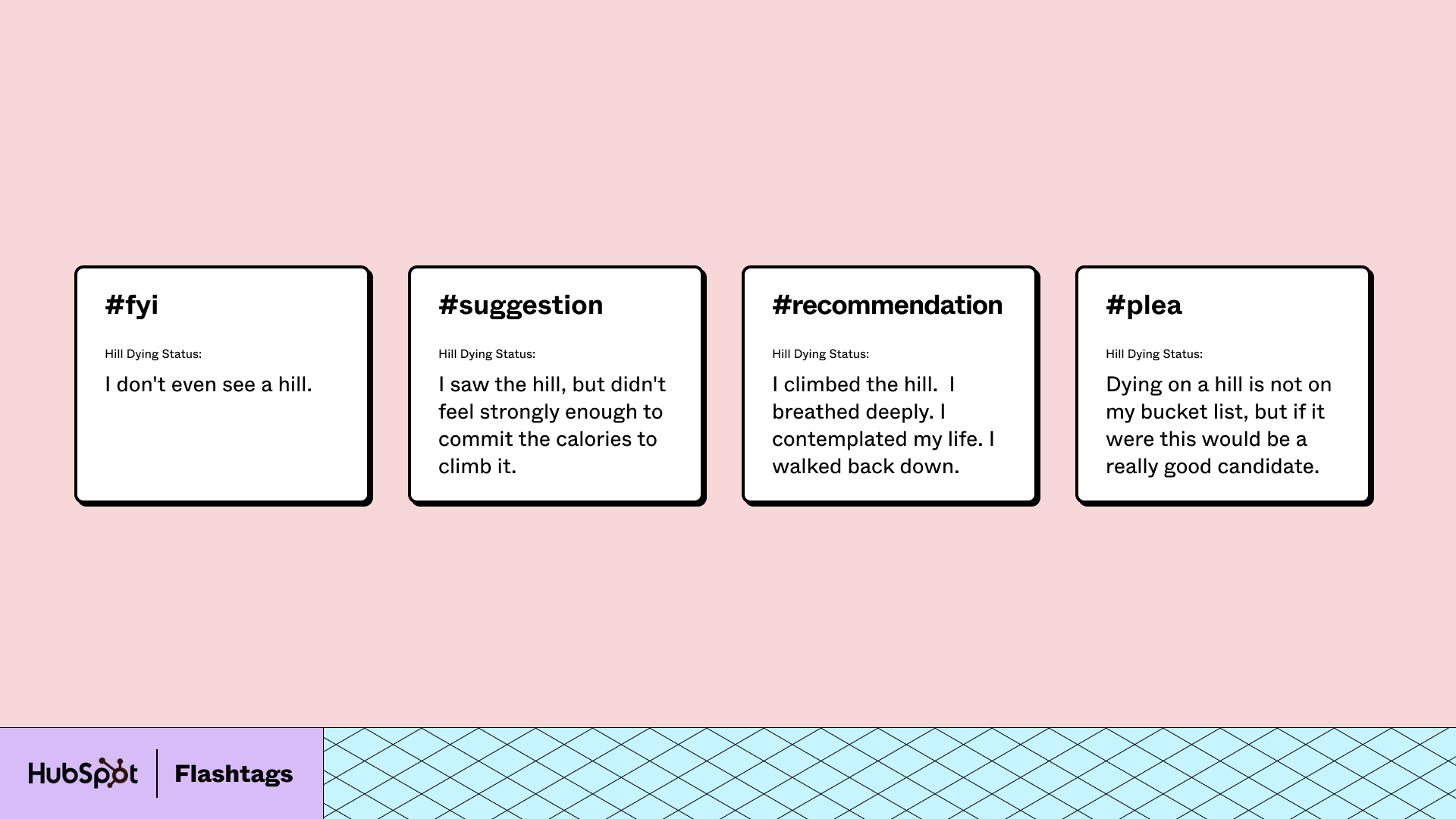



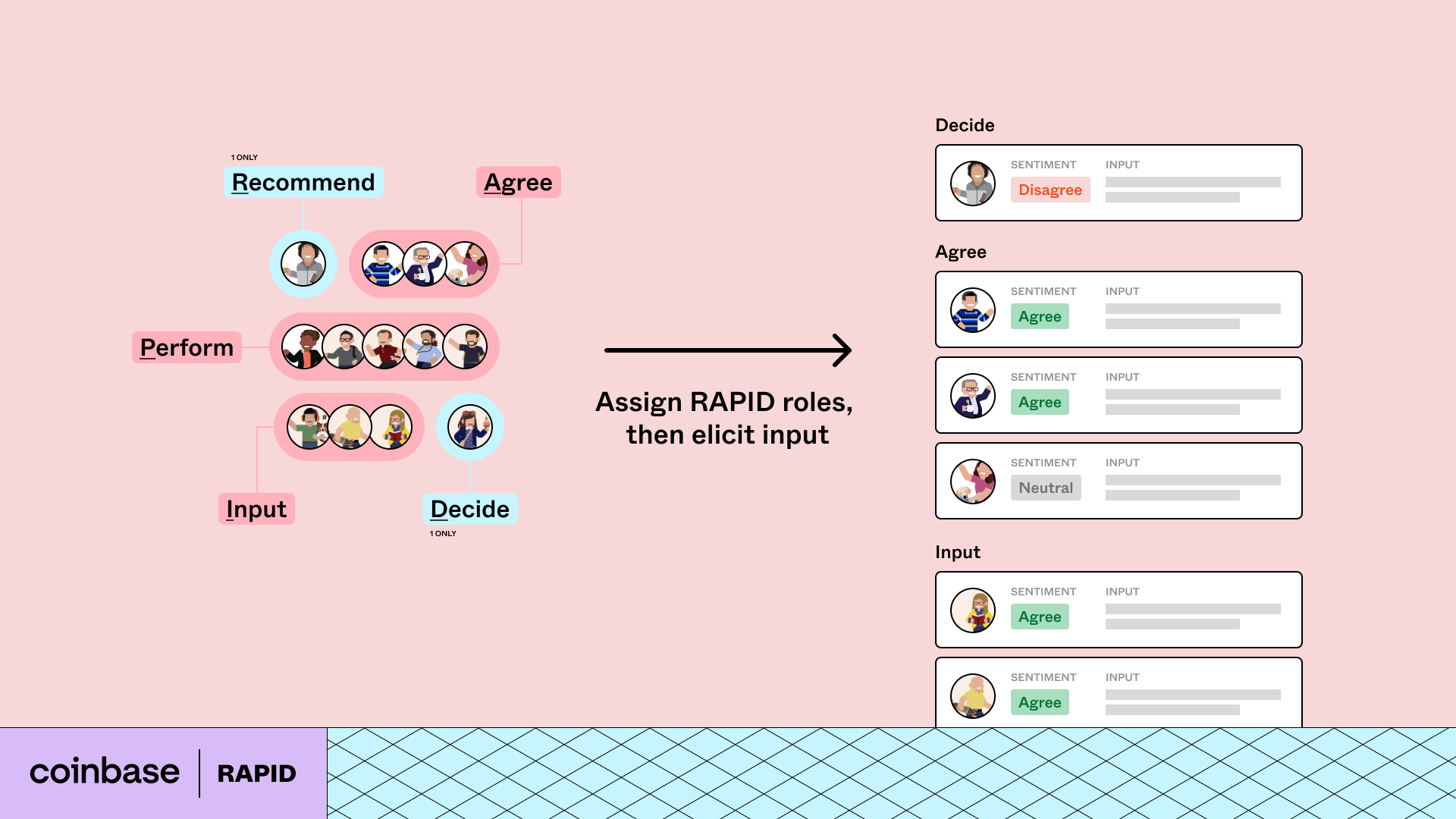


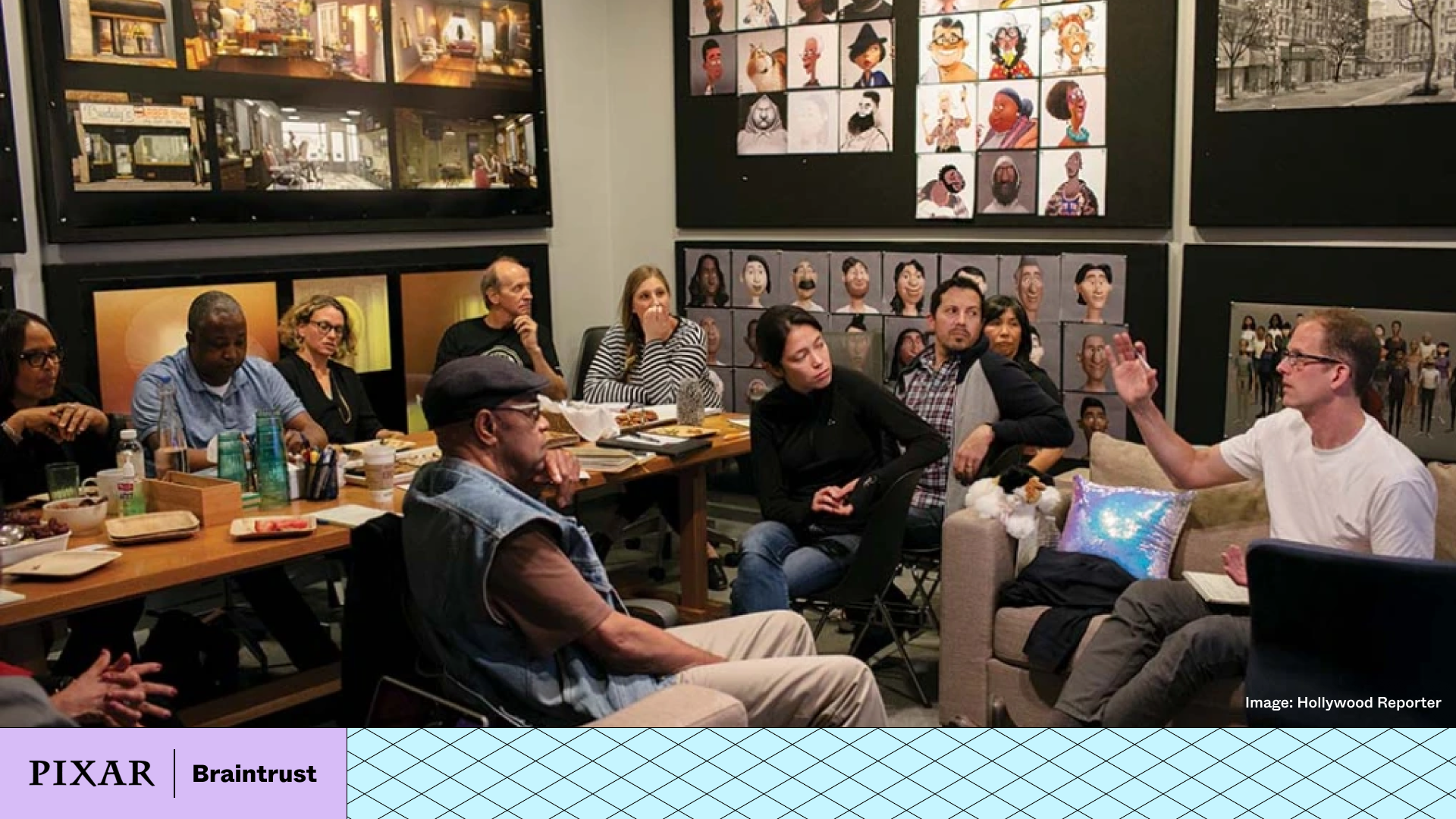
 You want a dedicated forum for your Catalyst, versus blending it into Cadence meetingsFraming what you’re discussing is really important, whether via a doc or eigenquestionsThere are a lot of interesting rituals around feedback, to make sure the right voices are heardAnd it’s really important to have rituals that make clear what to do with all of that feedback
You want a dedicated forum for your Catalyst, versus blending it into Cadence meetingsFraming what you’re discussing is really important, whether via a doc or eigenquestionsThere are a lot of interesting rituals around feedback, to make sure the right voices are heardAnd it’s really important to have rituals that make clear what to do with all of that feedback



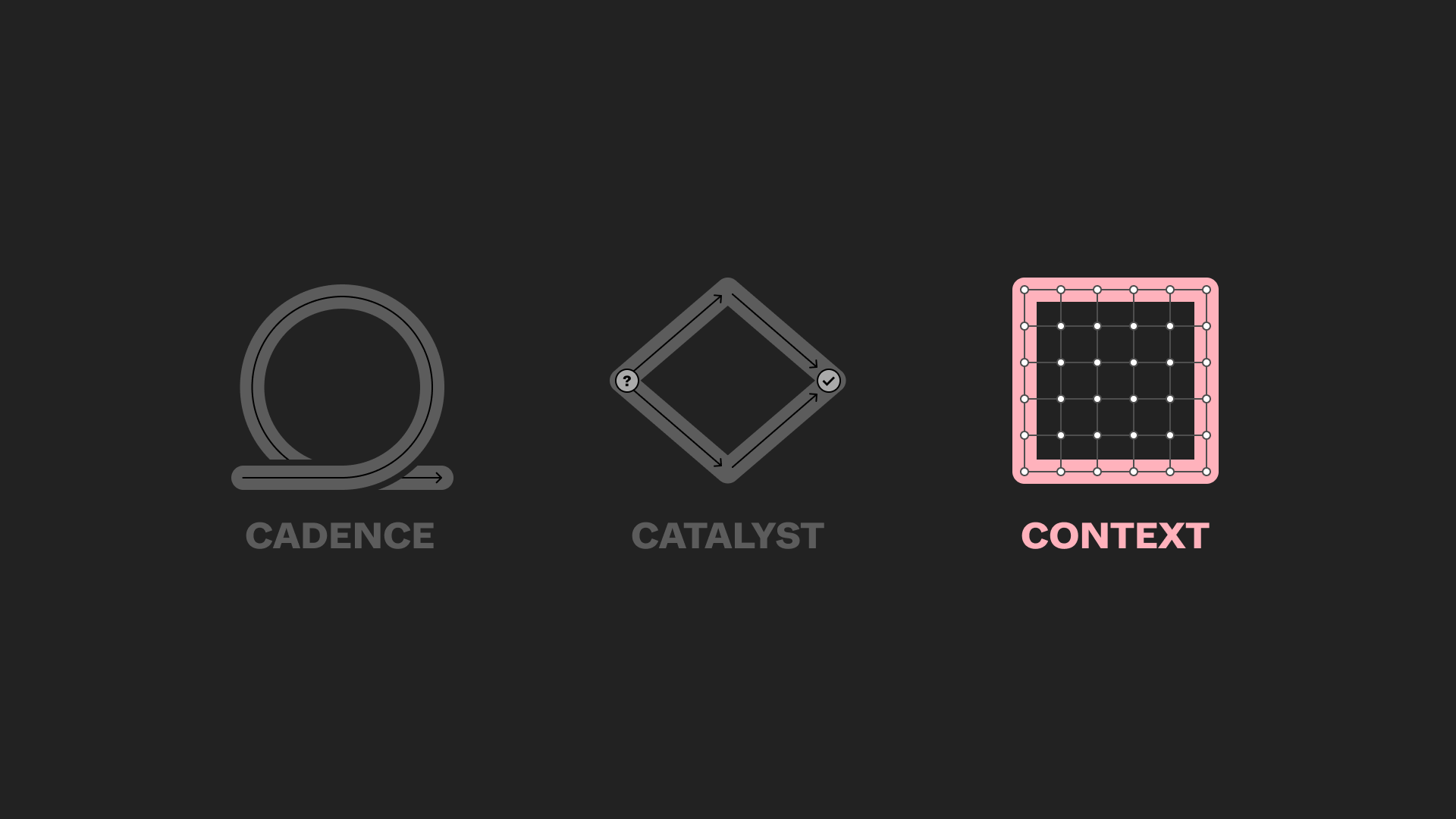
 The main cafeteria called Charlie's Cafe was cleared out to make room for the whole company. All the new Google employees, called Nooglers, were given goofy hats with propellers on top. Larry and Sergey would read out the launches from the week and adding color commentary as they went. Sometimes there would be a dedicated presentation from a team, but the most memorable part of the meeting for everyone was the open q&A session at the end.
The main cafeteria called Charlie's Cafe was cleared out to make room for the whole company. All the new Google employees, called Nooglers, were given goofy hats with propellers on top. Larry and Sergey would read out the launches from the week and adding color commentary as they went. Sometimes there would be a dedicated presentation from a team, but the most memorable part of the meeting for everyone was the open q&A session at the end. 
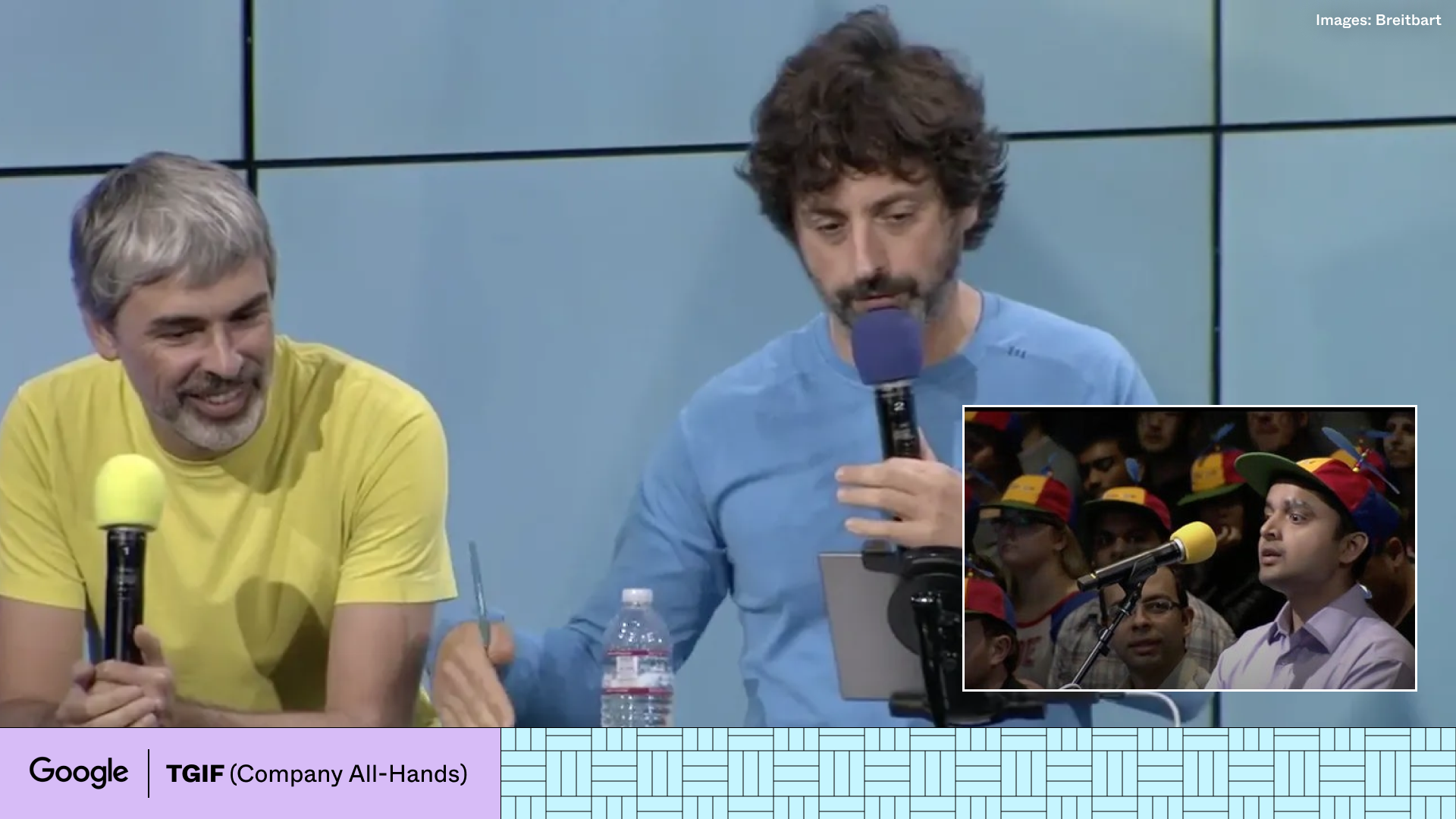


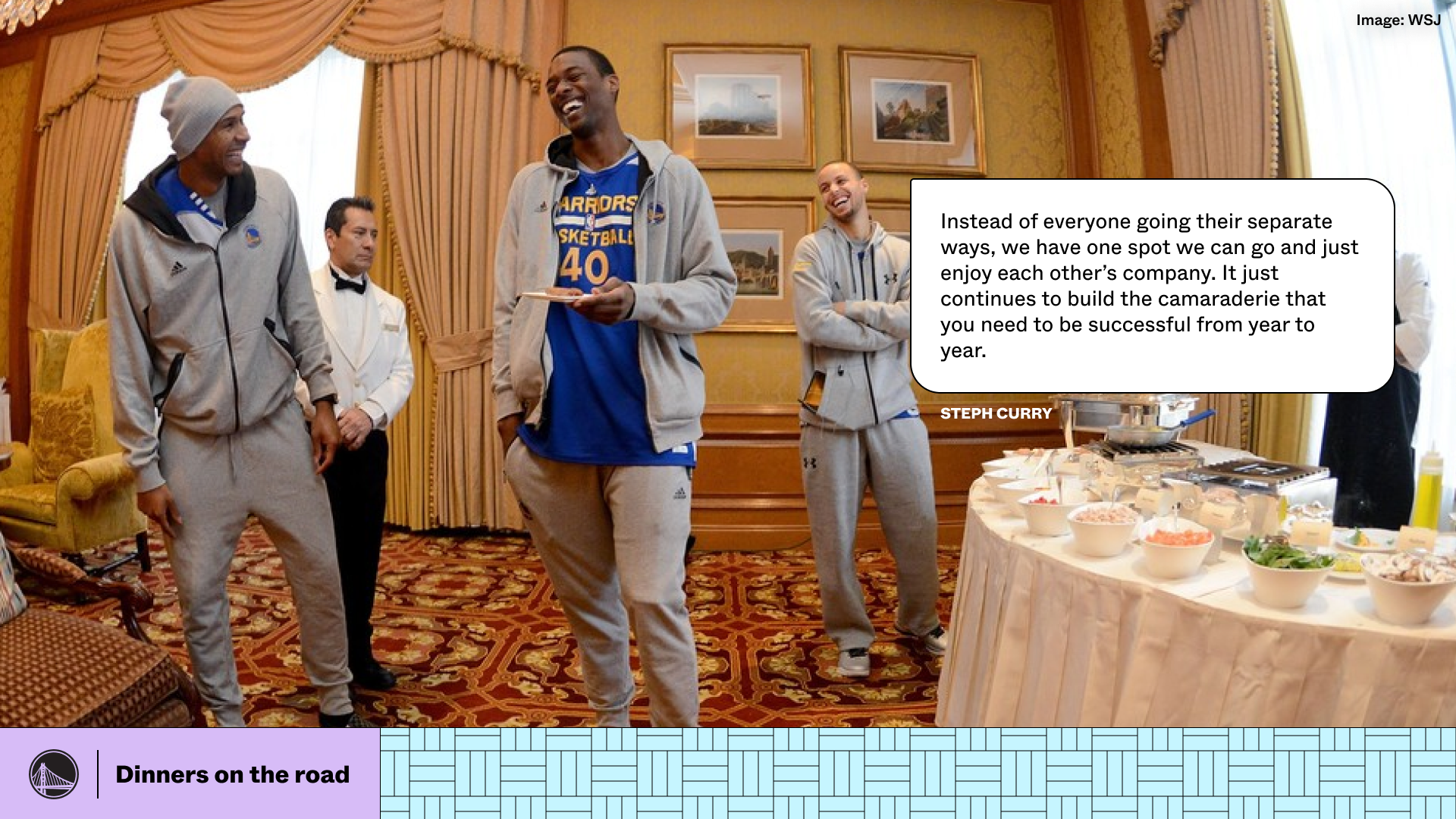





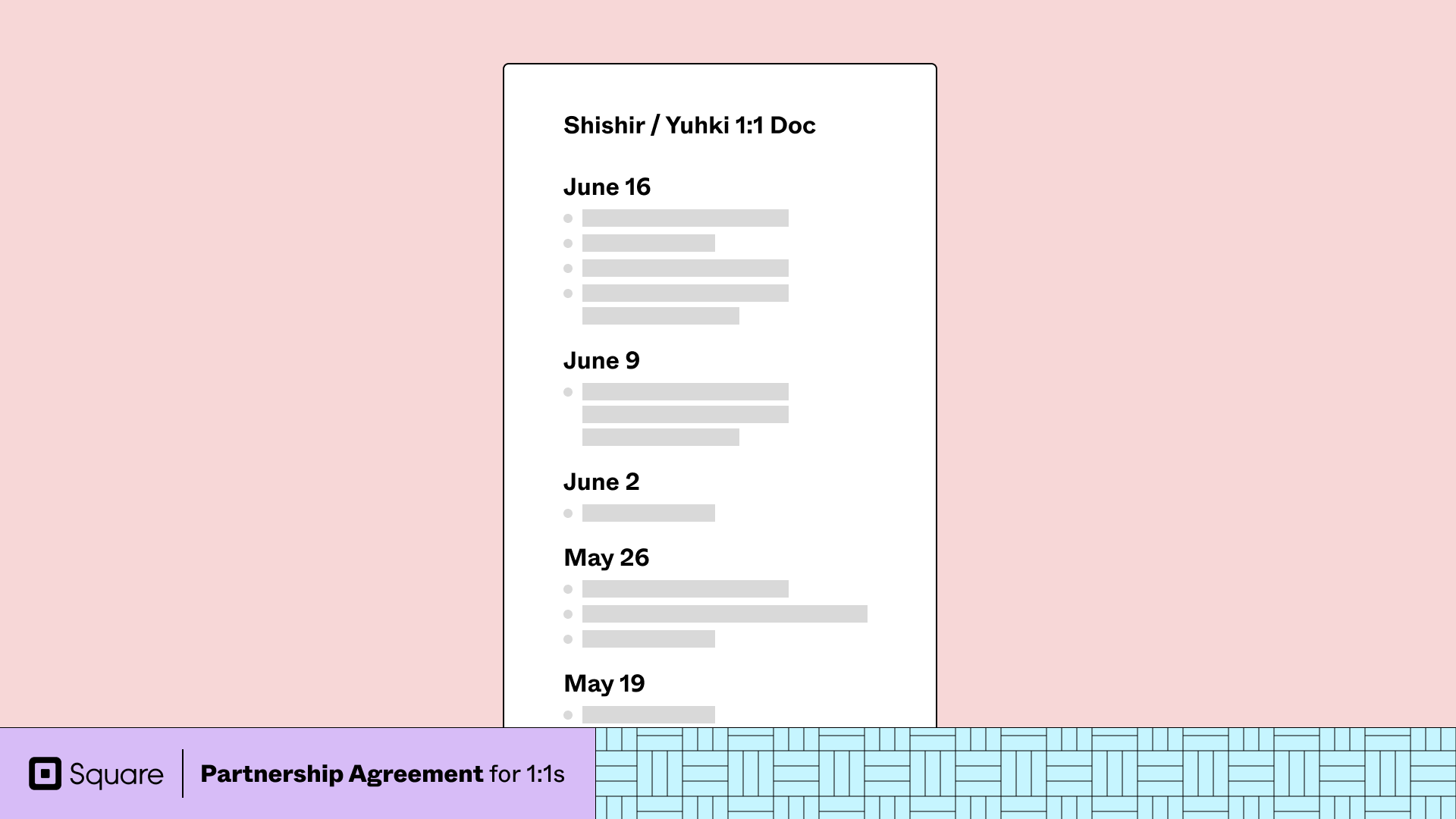


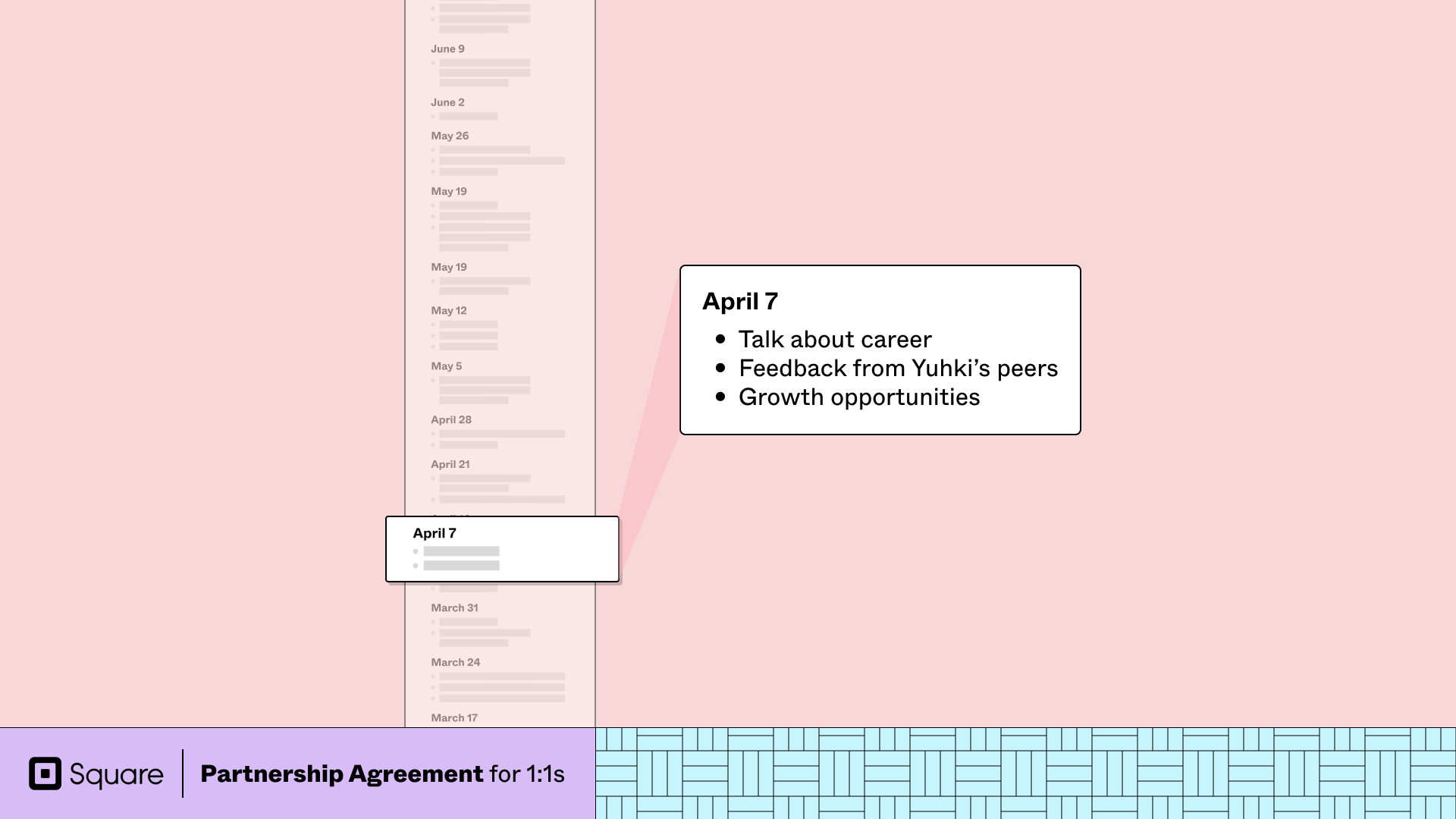


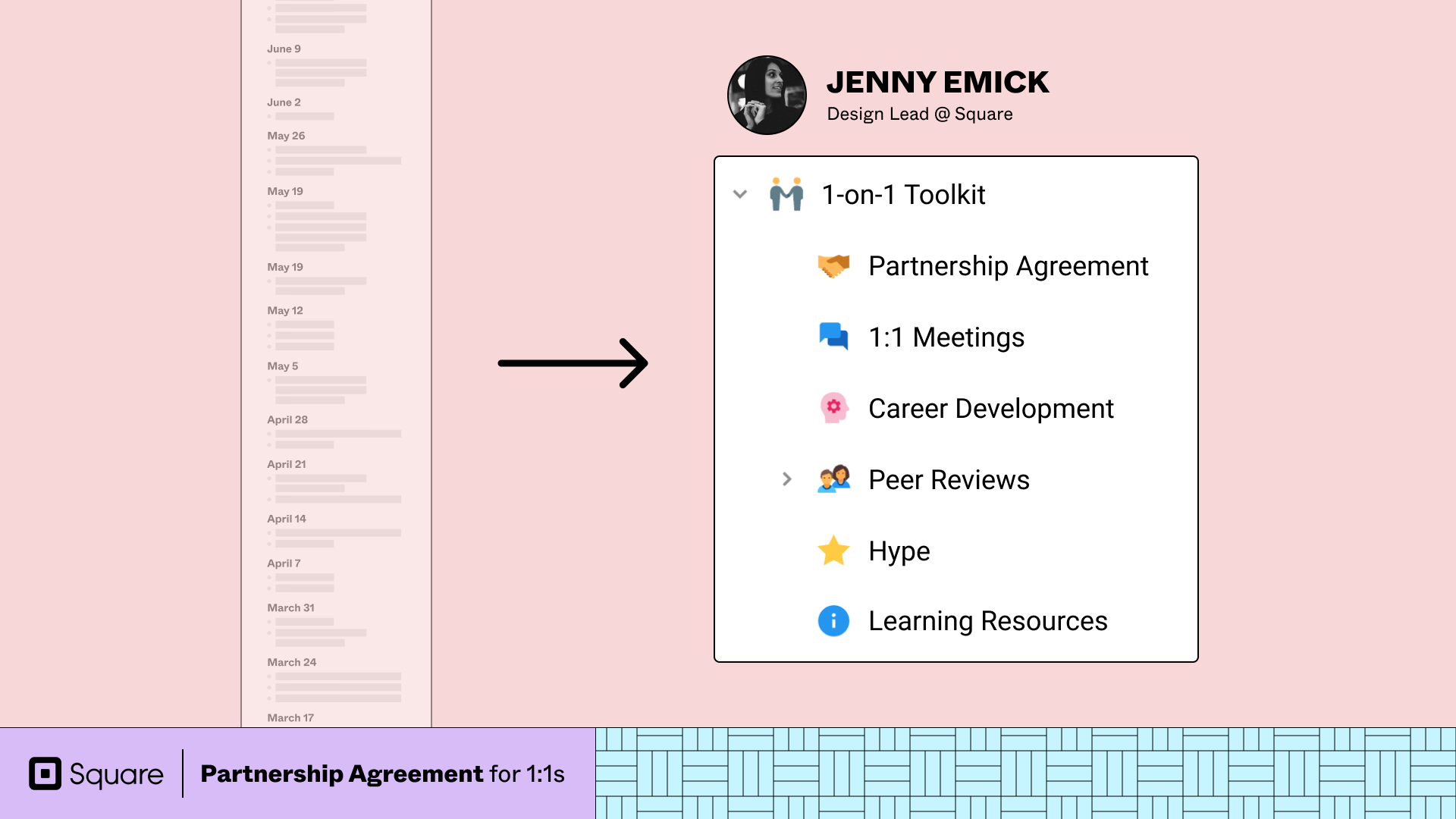


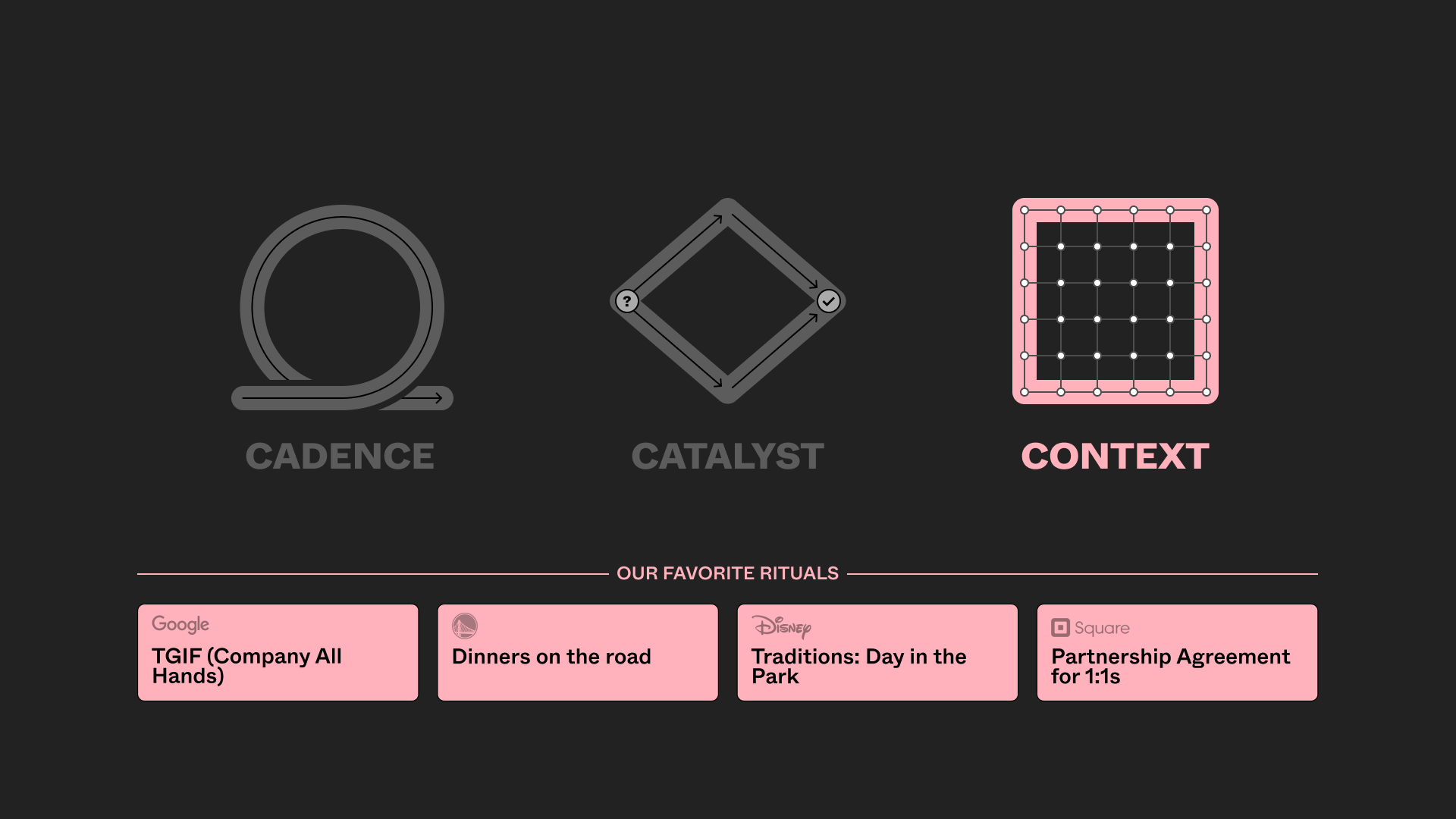
 Cadence meetings, where there are a ton of rituals teams have created to make these less boring, more efficient, and more human. Catalyst meetings, where decisions get made, and there are so many rituals for framing the problem, gathering everyone’s feedback, and making clear who actually makes the decision.And Context meetings, where teams have found creative ways to connect people to each other and to the mission and values of the company.
Cadence meetings, where there are a ton of rituals teams have created to make these less boring, more efficient, and more human. Catalyst meetings, where decisions get made, and there are so many rituals for framing the problem, gathering everyone’s feedback, and making clear who actually makes the decision.And Context meetings, where teams have found creative ways to connect people to each other and to the mission and values of the company.
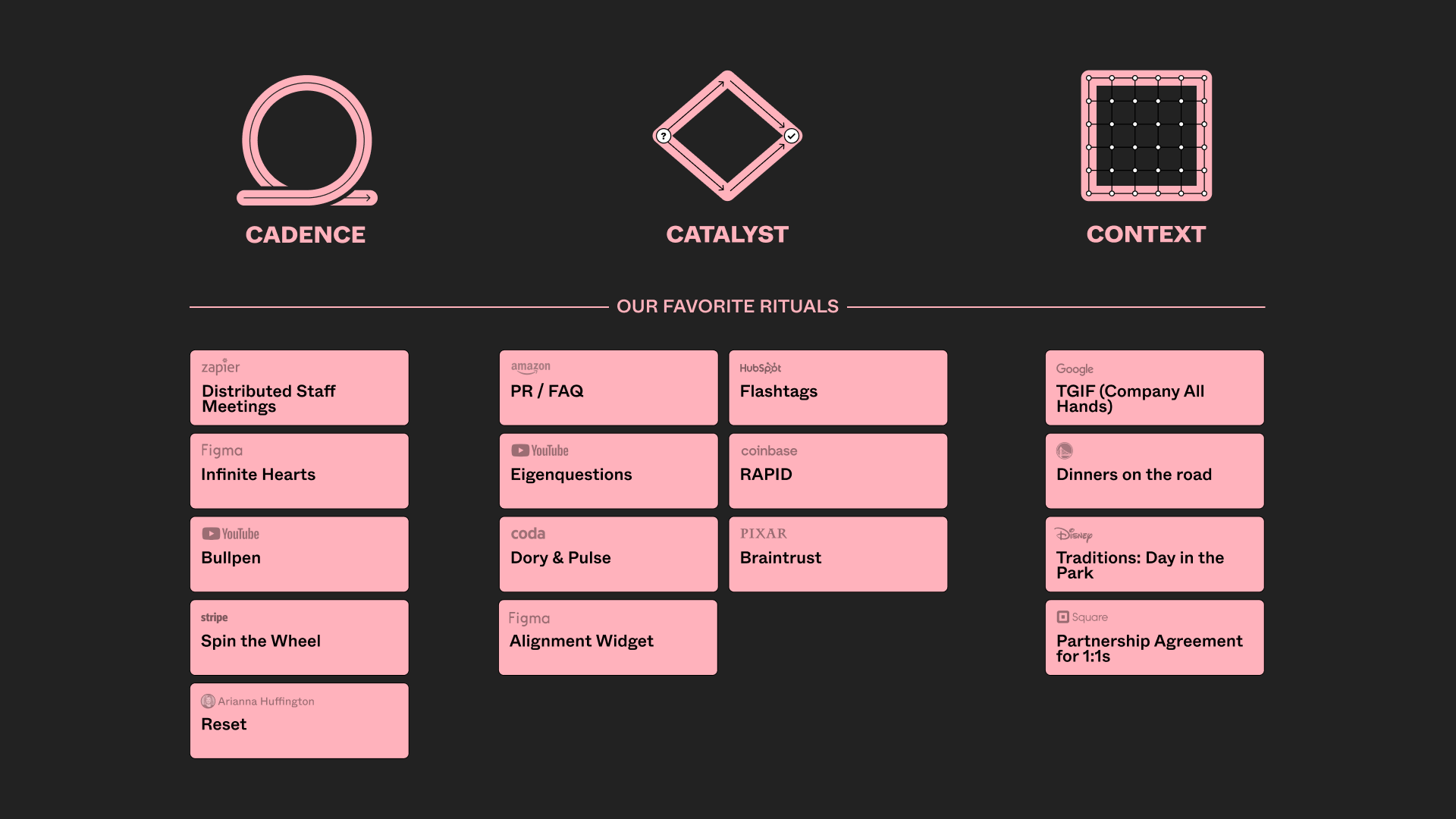


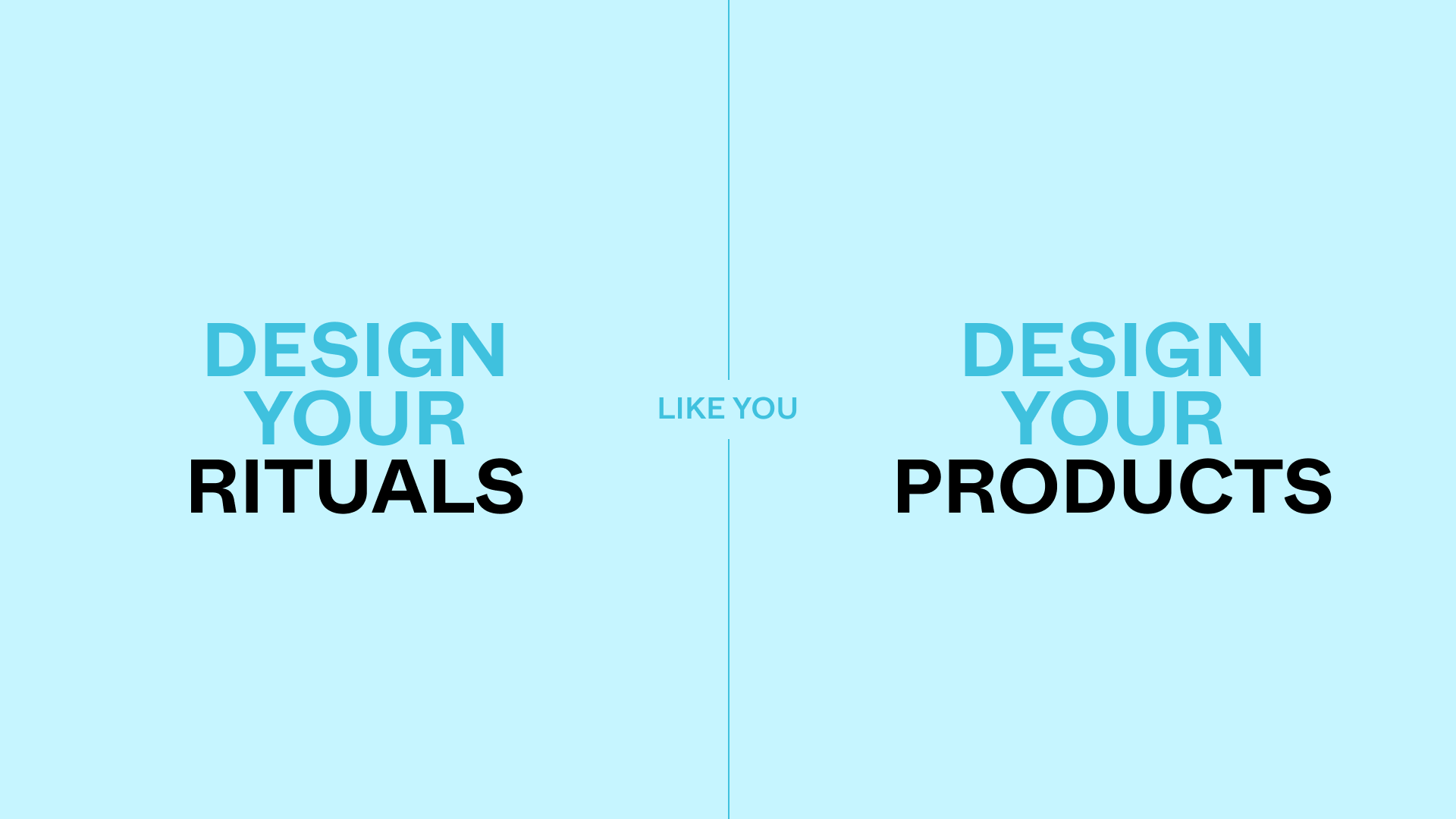


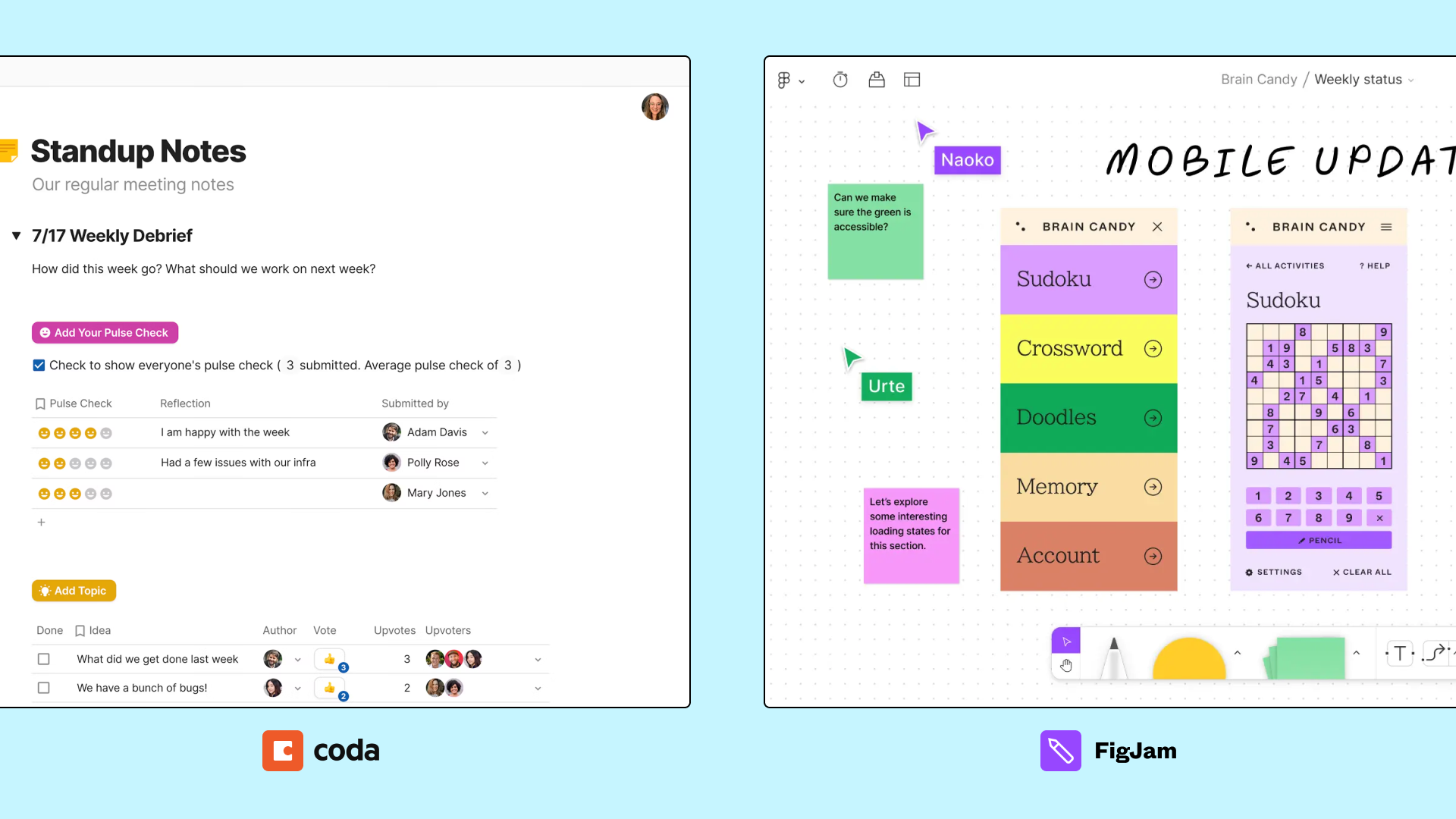


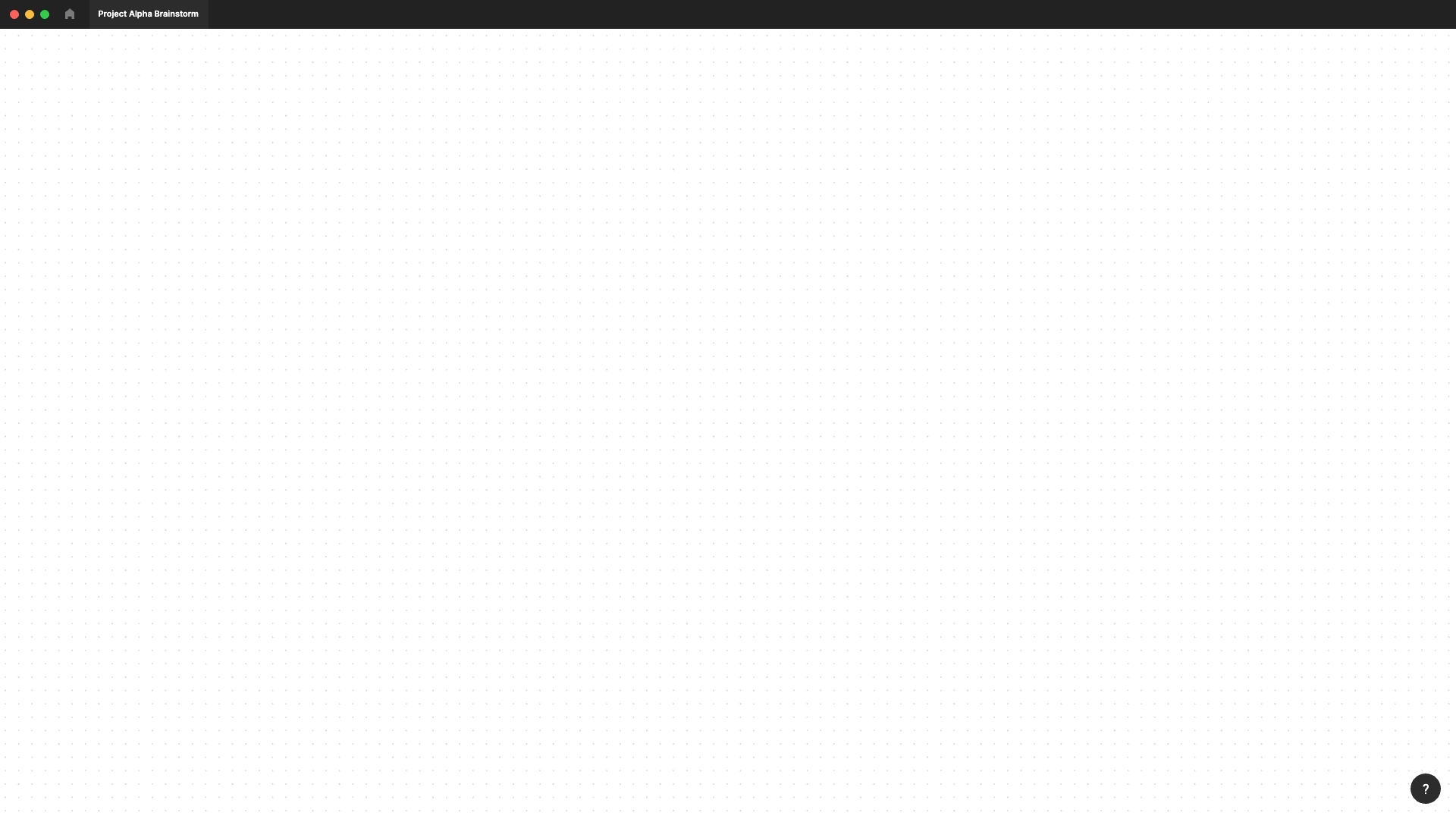





 Script
Script
Here’s the script for our talk. We didn’t look at it while speaking, so the words may not match exactly, but it’s pretty close. And if you like the template, feel free to copy it and make it your own:
Copy template
Category
Section
Script
Category
Section
Script
Category
Section
Script
TOTAL TIME:
34 mins 19 secs
Shishir @ words per second
19 mins 23 secs
000
3.3 Yuhki @ words per second
14 mins 56 secs
000
3.1Who
Section
🔗
Category
Search
Section
Who
.
Script
🔗
Figma Slide
Category
⏰
Section
Who
.
Script
🔗
Figma Slide
Category
⏰
Intro

Good afternoon, everyone. Thank you for having us, it’s wonderful to be here.

[Config '23] Rituals of Modern Product Teams - Opener — Figma + Coda

Narrative
4 secs

I want to start with a story from back in 2015, when I had just started at Uber.

[Config '23] Rituals of Modern Product Teams - Slide

Story
6 secs

I’m barely one week into my job, and I received this email from Jeff Holden, our Chief Product Officer.
Yes, all he wrote was a single question mark. And beneath it was an email he forwarded from a random customer who had a poor pickup at the SFO airport.

[Config '23] Rituals of Modern Product Teams - Document

Story
15 secs

My initial thought was... “it’s only one customer...”. I don’t need to stress out about this right now, right?
Because I was a bit unsure of what to do, I asked one of my fellow PMs just in case. And he told me I need to drop everything I’m doing right now and investigate exactly what happened to this customer and get back to Jeff ASAP. So I did just that — I pulled up the trip logs, tried to make sense of what went wrong based on our analytics, wrote up an entire play-by-play document with maps and screenshots, created tasks to fix all the bugs I discovered, and wrote back to both Jeff and the customer to apologize for the experience. It was one of the most stressful onboarding experiences I’ve ever had.

[Config '23] Rituals of Modern Product Teams - Document

Story
44 secs

I later learned that there was an origin story to this question mark. It was a tradition Jeff Holden had borrowed from his boss back at Amazon—another Jeff, Jeff Bezos. Bezos would often forward random emails from customers complaining about their experience to his reports. He wouldn’t say anything else, just a question mark. But everyone knew what it meant - drop everything now and get him an answer. And if your answer wasn’t good enough? Well sometimes you got two question marks, which was really not good.

[Config '23] Rituals of Modern Product Teams - Document

Story
28 secs

And behind this question mark was a really important company value to Amazon, around customer obsession, and Bezos was showing that no customer was too small to ignore.

[Config '23] Rituals of Modern Product Teams - Document

Story
9 secs

I was fascinated that a simple question mark could so single-handedly encapsulate the ethos of the culture, and by extension, the product of a company.
And I started to wonder... do other great companies have a similar kind of “secret” that embodies their unique way of working?

[Config '23] Rituals of Modern Product Teams - Document

Story
15 secs

I had a big aha moment when I started talking with my friend and mentor, Shishir, who I worked with at YouTube, and is now the founder of Coda.
He’s been writing a book... all revolving around the topic of “rituals.” And I realized this was the label I had been missing!
Rituals are the thing that codify the unique ways of working, a company’s special culture.
And these rituals are so interesting that I wanted to share them with all of you... so I invited Shishir to give this talk with me.
And together we’re going to spend the next little while exploring the concept of rituals and why they are completely game-changing for the best teams. Shishir thanks for being here.!

[Config '23] Rituals of Modern Product Teams - Document

Narrative
39 secs

Thanks — It’s so fun to be giving this talk with you. First time for us to present on this topic together - it will be a bit of an experiment!

[Config '23] Rituals of Modern Product Teams - Document

Narrative
9 secs

Ha yes, this will be fun!
OK Shishir, before we get too far — let’s define terms. What’s a ritual?

[Config '23] Rituals of Modern Product Teams - Document

Narrative
6 secs

My story starts with this very interesting person: Bing Gordon. Chief Creative Officer at EA, now famous investor - boards of Amazon, Zynga, etc. I think Bing is one of the best non-linear thinkers in the valley.
I sat on a startup board with him, and one day he made this very interesting provocation: Great companies have a small list of Golden Rituals.

[Config '23] Rituals of Modern Product Teams - Slide

Framework
19 secs

The CEO of the startup asked him, “what’s a Golden Ritual?”
He said great companies have a small list of Golden Rituals. He quickly rattler off his the 3 tests.
He followed up quickly with a bunch of examples - Amazon has 6-pagers and 2-pizza teams, Google has TGIF and OKRs, Salesforce has V2MOM, and so on. And he implored the CEO of this startup to put as much thought into his rituals as he was putting into his product. It was a very interesting challenge!

[Config '23] Rituals of Modern Product Teams - Slide

Framework
28 secs

Super interesting — now how did this turn into a book?

[Config '23] Rituals of Modern Product Teams - Slide

Narrative
4 secs

I got pretty obsessed with this idea. I talked about it on some podcasts and people started emailing me stories of their rituals. During the pandemic, when we all got trapped in our homes, I decided to run a series of biweekly dinners with interesting leaders to hear about their rituals.
Somehow, over the last 3 yrs, I have now interviewed over 1000 people and built a huge database of rituals.
I decided to organize them into a book that I’m working on publishing next year.

[Config '23] Rituals of Modern Product Teams - Document

Narrative
26 secs

Fun side note - I’ve been to a bunch of those dinners, including the very first one! Ok so what have you learned?

[Config '23] Rituals of Modern Product Teams - Document

Narrative
7 secs

Learned so much. Met so many interesting people with such great stories.
But most interesting aha was from my interview with Dharmesh Shah, founder of Hubspot...

[Config '23] Rituals of Modern Product Teams - Document

Narrative
8 secs

“The reason I’m so interested in this topic is that I think it’s a critical part of great companies. You see we all build two things as a company — one is a product for our customers. The other is a product for our employees.

[Config '23] Rituals of Modern Product Teams - Slide

Narrative
14 secs

“If you ask people to name this product, they would call it “Culture”. But if you ask them to really describe it, describe how it works in practice, they will immediately describe Rituals.”
And Dharmesh really convinced me that great companies put as much thought into their rituals as their product.

[Config '23] Rituals of Modern Product Teams - Slide

Narrative
15 secs

I love that. And that’s relevant for this group.
Everyone here already plays a big role in designing your products. My main goal for this talk is to convince you that it is as important to design your rituals like you design your products.

[Config '23] Rituals of Modern Product Teams - Slide

Narrative
14 secs

We spent a bunch of time hunting through the 1000+ rituals Shishir has collected over the years.
There are rituals about meetings, about planning, about personal productivity...
We wanted to narrow this down to some of our favorite, thought-provoking rituals to share today...

[Config '23] Rituals of Modern Product Teams - Document

Narrative
14 secs

.. and I noticed that Shishir, you organized a number of rituals under this visualization here, which I really liked.

[Config '23] Rituals of Modern Product Teams - Document

Framework
6 secs

Oh that’s one of my favorites too! This came out of my rituals interview with Elise Keith, the founder of Lucid Meetings. Her company is 100% focused on helping organizations run effective meetings. They get hired by companies, agencies, and even governments.

[Config '23] Rituals of Modern Product Teams - Document

Framework
13 secs

She and I worked on classifying meetings. I now believe every meeting falls into one of these 3 buckets. And we picked a distinct shape for each one with its own specific meaning

[Config '23] Rituals of Modern Product Teams - Document

Framework
10 secs

First is Cadence meetings. Picture staff meetings, stand ups, etc. We chose a circular shape for these because they represent a cycle - set goals, execute, reflect. These meetings tend to be recurring meetings with a standing group. And just like a circle, they keep things rolling.

[Config '23] Rituals of Modern Product Teams - Document

Framework
14 secs

Second is Catalyst meetings. Picture your review meeting, product review, design crit, etc. We chose a diamond shape for these because they represent opening up questions and closing them down. Diamonds are also spiky and direction changing, catalyzing teams. And you can’t do too many without burning out.

[Config '23] Rituals of Modern Product Teams - Document

Framework
15 secs

Third is Context Meetings. There’s a very wide variety of these - the weekly all-hands, team offsite, new hire orientation, even 1-1s. We chose a square for these because they are the foundation on which you build. These meetings establish knowledge, insight, and connection. Easy to forget but if you stack these squares well, you can build much higher.

[Config '23] Rituals of Modern Product Teams - Document

Framework
18 secs

Another way to think about these buckets is with their key question:
A great cadence meeting is focused on “Are we on track for the goals we set?”
A catalyst meeting tends to be decision focused: “Did we get an answer to our question?”
And context meetings have the broadest outcome: “Did we come away better enabled to do our job?”
It’s important to have a healthy mix of all 3.

[Config '23] Rituals of Modern Product Teams - Document

Framework
20 secs

Today, we’re going to use this lens to organize some of the best rituals we’ve seen. I know meetings don’t sound exciting at first glance, but actually some of the most interesting rituals come alive in these areas.

[Config '23] Rituals of Modern Product Teams - Document

Narrative
12 secs
7 mins 15 secs
Cadence

Ok let’s talk about Cadence meetings.

[Config '23] Rituals of Modern Product Teams - Document

Framework
2 secs

In 1961, JFK set a goal of “landing a man on the moon by the end of the decade”. It was a bold statement, and it totally motivated the country.
But what did he do next to make sure this actually happened?
He scheduled a regular check-in with the head of NASA.
This is a classic cadence meeting.

[Config '23] Rituals of Modern Product Teams - Document

Story
17 secs

As a reminder - Cadence meetings are presented by a circle that keeps things rolling. Staff meetings, standups, project check-ins. Since these meetings are so common, many rituals are formed around them.

[Config '23] Rituals of Modern Product Teams - Document

Framework
10 secs

In one of our rituals interviews, I met with people from about 50 companies at once, and asked them all to write down what their cadence meetings feel like. Here’s what I heard back.
Boring, random. Feels like a chore. The meeting feels inhuman, inefficient. “It’s something I have to attend vs want to attend.”
But when I interviewed the best teams, they had done some unique rituals to combat this.
Yuhki, which cadence ritual do you want to start with?

[Config '23] Rituals of Modern Product Teams - Document

Narrative
24 secs

Zapier’s weekly leadership meeting begins with an interesting ritual. There’s a doc that gets sent out a few days before, which looks something like this...
Each leader is asked to write notes about how they’re feeling, what’s most top of mind for them, and share recent learnings, decisions, or even needs.
And when the actual meeting begins, it actually begins with 10 minutes of silent reading of each other’s updates.

[Config '23] Rituals of Modern Product Teams - Document

Story
23 secs

And it’s what happens during these 10 minutes that’s interesting. People start commenting on each other’s bullets, and entire conversations start happening in the margins.
And by the time the 10 minutes is over, a lot of topics were already discussed, and the remaining time can be used for the topics that people upvoted.
What makes this efficient is, Zapier, in these 10 minutes, is able to go from a single-threaded conversation to a multi-threaded conversation, where people are joining the conversations that matter most to them. It’s so much less boring than just going around the table and listening everyone’s updates, when some of them aren’t as relevant to you.

[Config '23] Rituals of Modern Product Teams - Document

Story
36 secs

Silent readings like this are huge at Figma as well.
Early on at Figma, we used to have an project update meeting called “Coordinator Meeting,” where we used to go around the table and have each team lead provide updates on the progress of their projects. This quickly became a O(n) problem — meaning, the time this took scaled linearly with the number of teams we had. So we switched over to silent reading, and on Coda, had these buttons that people could click. One to raise your hand to want to talk about it. And another just to express your excitement for the project.
This was obviously way more efficient since we just talked about the projects people wanted to discuss, but there was also something cool about the hearts — it gave people the ability to express acknowledgment and gratitude even if we weren’t choosing to discuss the topic.

[Config '23] Rituals of Modern Product Teams - Document

Story
49 secs

And the fun thing was, we actually had a bug in the button where anyone can hit it as many times as they want to inflate the count, and people really took advantage to show the love, which I thought was very Figma.

[Config '23] Rituals of Modern Product Teams - Document

Story
14 secs

And this ethos remains for meetings that happen in FigJam as well, where people are responding to wins and learnings with seemingly infinite heart stamps and “plus ones,” which I think is a great way to shower people with love.

[Config '23] Rituals of Modern Product Teams - Document

Story
13 secs

Those examples highlight an interesting challenge with Cadence meetings: they are naturally single threaded.
I was talking about this with my friend Reid Hoffman. He hosts really fun dinners and whenever he does, he lets me know in advance if it’s going to be a single-threaded or multi-threaded. I’m sure you can picture the difference - a single-threaded discussion has one topic at a time. Everyone pays attention, and if you want to change the topic, you have to change it for everyone. But think about when you have a multi-threaded event - maybe like a conference or a happy hour. Everyone splits into small groups and many topics are discussed at once.
We used this insight in one of my favorite rituals from YouTube. We called it Bullpen and it was a simple idea. We set up a 90 minute time block and invited the YouTube leadership team. But there was intentionally no agenda. Very quickly small groups would form and many conversations would emerge at once. It was a perfect sponge for those ad-hoc 5-minute conversations that could easily turn into boring single-threaded topics in a meeting, or into separate 30 minute ad-hoc meetings that always seem impossible to schedule.
This became really popular and we gradually got rid of a bunch of other standing meetings, and started running Bullpen multiple days per week. And this ritual spread throughout Google and to other companies as well.

[Config '23] Rituals of Modern Product Teams - Document

Story
1 min 12 secs

Interestingly, when we started Coda, we wanted to create a similar format, but we had a challenge - we were a distributed team so just putting everyone in “one room and letting them self-form” wasn’t going to work. We ended up building a new process that has scaled well for us - people list out topics and indicate who they need and a guess at the length. It even has a fun way to highlight conflicts so people can order discussions.
And because it’s in a table, we’ve been able to measure the impact. This is from a Bullpen last week - this group covered 30 topics in a single hour. That’s really the value of being multi-threaded

[Config '23] Rituals of Modern Product Teams - Document

Story
36 secs

The multi-threaded / single-threaded dynamic reminds of another ritual: Stripe’s Spin the Wheel ritual.
David Singleton, Stripe’s CTO — and someone you saw on mainstage yesterday — gives a great description of how he runs Ops Reviews at Stripe. Like many companies, they have an incidents review to go through everything that went wrong in particular week and go through the post-mortems. For a service as complex as Stripe, there’s an extremely wide range of issues - some were tiny blips whereas others are really large. And they way they do it is to “spin a wheel” and pick a random incident to go through.
This has a few impacts:

[Config '23] Rituals of Modern Product Teams - Document

Story
1 min 19 secs

There’s a ritual that took this “spin the wheel” idea for a completely different purpose.
Arianna Huffington has a fantastic ritual called Reset. While I describe it, I’ll just start playing her Reset.
Though Arianna totally changed the face of journalism with the Huffington Post, her new company Thrive is based on a lot of her research in neuroscience. She’s learned that we can completely change our brain orientation with a 60-90 second “Reset”. The idea is that every person on the team builds a video like this. It’s a breathing exercise, but the video is full of pictures of her family, her hometown in Greece, her favorite quotes.
She can play this for herself at the start or the end of the day, or in stressful moments.

[Config '23] Rituals of Modern Product Teams - Document

Story
38 secs

But the amazing thing is that she turned this into a team ritual. She got inspired by the Stripe Spin-the-Wheel ritual and followed the idea. At the start of the meeting, they pick someone at random and play their reset.
Again this has two different impacts:

[Config '23] Rituals of Modern Product Teams - Document

Story
35 secs

Ok that’s a lot of great Cadence rituals - from some amazing people and companies.
Just remember that Cadence rituals are the ones that keep your team rolling. So think about how to be as efficient as possible - perhaps being more async or multithreaded like Zapier or the YT Bullpen, or being a bit intentional random like how Stripe spins a wheel, and don’t forget to inject some humanity - perhaps a small touch like the Figma infinite hearts or a different starting point, like Arianna’s Reset.

[Config '23] Rituals of Modern Product Teams - Document

Narrative
27 secs
7 mins 54 secs
Catalyst

While Cadence meetings are a way to keep a project or team rolling, Catalyst meetings are focused on a topic: a decision that needs to get made, or a big question that needs to be explored more deeply.

[Config '23] Rituals of Modern Product Teams - Document

Framework
12 secs

You might ask — wait, why is this a different kind of meeting from Cadence meetings? It would seem like a staff meeting or a team standup is a perfectly acceptable place to make decisions.
But the problem is — you often have the wrong people in the room. The entire exec team might not need to be there for a decision, or you might not have the people who understand the matter deeply there.
So what I’ve noticed is that great teams actually keep their Catalyst and Cadence meetings as separate forums. By making them distinct, you’re able to bring the correct audience to the table, and you’re able to tailor the format of the meeting exactly to the needs of the topic.

[Config '23] Rituals of Modern Product Teams - Document

Framework
40 secs

Ok so you have a separate Catalyst meeting for decision making. What are you going to do there? I found that many companies have a great decision doc template that standardizes how these discussions happens.

[Config '23] Rituals of Modern Product Teams - Document

Narrative
11 secs

The most famous example is probably the Amazon “press release and FAQ” It’s a doc that’s written at the very beginning of the project and is written from a future perspective, describing a hypothetical launch of something that’s not yet released. By starting with the press release and customer FAQs, you’re forced to think everything through from the customer’s point of view. If the customer benefits in the FAQ or press release don’t sound very interesting or exciting to customers, perhaps they actually aren’t, and this shouldn’t be built!

[Config '23] Rituals of Modern Product Teams - Document

Story
29 secs

This kind of doc is a pretty iconic way to frame a great Cadence meeting, and it’s mimicked by other companies, like Square’s SPADE doc or Zoom’s Root Cause Reasoning writeup.
So as your form your distinct Catalyst forum, make sure to think about the Decision Doc template that matches your team’s culture.

[Config '23] Rituals of Modern Product Teams - Document

Story
17 secs

The key goal of a Decision Doc is to frame a decision.
One of my stickiest rituals from YouTube was one we called Eigenquestions.
I’ll explain through a story. Back in 2009, the YouTube team was really struggling with a tricky question that we called the “the Modern Family” question. One of our top 5 search queries each week was for Modern Family, which happened to be the #1 show on TV, so people naturally came looking for it. There was one big problem though: we didn’t have Modern Family on YT.
Interestingly, ABC had decided to put every episode of Modern Family online for free. That may seem obvious these days but it was groundbreaking then - no network had done that.

[Config '23] Rituals of Modern Product Teams - Document

Story
37 secs

So the Modern Family question was: should we link out to ABC.com?
The team divided on this question. Half felt that we should “do what the user wants” and “link out” to the site. But the other half felt that if we linked out, then we would lose our chance to host that type of content on YT.
After many rounds of discussion, we held an offsite to try to resolve this conflict and I was put in charge of framing the choice. The night before, as I was pulling it together, I read a writeup from a different team - the Google Shopping team.
They were in an all-out battle with Amazon, but were finding that they were losing. Google Shopping assumed they would win by being more comprehensive - why go to Amazon, when you can come to Google and find results for everything on Amazon and the rest of the web? But users kept telling them they valued consistency - Amazon’s results and pricing were clear, they understood the reviews and return policies, how shipping worked, etc.

[Config '23] Rituals of Modern Product Teams - Document

Story
54 secs

So I decided to reframe our Modern Family YT question. Instead of asking “should we link out to other sites or not”, I started with a question of “in 5-10 years, will the online video market value consistency or comprehensiveness?”
This frame led to a much more interesting discussion and we decided that the video market would value consistency over comprehensiveness. As a sidenote: I think we were right - 15 years later, the online video market is huge, but there’s no one site that has all the video.
This led to an obvious answer to Modern Family - we would not link out. But it also led to answers to many other questions. E.g. we decided to stop supporting 3rd party embeds. Most interestingly, this led to us taking back control of our mobile app from Apple - which is probably a separate fun story.
And this whole process became labeled the Eigenquestion process.

[Config '23] Rituals of Modern Product Teams - Document

Story
47 secs

The name Eigenquestion is completely made up. But for those of you that want the source, it comes from a math concept of eigenvectors. The math majors in the room will remember that an eigenvector is the “most discriminating vector in a multi-dimensional space”. But you don’t really need to know the math.

[Config '23] Rituals of Modern Product Teams - Document

Story
16 secs

A better definition is this: the Eigenquestion is the question where, if answered, it likely answers the subsequent questions as well.
So in this case, by answering the Consistency vs Comprehensiveness question first, the Link Out question became obvious. When you have a set of questions that might be ranked by urgency or impact, this framework re-ranks them - focus on the one that is likely to answer most of the others first.
This process can be really powerful. Instead of spending most of your time looking for the right answer, this ritual will lead you to focus on asking the right question first

[Config '23] Rituals of Modern Product Teams - Document

Story
32 secs

Once you have a great frame, you need to figure out how to get the opinions in the room. And there are so many great rituals around getting feedback. Shishir, I really like how Coda does it; want to talk about it?
Story
14 secs

Ah my favorite Coda ritual. In fact, if you were to ask a random Coda employee on their first Friday about our golden ritual, they would certainly tell you about Dory / Pulse.
The ritual is simple: when we have questions and discussion topics, rather than raising our hands or talking over each other, we add our topics to a “Dory” and we upvote/downvote the topics. In case you’re wondering, Dory is named for the fish who asks all the questions.
The second part is Pulse which is how we get feedback and alignment. We ask everyone to write their view on a particular decision. This could be anything - should we ship this feature, should we hire this person, buy this company, etc. Everyone puts in a numerical score of their alignment and a written description of why. And one important thing - we hide everyone else’s Pulse response until everyone is done answering. That’s how we combat groupthink.
Now why does every new Codan talk about this on their first Friday? It’s because it ties to our culture. They’ll talk about how one of our values is “Great ideas can come from anywhere”, and how this Dory ritual allowed them to outvote the CEO on a particular topic, and how Pulse gave them a voice in a decision that was actually read and understood, not talked over or forgotten.

[Config '23] Rituals of Modern Product Teams - Document
Story
1 min 10 secs

At Figma, we have our own version of Pulse as well, which we call the Alignment Widget. We paste this next to any big questions during a discussion to understand where people are at, and prioritize spending time on the discussions where there’s the least amount of alignment.

[Config '23] Rituals of Modern Product Teams - Document

Story
15 secs

Getting feedback in this way is great, but sometimes, it can get so overwhelming to get everyone’s different opinions.

[Config '23] Rituals of Modern Product Teams - Document

Narrative
6 secs

This isn’t exactly a ritual, but at Uber, we talked about a phenomenon of “swooping and popping” where random company leaders came into your doc, left a bunch of feedback, and left, never to be seen again (but leaving you to feel like you have to respond to each piece of feedback somehow).

[Config '23] Rituals of Modern Product Teams - Document

Narrative
17 secs

There are, of course, rituals that companies have created to combat this problem.
At Hubspot, they invented this concept of “flashtags” — a way for company leaders to indicate the importance of their feedback. It’s basically a hashtag they put at the end of their feedback to indicate how important it is to address.
So #fyi means the leader just wants to express the feedback but doesn’t expect you to immediately action on it, whereas you get stronger and stronger sentiments as you go towards the right.

[Config '23] Rituals of Modern Product Teams - Document

Story
28 secs

The funniest thing, though, is that they attached a “hill-dying status” to each of these.
So #plea obviously means that you’re willing to die on the hill, so there’s an expectation that you act on this feedback.

[Config '23] Rituals of Modern Product Teams - Document

Story
12 secs


[Config '23] Rituals of Modern Product Teams - Document

Story
26 secs

OK so you’ve framed the problem... you’ve gotten some good feedback and know where everyone is at... the last thing is deciding who actually makes the final decision and clarifying roles and responsibilities.
Narrative
10 secs

A lot of companies have different ways of expressing this. You’ll hear about DRIs, you’ll hear about RACI or DACI...
Coinbase uses a framework called RAPID, which assigns different roles to different people.
What they do with this is what’s interesting. Much like Pulse, they ask for everyone’s sentiment. But they organize the sentiment by role, so it’s clear how to weigh everyone’s sentiment / feedback.
It fights a common misconception of the Pulse ritual, which is that everyone’s vote matters and majority rules. Coinbase strikes a right balance of eliciting everyone’s sentiment, but also being clear how you move forward with that information.

[Config '23] Rituals of Modern Product Teams - Document

Story
33 secs

I love that ritual and we’ve fully adopted that at Coda. Works great!
But we merged the idea of Roles with another fantastic ritual from an iconic company: Pixar.
Here’s a fun fact: Since 1979, Pixar has created 24 feature-length films and earned 23 Academy Awards®.
What’s the secret to their success? Is it a particularly talented individual? A piece of unique hardware or software? Something about the food they eat?
No no no. When you ask anyone from Pixar about this, they always talk about a ritual: the Pixar Braintrust.
It’s a simple idea - when you’re making a film at Pixar, you regularly schedule screenings with a group called the Braintrust. They all watch the movie together and listen for each other’s reactions. There’s very careful note of when someone laughs, when they cry, and how much. And afterwards, there’s a very frank discussion with the braintrust.
Much of that process is amazing, but probably feels distant for those of those that don’t make films for a living. But the part that really stuck with me was the name. Braintrust.
I’ve always struggled with role taxonomies like RAPID, DACI, RACI, etc because they all start with the idea of an explicit Approver. And it’s just so easy to have that disempower the truly responsible driver. But at Pixar, this role was clear - the Braintrust doesn’t approve anything. In fact, you’re not even required to take your film to the braintrust. And yet every filmmaker does - on average a movie does 8 braintrust screenings before release.
At Coda, we renamed our Approver role to Braintrust. We wrote down a set of principles - like Add Lift not Drag. We don’t want people to dread these reviews or these reviewers - feedback is a gift, and we want to make sure it’s seen that way.

[Config '23] Rituals of Modern Product Teams - Document

Story
1 min 33 secs

Here are the rituals around Catalyst meetings we just covered.
To recap:

[Config '23] Rituals of Modern Product Teams - Document

Narrative
23 secs
10 mins 42 secs
Context

Ok ready for the 3rd set of rituals: let’s talk about Context. Context meetings are squares because they build on each other. The key test is simple: did we come away better enabled to do our jobs?

[Config '23] Rituals of Modern Product Teams - Document

Framework
11 secs

Whenever we talk about Context meetings, what’s the most common meeting we all think of? The All Hands!
And for me, the most iconic example of an all hands is Google TGIF.
From the very early days of Google, the founders, Larry and Sergey would end each week with an all-hands called TGIF, Thank God it's Friday.
Because this ritual has been mimicked by so many companies, this no longer seems out of the ordinary. But when I first arrived at Google, it felt completely foreign. The founders standing in front of the company answering literally any question that googlers would ask.
Now you might ask: what’s the goal of this meeting?
It was definitely not a catalyst meeting, there were no decisions to be made. And it wasn't the cadence meeting, it wasn't a group trying to hold itself accountable to its goals. And to be clear, it was an extremely expensive meeting, the entire company spending an hour together every week, not to mention the many hours of prep.
So why bother? If you ask Googlers coming out of TGIF, they would all talk about how the meeting gave them context. They could all read the launch announcements beforehand, but Larry and sergey's rendition contextualize for them how it fit into the direction the company was headed. And the Q&A allowed them to quickly fill in the gaps on the burning questions on their mind so that they could go back and be productive in their own goals.
To think about it in terms of our visual, every TGIF gave googlers a building block of context on which they could stack their own work

[Config '23] Rituals of Modern Product Teams - Document

Story
1 min 47 secs

All Hands are often about helping people get to know what the company is up to. But it’s also important to have people get to know each other as well.
I think some of you in the audience are fans of the Golden State Warriors, and I’m sure many of you can agree that they’re a pretty special team. They are actually one of the most teamwork-oriented teams in the league. But if you talk to the coach Steve Kerr, he'll tell you that this form of teamwork has to be formed deeper than just what they do at practice. He often talks about one of the small but unique things that they do... Dinners on the road.
In most other teams, the norm is that everyone kind of goes their separate way after they land in a city. They have friends to catch up with. Or sometimes they have nearby family. But the Warriors are unique in that they rent a room in a local restaurant, to enjoy each other’s company and build camaraderie. For a while they were one of the only teams in the NBA who did this.
These are the kind of Context meetings teams often deprioritize because they don’t seem valuable on the surface, but the Warrirors show us that we can’t underestimate the power of this kind of ritual.

[Config '23] Rituals of Modern Product Teams - Document

Story
1 min 12 secs

Disney also has a ritual that creates this sense of connection with each other.
Disney doesn't refer to their employees as employees or team members or anything like that. Every Disney employee is called a character. And this is a lesson you learn in your very first couple weeks at Disney through a new hire onboarding program called Traditions.
One required component of this program is spending a “day in the park” doing some job — it could be playing the part of a Disney princess or picking up trash.
It doesn’t matter how important you are, everyone has to go through this.
Just like characters, everyone has a role to play, and you’re there to entertain the customers.
This is the kind of ritual that reinforces these very Disney values from the very beginning.

[Config '23] Rituals of Modern Product Teams - Document

Story
43 secs

One of my favorite context rituals comes from Jenny Emick a design lead at Square and the unique way that they recrafted the classic one-on-one meeting.
Here’s the story: Jenny kept hearing complaints from designers that they only got meaningful career feedback during the performance review cycle. This is objectively a terrible time to have a meaningful career conversation - as it’s so full of pressure already. Moreover, Jenny's view was that this should be much more of a continuous conversation, not just 2x per year.
She decided to look at how the design team was doing one-on-ones with their managers. They all look the same. Every employee had a standing meeting with their manager and in most cases there was a document that went with it. It was often what she called a forever scroll Google doc. It had a pattern of date, notes, date, notes, date notes that went on and on for about 60 pages.

[Config '23] Rituals of Modern Product Teams - Document

Story
48 secs

If you hunted, you could probably find meaningful career feedback in these notes. But it was easy to forget and easy to miss.

[Config '23] Rituals of Modern Product Teams - Document

Story
7 secs

So she decided to try a new approach. She constructed a new template, in Coda this time, with separate pages for different parts of the one-on-one discussion. Separate pages for meeting notes, goals, and so on.
And she added a separate page for career development, to focus on coaching. It was a good way to force a more regular discussion on where the employee is headed, and help coach them on their path.
This ritual spread like wildfire with hundreds of people picking it up at square, many outside the design team. And Jenny published it as a template and it's now being used by hundreds of other companies as well.
I love this ritual and have adopted it myself. People don't often think of one-on-ones as a context meeting. They think of one-on-ones as a place to unblock decisions or check in on progress, and they miss that one-on-ones have a much more important purpose for a manager to coach employees on how to grow.
But one of my favorite things about the template: at the very front of the doc was a page called partnership agreement, where the employee and the manager each wrote down their expectations for each other. I love this because it is sort of a meta ritual. By encouraging every employee and manager to craft their own partnership, it signaling that every employee manager pair is unique. There is no perfect one-on-one and it is very important for that pair to develop their own way of working together, their own unique one-on-one rituals.

[Config '23] Rituals of Modern Product Teams - Document

Story
1 min 18 secs

Those are a few classic context rituals ranging all the way from whole company all hands down to one on one meetings.
I found that this category meetings is the easiest to dismiss. These meetings can seem expensive and unnecessary, and gradually give way to cadence and context meetings. But I think that's a mistake and it starts with a misunderstanding of the purpose.
So as you're evaluating your context meetings, think about some of the building blocks they are putting in place. You could have an amazing way to escalate decisions that are stuck, but with the right context perhaps team members can make the right choice on their own. You can construct many accountability forums with regular cadence meetings, but still have employees miss the broader context of why those goals matter and how they fit in.

[Config '23] Rituals of Modern Product Teams - Document

Narrative
42 secs
6 mins 48 secs
Conclusion

This brings us to the end of our talk. We talked about the three types of meetings:

[Config '23] Rituals of Modern Product Teams - Document

Framework
28 secs

In many of the stories we shared, the creator of the ritual identified a particular problem that needs to be solved, and thought creatively about the best way to motivate people to change their behavior...
And that sounds like exactly how you’d design a product. And some of you in the room are the best in the world at designing products, which means you are likely going to be great designing rituals as well.

[Config '23] Rituals of Modern Product Teams - Document

Narrative
24 secs

You know, FigJam and Coda are great places to design your rituals! I think we have one more thing to share.

[Config '23] Rituals of Modern Product Teams - Document

Narrative
6 secs

And as of today, you don’t have to choose! Our teams have been working together on a really fun Coda/FigJam integration.
There’s now a Figma plug-in so you can start with post-its in FigJam and quickly turn them into a table in Coda. It’s bidirectionally editable so things like your +1s will show up in both places.
And as a second thing: you can now embed full Figmas and Figjams as pages in Coda - so your product, design, and eng teams can now see everything from specs to designs in a single team hub.

[Config '23] Rituals of Modern Product Teams - Document

Narrative
29 secs

You can find this talk as a Coda template on _____ and the slides on Figma community, seen here.

[Config '23] Rituals of Modern Product Teams - Document

Narrative
6 secs

And if you want to read or contribute to the Rituals of Great Teams book, you can join the the at
Narrative
6 secs

That’s it! Thank you!
Narrative
1 sec
1 min 41 secs
34 mins 19 secs
Want to dive deeper?
Want to print your doc?
This is not the way.
This is not the way.

Try clicking the ⋯ next to your doc name or using a keyboard shortcut (
CtrlP
) instead.